| CHECK THE APPROPRIATE BOX: | ||||||
| ☐ | Preliminary Proxy Statement | |||||
| ☐ | Confidential, | |||||
| ☑ | Definitive Proxy Statement | |||||
| ☐ | Definitive Additional Materials | |||||
| ☐ | Soliciting Material | |||||

| ☑ | Filed by the Registrant | ☐ | Filed by a | |||||||||
| CHECK THE APPROPRIATE BOX: | ||||||
| ☐ | Preliminary Proxy Statement | |||||
| ☐ | Confidential, | |||||
| ☑ | Definitive Proxy Statement | |||||
| ☐ | Definitive Additional Materials | |||||
| ☐ | Soliciting Material | |||||

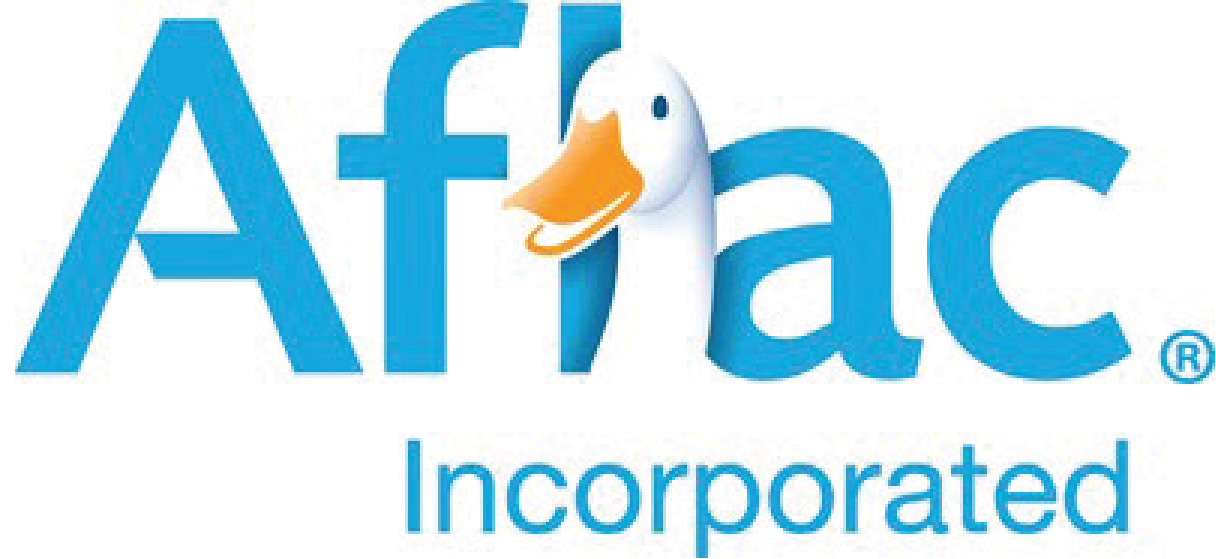
| PAYMENT OF FILING FEE (CHECK | |||||||
| ☑ | No fee | ||||||
| ☐ | Fee paid previously with preliminary materials | ||||||
| ☐ | Fee computed on table | ||||||
Notice of
2021
Annual Meeting
of Shareholders and Proxy Statement
Monday, May 3, 2021 at 10 a.m. ET

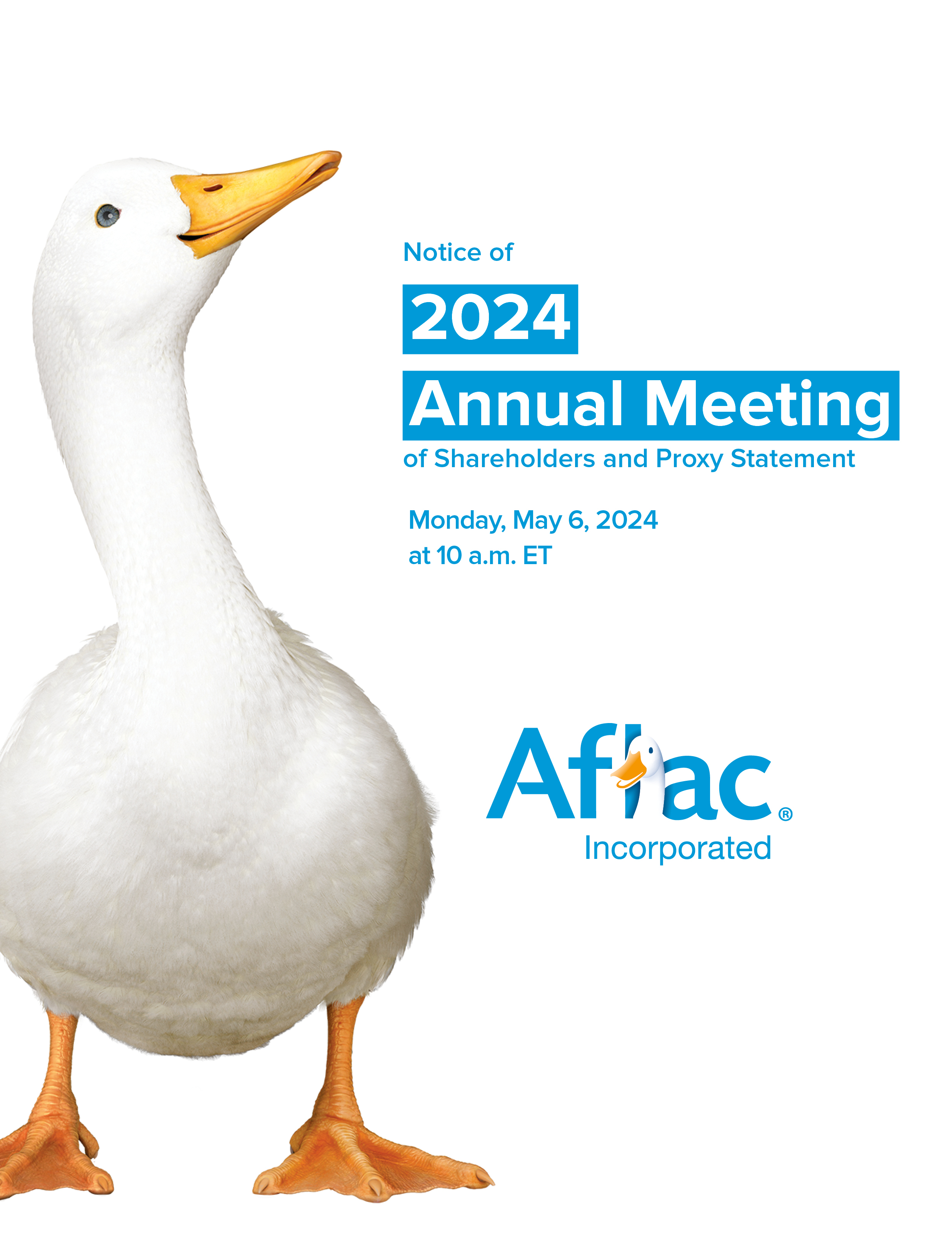
Our Long-Term Growth Strategy

Annual Meeting of Shareholders
You are cordially invited to attend the Annual Meeting of Shareholders (“Annual Meeting”) of Aflac Incorporated (the “Company”), through its subsidiaries, provides financial protection to our millions of policyholders and customers worldwide. The Company’s principal business is supplemental health and life insurance products with the goal to provide customers the best value in supplemental insurance products in the United States (U.S.) and Japan. For nearly seven decades, insurance policies of the Company’s subsidiaries have given policyholders the opportunity to focus on recovery, not financial stress. In the U.S., Aflac is the number one provider of supplemental health insurance products. Aflac Life Insurance Japan is the leading provider of cancer and medical insurance policies in force in Japan.

| 2024 PROXY STATEMENT | |||||
You are cordially invited to attend the Annual Meeting of Shareholders (“Annual Meeting”) of Aflac Incorporated. This year’s Annual Meeting will be held virtually. You will be able to attend the Annual Meeting, vote, and |  |  | |||||||||||||||||||||||
 | DATE AND TIME May 6, 2024 10:00 a.m. | ||||||||||||||||||||||||
 | VIRTUAL (ONLINE ONLY) www.virtualshareholdermeeting.com/ | ||||||||||||||||||||||||
 | |||||||||||||||||||||||||
You will be able to attend the Annual Meeting, vote, and submit your questions during the webcast. The Annual Meeting will be held for the following purposes, all of which are described in the accompanying Proxy Statement:
 | ||||||||||||||||||||
| To elect as Directors of the Company the |  | |||||||||||||||||||
 | ||||||||||||||||||||
 | RECORD DATE February 27, 2024 | |||||||||||||||||||
 |  | |||||||||||||||||||
| To consider a non-binding advisory proposal on the Company’s executive compensation (“say-on-pay”) |  |  | ||||||||||||||||||
How to Vote It is important that you vote your shares. We offer several easy and cost-effective voting methods for your convenience. | ||||||||||||||||||||
 |  | |||||||||||||||||||
| To ratify the appointment of KPMG LLP as the Company’s independent registered public accounting firm for the year ending December 31, |  |  | ||||||||||||||||||
In addition, any other business properly presented may be acted upon at the meeting and at any adjournments or postponements of the meeting.
It is important that you vote your shares. We offer several easy and cost-effective voting methods for your convenience.
 |  |  | See page 77 | |||||||||||||||||
In addition, any other business properly presented may be acted upon at the meeting and at any adjournments or postponements of the meeting. The accompanying proxy is solicited by the Company’s Board of Directors on behalf of the Company. The Proxy Statement and the Company’s Annual Report on Form 10-K for the year ended December 31, 2023, are enclosed.(1) The record date for determining which shareholders are entitled to vote at the Annual Meeting is February 27, 2024. Only shareholders of record at the close of business on that date, or their duly appointed proxies, will be entitled to vote at the Annual Meeting and any adjournment thereof. For more information on how to attend the virtual Annual Meeting, please see Appendix B of the Proxy Statement. Your vote is important! Even if you expect to attend the virtual Annual Meeting, please vote in advance. If you attend the Annual Meeting online, you may revoke your proxy by submitting a vote during the Annual Meeting. We are making the Proxy Statement and the form of proxy first available on or about March 21, 2024. By order of the Board of Directors,  |  | INTERNET Visit | ||||||||||||||||||
 | TELEPHONE If your shares are held in the name of a broker, bank, or other nominee, follow the telephone voting instructions, if any, provided on your proxy card. If your shares are registered in your name, call 1-800-690-6903 and follow the telephone voting instructions. You will need the 16-digit control number that appears on your proxy card. | |||||||||||||||||||
 | MAIL If you received a full package by mail, complete and sign the proxy card and return it in the enclosed postage pre-paid envelope. | |||||||||||||||||||
The accompanying proxy is solicited by the Company’s Board of Directors on behalf of the Company. The Proxy Statement and the Company’s Annual Report on Form 10-K for the year ended December 31, 2020, are enclosed.(2) The record date for determining which shareholders are entitled to vote at the Annual Meeting is February 23, 2021. Only shareholders of record at the close of business on that date will be entitled to vote at the Annual Meeting and any adjournment thereof.
Your vote is important! Even if you expect to attend the virtual Annual Meeting, please vote in advance. If you attend the Annual Meeting online, you may revoke your proxy by submitting a vote during the Annual Meeting.
By order of the Board of Directors,

J. Matthew Loudermilk
Secretary
March 18, 2021
Columbus, Georgia
J. Matthew Loudermilk Corporate Secretary March 21, 2024 Columbus, Georgia | (1)Important Notice Regarding the Availability of Proxy Materials for the Annual Meeting to be held on May |  | TABLET OR SMARTPHONE Scan the QR code that appears on your proxy card or notice using your mobile device. | |||||||||||||||||
| 2 | AFLAC INCORPORATED | ||||
As I reflect on 2023, I am very proud that our management, employees and sales distribution teams have continued to be resilient stewards of our business. Our goal is to provide customers with the best value in supplemental insurance products in the United States and Japan. As we embark on 2024, we will celebrate our 50th year of doing business in Japan and 50th year as a publicly traded company on the NYSE. We also are reminded that one thing has not changed since our founding in 1955: families and individuals still seek to protect themselves from financial hardship that not even the best health insurance covers. Today’s complex health care environment has produced incredible medical advancements – with incredible costs – and it’s more important than ever to have a partner. With our inventive approach to offering relevant products, we believe we are that partner. Growth For 2023, Aflac Incorporated reported $4.7 billion in net earnings, or $7.78 earnings per diluted share. As a result, net earnings per diluted share rose 12.3%. Adjusted earnings per diluted share* were $6.23, the best year in history despite a weakening yen and the impact of a reinsurance retrocession late in the fourth quarter. When adjusting for the $0.19 per diluted share impact of the yen, adjusted earnings per diluted share excluding the impact of foreign currency* were $6.43, which was a 13.4% increase year over year. | I am pleased with our sales growth in both Japan and the U.S. In early 2023, Aflac Japan completed the rollout of our new cancer product, and we rolled out our new medical product in mid-September that appeals to younger policyholders and provides an opportunity to older policyholders to update their coverage. In the U.S., we enhanced our cancer policy, delivering even greater value to our policyholders. At the same time, we continue to concentrate on scaling up our network dental and vision and our group life and disability businesses in the U.S. in an additional effort to grow our core supplemental health business. We have also improved persistency in the United States while maintaining strong persistency in Japan well above 90%. We will continue to pursue profitable growth in both the U.S. and Japan with an eye toward improving and maintaining strong persistency. Strategic Capital Deployment We place significant importance on continuing to achieve strong capital ratios in the U.S. and Japan on behalf of our policyholders and shareholders. In addition, we have taken proactive steps in recent years to defend cash flow and deployable capital against a weakening yen. We pursue value creation through a balance of actions including growth investments, stable dividend growth and disciplined, tactical stock repurchase. | 2023 marked the 41st consecutive year of dividend increases. We treasure our track record of dividend growth and remain committed to extending it, supported by the strength of our capital and cash flows. Last quarter, the Board put us on a path to continue this record when it increased the first quarter 2024 dividend 19% to $0.50. Additionally, we have remained tactical in our approach to repurchasing shares throughout 2023, which led to the historically high $700 million per quarter. As a result, we deployed $2.8 billion in capital to repurchase nearly 39 million of our shares in 2023. Combined with dividends, this means we delivered over $3.8 billion back to shareholders in 2023, while also investing in the growth of our business. At the same time, we have maintained our position among companies with the highest return on capital and lowest cost of capital in the industry. I like to think that it is efforts like the above that lead to recognition such as appearing on Fortune’s List of World’s Most Admired Companies for the 23rd time, ranking No. 1 in the Insurance: Life and Health industry as a long-term investment for the second consecutive year. Overall, I think we can say that 2023 was another strong year. We believe in the underlying strengths of our business and our potential for continued growth in Japan and the U.S. – two of the largest life insurance markets in the world. We are well-positioned as we work toward achieving long-term growth while also ensuring we deliver on our promise to policyholders. | |||||||
| * Adjusted earnings per diluted share and adjusted earnings per diluted share excluding foreign currency impact are not calculated in accordance with generally accepted accounting principles in the United States (GAAP). See Appendix A to this Proxy Statement | |||||||||
| LETTER FROM THE CHAIRMAN, CHIEF EXECUTIVE OFFICER AND PRESIDENT | 2024 PROXY STATEMENT | 3 | ||||||
Letter from the Chairman and Chief Executive Officer
March 18, 2021
Dear Fellow Shareholder:
When I wrote this letter last year, it would have been very difficult to foresee the gravity of what was soon to unfold for our society and for our company due to COVID-19. 2020 was certainly a year that tested the world, including all of us at Aflac Incorporated. While pandemic conditions are ongoing, I am proud to say that 2020 confirmed what I knew all along: the Company is strong, adaptable and resilient.
I want to thank you, our shareholders, as well as our employees and our sales distribution for supporting the people-first initiatives we spearheaded in both the U.S. and Japan in response to the COVID-19 pandemic. In Japan and the U.S., these actions included introducing work-from-home staffing models for our employees to ensure business continuity; expanding COVID-19 coverage and enhancing claims payment protocols to help get funds in the hands of policyholders when they needed us most; expanding premium payment grace periods; interest-free loans; virtual technology initiatives for our sales force; and charitable contributions to help frontline workers.
Consistent with our culture and identity as a socially responsible company, and given our remote working conditions, we stepped up our engagement with our employees through virtual town hall meetings and weekly touch-base letters in which we affirmed our commitment to being there for our policyholders, supporting our employees and sales teams personally and professionally, and creating an ongoing dialogue about social justice among other topics. We advanced our Environmental, Social, and Governance (ESG) disclosures with a dedicated report outlining our ESG policies and adoption of a formal reporting framework for going forward. We were pleased to appear on Fortune’s List of World’s Most Admired Companies for the 20th time, ranking in the Life and Health Category at No. 5 for “Long-Term Investment Value” and No. 3 for both “Use of Corporate Assets” and “Global Competitiveness.”
Even amid the challenges of the current backdrop, we remain focused on helping to provide protection to our policyholders, growing our business, being a good corporate citizen, and driving shareholder value. In doing so, we’ve gained the trust of more than 50 million people worldwide. Following are some additional highlights that stand out from 2020:

GROWTH
While sales were impacted considerably in both Japan and the U.S. due to constrained face-to-face opportunities associated with social distancing protocol and the COVID-19 pandemic, we did anything but sit still. We maintained forward motion, accelerating investment in our platforms and technology while continuing strong earnings performance. In 2020, Aflac Incorporated generated $4.8 billion in net earnings, or $6.67 per diluted share, up 44.6% and 50.6% from last year, respectively, and an increase in adjusted earnings per diluted share on a currency-neutral basis of 10.8% to $4.92, driven by a reduction in the tax rate and higher share accretion. Our results are especially meaningful given pandemic conditions, the low-interest-rate environment in Japan, and absorbing our extensive investments in the business to drive future earned premium growth, which will remain a critical strategic focus for 2021.
STRATEGIC CAPITAL DEPLOYMENT
We place significant importance on continuing to achieve strong capital ratios in the U.S. and Japan on behalf of our policyholders and shareholders. When it comes to capital deployment, we pursue value creation through a balance of actions including growth investments, stable dividend growth, and disciplined, tactical stock repurchase. Accordingly, our Board of Directors increased the cash dividend 3.7% in 2020, marking the 38th consecutive year of dividend increases. We are very proud of and seek to extend this track record, which is supported by the strength of our capital and cash flows and evidenced by the announcement of a 17.9% increase in the quarterly cash dividend effective with the first quarter of 2021. Fortunately, we entered this pandemic in a very strong capital and liquidity position, which allowed us to confidently repurchase $1.5 billion, or 37.9 million of our shares, in 2020, consistent with our tactical
 |
| “We are well-positioned as we work toward achieving long-term growth while also ensuring we deliver on our promise to policyholders. ” |
Doing the Right Thing: The Aflac Way Doing the right thing is engrained in The Aflac Way, which has been the cornerstone of how we do business in the U.S. and Japan. Operating this way, we are privileged to help provide financial protection to our policyholders during their time of need. We believe in cultivating and welcoming diversity in our operations, workforce, management team, and Board. We have found that this approach makes good business sense by enabling us to serve our customers better. Plus, we believe people want to do business with a company doing the right thing. As the pioneer of supplemental cancer insurance in both the U.S. and Japan, it has perhaps been most visible in our dedication to children facing cancer and other serious diseases. 2023 marked the 28th year of our partnership with the Aflac Cancer and Blood Disorders Center of Children’s Healthcare of Atlanta, which has become nationally renowned as one of the leading childhood cancer, hematology, and blood and marrow transplant programs in the United States. Contributions from our all-commission sales force, our employees, our executives and Board have exceeded the $173 million mark. 2023 also represented the 23rd year of our partnership with the Aflac Parents House in Japan. Over the years, more than 150,000 pediatric patients and their family members have | called one of the three Aflac Parents House locations a home-away-from home while receiving treatment for cancer or other serious diseases. We also just completed the fifth full year in the U.S. and the fourth full year in Japan of offering My Special Aflac Duck, our smart comforting companion that helps children feel less alone by using state-of-the-art interactive technology during their cancer treatment. As you will note, Dr. Barbara Rimer will be retiring and not standing for re-election at the 2024 annual meeting. I would like to take this opportunity to express my gratitude to Dr. Rimer for her many years of insightful contributions and dedicated service to the Company since 1995. Her service was invaluable, especially during the pandemic, and we are so grateful. With these topics as a backdrop, we are privileged to be stewards of the trust and resources you, our owners, place in Aflac Incorporated every day, and we thank you for your support. It is my pleasure to invite you to virtually attend the 2024 Annual Meeting of Shareholders on Monday, May 6, 2024, where you can learn more about Aflac Incorporated’s recent business performance and strategy for the future. I encourage you to review the proxy materials and Annual Report on Form 10-K as well as Aflac Incorporated’s most recent Business | and Sustainability Report. Then, please vote your shares, even if you plan to attend the virtual Annual Meeting. We want to be sure your shares and your viewpoints are represented. Sincerely,  Daniel P. Amos CHAIRMAN, CHIEF EXECUTIVE OFFICER AND PRESIDENT | ||||||
Letter from the Chairman
| 4 | AFLAC INCORPORATED | ||||
It is an honor to serve you as Lead Non-Management Director, alongside such an eminent team of Directors. These fellow Board members bring their skills, expertise and experience from such a broad range of fields, industries and companies. In 2023, we maintained our focus on overseeing the risk and strategy of the Company. In this letter, I want to highlight some of the key topics of oversight in 2023. Risk Oversight Our Board provided oversight of the pertinent risks both for the industry and to the Company, while carefully monitoring traditional risks associated with investments and our products and maintaining strong capital ratios. The Board has overseen significant advancements in information security and enhanced information security policy. The goal is to ensure that the Company’s information assets, data, and the data of our customers, are protected. Board Succession, Refreshment and Onboarding Our Board retains its balance of tenured members as well as a refreshment with newer members. Independent Board members average about six years of service that provide a balance of expertise for you, the shareholders. Our Board is diverse not only with women and/or people of color comprising approximately 60% of its membership, but also in terms of experience and expertise in a wide range of disciplines, including public health, cybersecurity, investment and finance, insurance operations, the Japanese market, regulatory and risk | management, and marketing and public relations. By combining a diversified membership with such broad expertise and multi-disciplinary skills, we have established an adaptable, insightful and cohesive board that is equipped to pivot quickly to navigate ever-evolving markets. I also want to thank Dr. Barbara Rimer for her many years of service on the Board. In anticipation of this event, the Board was fortunate to have maintained public health expertise on the Board with the addition of Dr. Miwako Hosoda in 2023. Dr. Hosoda brings nearly 30 years of experience in the field of public health in Japan, our largest market. Corporate Finance and Investments In 2023, our investment portfolio continued to benefit from our disciplined strategic asset allocation process. This approach serves as the core to managing long-term asset performance expectations to meet our objectives for capital, risk and liquidity. We also placed equity investments in specialized asset classes as well as Sustainability investments. The Aflac Global Investments team has built a high-quality portfolio that we believe will serve our stakeholders well no matter the economic environment. Strategic Corporate Development As we pursue new ways to meet the needs of consumers, businesses and shareholders, we will continue to invest in our network dental and vision and group life, disability, and absence management platforms. | These new business lines modestly impact the top line in 2023. We will continue to leverage these new platforms to enable our core products for future long-term growth. Commitment To Sustainability Aflac Incorporated has been carbon neutral in Scope 1 and Scope 2 emissions since 2020 and focused on being and achieving net zero emissions by 2050. We will continue to evaluate and evolve our approach to achieving our objectives. We have posted our Sustainability Policies and Statements at investors.aflac.com under “Sustainability” for several years, and we updated them in 2023 with Occupational Health and Safety in the Workplace and Responsible Investment Stewardship and Engagement policies. Such transparency and efforts to improve our sustainability have received external recognition, too. In 2023, Aflac Incorporated was included on the Dow Jones Sustainability North America Index for the 10th time and on Bloomberg’s Gender-Equality Index for the fourth consecutive year. Most recently, Ethisphere recognized Aflac Incorporated as one of the World’s Most Ethical Companies for the 18th consecutive year, remaining the only insurance company in the world to receive this honor every year since this award was first introduced in 2007. | ||||||
| LETTER FROM THE LEAD NON-MANAGEMENT DIRECTOR | 2024 PROXY STATEMENT | 5 | ||||||
 | “As we shape the Aflac of the future, we do so knowing the Company’s success and financial performance are rooted in our commitment to our purpose.” | ||||
In addition, we have also worked to be a reflection of the communities that we serve by being an inclusive workplace and cherishing the value that diversity can bring. To reinforce our commitment to sustainability, officers have had a short-term incentive compensation modifier based on core sustainability targets since 2021. While the modifier led to no adjustment to officers’ short-term incentive compensation in 2023, we are still proud of our achievements related to responsible investing, diverse leadership and use of sustainable electricity. Shareholder Engagement We are proud to have been the first publicly traded company in the United States to voluntarily allow shareholders a say-on-pay vote. This is a prime example of how we are responsive as a Board and as a Company to our shareholders. We communicate with our shareholders on a regular basis to understand the issues and concerns that are important. We incorporate this feedback into our | decision-making process. We believe that open communications can have a positive influence on our performance, and we look forward to continuing open discussion with our shareholders going forward. As Lead Non-Management Director, I will continue to engage with our investors, seek insight into their perspectives, and explore the viewpoints and positions of those who invest in our business. The Board looks forward to continuing its ongoing dialogue with investors and applying that feedback to help inform business matters as they emerge. We thank you for your support and the privilege of representing you in Aflac Incorporated. | With these vital topics in mind, I encourage you to review the accompanying Proxy Statement and associated materials and vote before our virtual Annual Meeting on May 6, 2024. It is my pleasure, and my privilege, to serve on Aflac Incorporated’s Board, and I look forward, as a fellow shareholder, to witness how the Company works every day to uphold its promises. Sincerely,  W. Paul Bowers LEAD NON-MANAGEMENT DIRECTOR | ||||||
| 6 | AFLAC INCORPORATED | ||||
2023 BUSINESS HIGHLIGHTS | ||||||||
 | ||||||||
 | ||||||||
2023 Perquisites | ||||||||
 | ||||||||
| 2024 PROXY STATEMENT | 7 | ||||
2023 BUSINESS HIGHLIGHTS In 2023, the Company delivered strong operating results. |  | ||||||||||||||||||||||
| NET EARNINGS | EARNINGS PER DILUTED SHARE (EPS) | RETURN ON EQUITY (ROE) | |||||||||||||||||||||
$4.7B 5.5%p | $7.78 12.3%p | 22.1% | |||||||||||||||||||||
| ADJUSTED EARNINGS EX-FX* | ADJUSTED EPS EX-FX* | ADJUSTED RETURN ON EQUITY (AROE) EX-FX* | |||||||||||||||||||||
$3.8B 6.4%p | $6.43 13.4%p | 14.2% | |||||||||||||||||||||
NEW ANNUALIZED PREMIUM SALES(1) - AFLAC JAPAN (IN YEN) | NEW ANNUALIZED PREMIUM SALES(1) - AFLAC U.S. | ||||||||||||||||||||||
10.9%p | 5.0%p | ||||||||||||||||||||||
| CASH DIVIDEND | REPURCHASED SHARES | 3-YEAR TOTAL SHAREHOLDER RETURN (“TSR”) | |||||||||||||||||||||
5.0%p | $2.8B | +99.6% | |||||||||||||||||||||
*Adjusted earnings and adjusted earnings per diluted share, excluding foreign currency impact, and AROE, excluding foreign currency impact, are not calculated in accordance with generally accepted accounting principles in the United States (GAAP). See Appendix A to this Proxy Statement for definitions of these non-GAAP measures and reconciliations to the most comparable GAAP financial measures. (1)As discussed in Item 7. Management’s Discussion and Analysis of Financial Condition and Results of Operations in the Company’s 2023 Annual Report on Form 10-K. Prior-year amounts have been adjusted for the adoption of accounting guidance on January 1, 2023 related to accounting for long-duration insurance contracts. For more complete information regarding the Company’s 2023 performance, please review the Company’s Annual Report on Form 10-K for the year ended December 31, 2023. | |||||||||||||||||||||||
| 8 | AFLAC INCORPORATED | 2023 BUSINESS HIGHLIGHTS | ||||||
approach. We believe our capital position, by any measure, remains robust given our risk profile, and we continue to have among the highest return on capital and lowest cost of capital in the industry. We place significant importance on continuing to achieve a strong risk-based capital (RBC) and solvency margin ratio (SMR) on behalf of our policyholders and shareholders alike in the U.S. and Japan. Through a combination of dividends and share repurchase, we returned about $2.3 billion to our shareholders in 2020.
CORPORATE CULTURE OF DOING THE RIGHT THING – THE AFLAC WAY
While this was a year filled with unparalleled challenges, our belief in fostering and welcoming all forms of diversity and viewpoints in our operations remains unchanged throughout our workforce, management team, and in the composition of our Board. Not only is this the right approach to take, but it enhances our ability to respond to all of our constituents and live up to the commitments we make to our customers, to our fellow employees and to all the people who rely on us.
Sustainability Highlights
 | Workforce Diversity •As of December 31, 2023, women accounted for 54% of Aflac Japan employees and 33% of Aflac Japan leadership roles. Women also held 27% of Aflac Japan management roles, as part of Aflac Life Insurance Japan Ltd’s longer-term plan to increase this percentage to 30% by 2025. •As of December 31, 2023, 49% of Aflac U.S. and the Company employees located in the U.S. were people of color and 66% were women. Women also occupied 51% of leadership roles located in the U.S. and 37% of senior management roles located in the U.S. In 2023, 57% of new hires located in the U.S. were people of color and 68% were women. | ||||
 | Community Investment and Philanthropy •My Special Aflac Duck®is a “smart” robotic companion designed to help childrenwith cancer and sickle cell disease. We aim to put a My Special Aflac Duck in the hands of every child, age 3 and above, diagnosed with cancer and sickle cell disease in the U.S., Japan and Northern Ireland and has given My Special Aflac Ducks to more than 27,000 children through 2023. •We and our employees and agents are responsible for: •More than 150,000 pediatric patientsand their family members who have called Aflac Parents House a home-away-from-home while receiving treatment for serious illnesses, like cancer. •$173 million in support of Aflac Cancer and Blood Disorders Center of Children’s Healthcare of Atlanta, helping make it one of the top pediatric cancer programs in the United States by U.S. News and World Report. | ||||
 | Environment •Reduced combined Scope 1 and 2 market-based greenhouse gas emissions by more than 90% from 2007 to 2022 •Expect 2023 to be the 4th consecutive year for being carbon neutral for Scope 1 and 2 emissions •Goal of net zero emissions by 2050 | ||||
Doing the right thing is embodied in The Aflac Way, which is woven into the actions of those who represent the Company everywhere. One of the seven commitments of the Aflac Way I referred to in my letter last year was “Treat Everyone with Respect and Care,” and I am proud to say that this commitment was honored time and time again in 2020. This commitment extends to our outreach into the communities in which we do business and operate. This takes shape in various ways within the Aflac family, but most prominently in our dedication to children facing cancer and their families. In addition to marking the 65th year since Aflac Incorporated’s founding and the Aflac Duck’s 20th birthday, 2020 marked the 25th anniversary of our partnership with the Aflac Cancer and Blood Disorders Center of Children’s Healthcare of Atlanta. It also marked the second year in the U.S. and the first full year in Japan of My Special Aflac Duck, our smart comforting companion that helps children feel less alone by using interactive technology during their cancer treatment.
In closing, I would like to express my gratitude to you, our shareholders, for putting your faith, confidence, trust, and resources in Aflac Incorporated. As we look ahead, delivering on our promise to be there for all of our constituents—you, our shareholders; our employees and sales force; and our policyholders and customers—will remain our priority because that is not only what sets us apart, it’s just who we are.
With these updates as a backdrop, it is my pleasure to invite you to virtually attend the 2021 Annual Meeting of Shareholders on Monday, May 3, 2021, where you can learn more about Aflac Incorporated’s recent business performance and strategy for the future. I encourage you to review the enclosed proxy materials and Annual Report on Form 10-K as well as Aflac Incorporated’s 2020 Business and Sustainability Report, which can be found at esg.aflac.com,“Sustainability” tab to learn more about our company and our latest accomplishments. Then, please vote your shares, even if you plan to attend the virtual Annual Meeting. We want to be sure your shares and your viewpoints are represented.
Sincerely,

Daniel P. Amos
CHAIRMAN AND CHIEF EXECUTIVE OFFICER
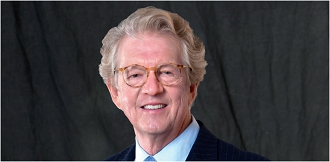
 | 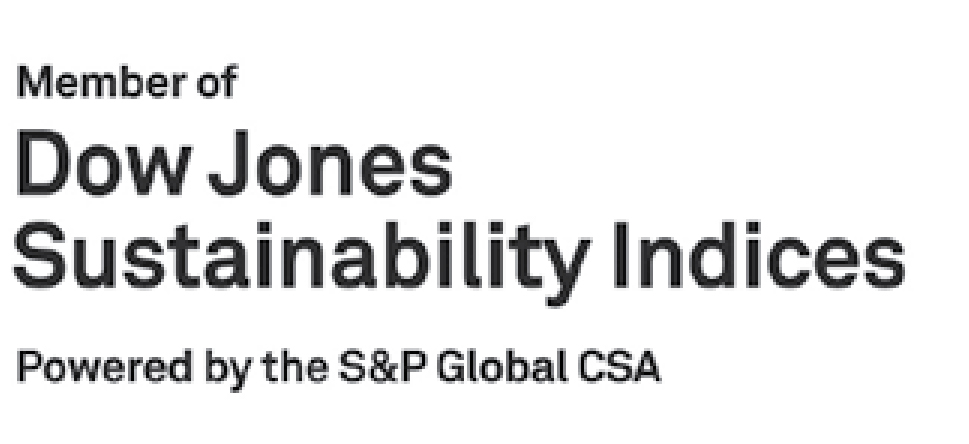 | 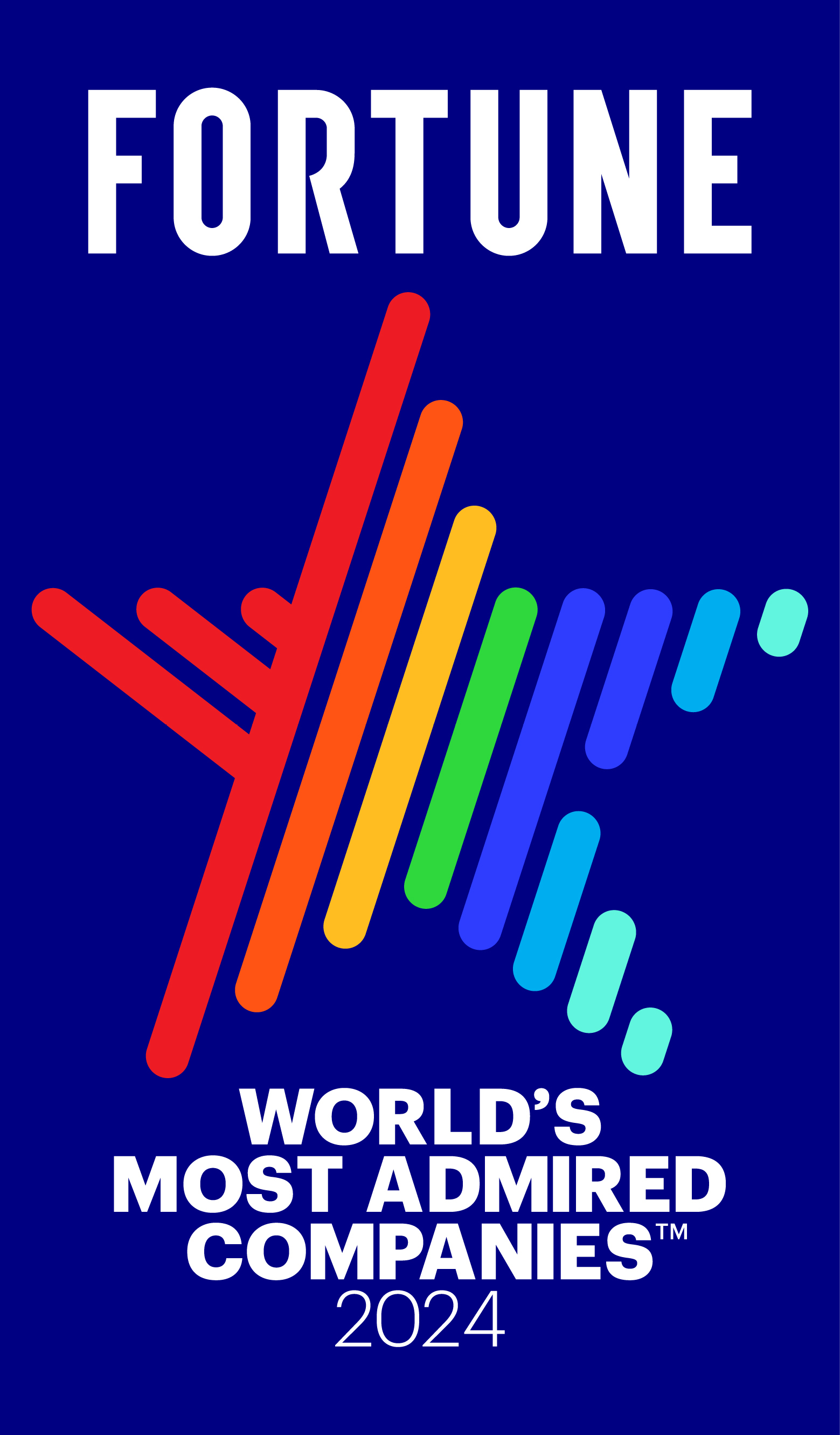 | ||||||
Principles for Responsible Investment (PRI) Signatory In 2021, Aflac Incorporated became a PRI Signatory, which works to understand the investment implications of ESG factors and to support its international network of investor signatories in incorporating these factors into investment and ownership decisions. | Dow Jones Sustainability North America Index (10th year), In 2023, the Company was included in the North American index and received high marks for Corporate Governance, Information Security/Cybersecurity & System Availability, and Tax Strategy. | Fortune’s World’s Most Admired Companies (23rd year), ranking No. 1 in the Insurance: Life and Health category as a long-term investment for the second consecutive year. | ||||||
 | 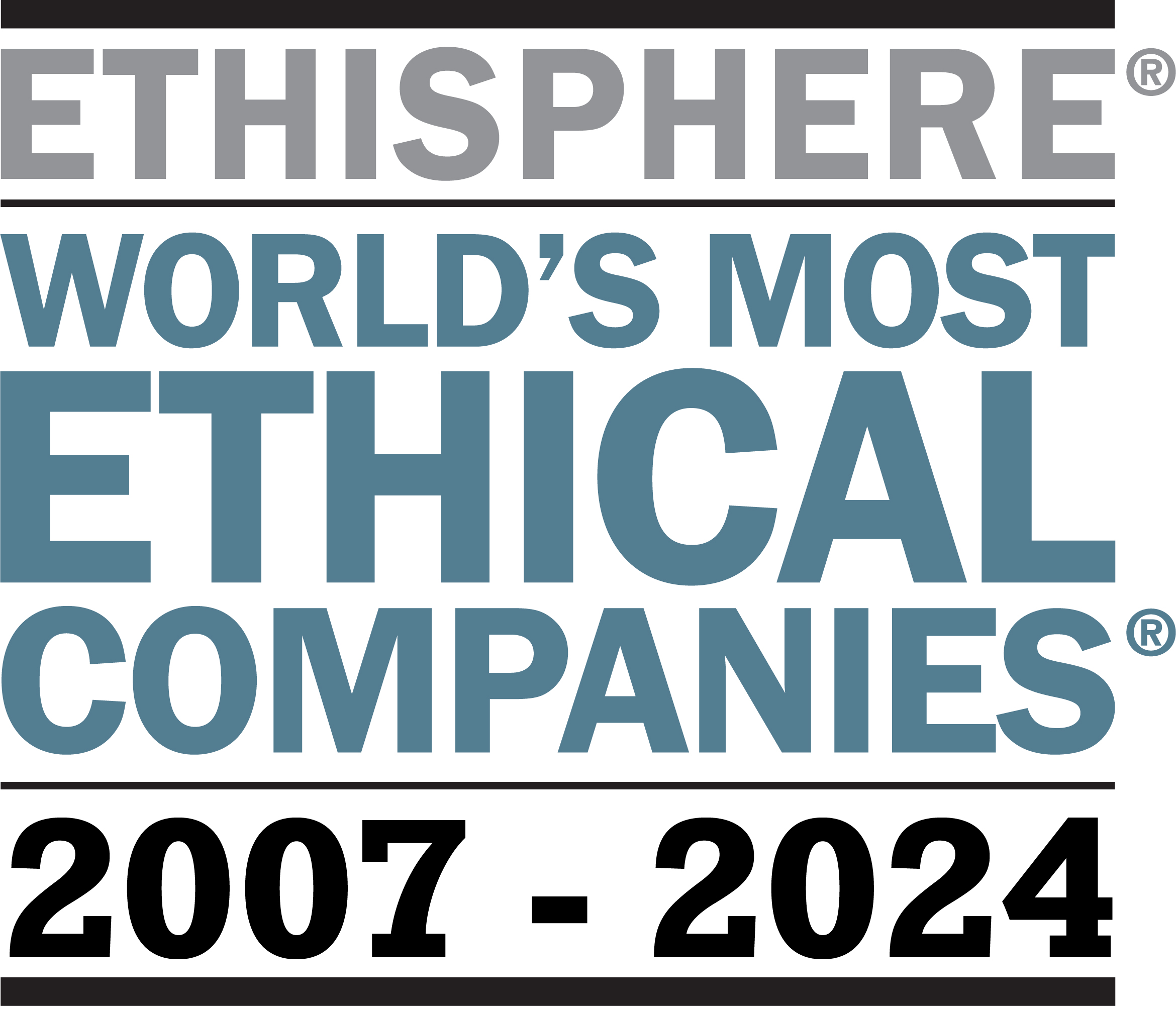 | 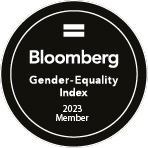 | ||||||
Points of Light’s Civic 50 List (6th consecutive year), which showcases how leading companies are moving social impact, civic engagement and community to the core of their business. | Ethisphere’s World’s Most Ethical Companies (18th consecutive year), making it the only insurance company in the world to hold this distinction every year since the inception of the honor in 2007. | Bloomberg’s Gender-Equality Index (4th consecutive year), which tracks the financial performance of public companies committed to supporting gender equality through policy development, representation, and transparency. | ||||||
| 2024 PROXY STATEMENT | 9 | |||||||
Letter from the Lead Non-Management Director
March 18, 2021
To My Fellow Shareholders:
I am privileged to serve as Lead Non-Management Director, working with an esteemed team of Board members who demonstrate expertise and acumen in a broad range of disciplines. In the face of an unimaginable, challenging year, the resolve of this Board was stronger than ever as we leveraged our expertise to oversee Aflac Incorporated’s effective and comprehensive response to the global COVID-19 pandemic. Throughout it all, we worked together as one team, while maintaining corporate governance practices and focusing on our business continuity and strategy. I want to share some of the key areas on which my fellow directors and I have focused this past year.
GLOBAL COVID-19 PANDEMIC RESPONSE: ILLUSTRATES THE IMPORTANCE OF A WELL-ROUNDED BOARD
Just as we promote diversity within our Company operations, we cultivate diversity and well-rounded expertise within our Board to ensure we have a 360-degree view of our operations. Looking at 2020, the importance and benefit from this approach cannot be overstated. For example, the Aflac Incorporated Board drew upon the experience of all its members, and in particular Dr. Barbara Rimer, dean of the University of North Carolina Gillings School of Global Public Health, whose public health expertise was invaluable in helping guide us through the pandemic. Together, the team worked in lockstep to ensure proper oversight and that management was fully engaged in taking care of employees, policyholders, shareholders, and the community as we navigated the pandemic. Notable action-items include the broad expertise in the medical arena that prompted us to pivot early to remote staffing models; the expertise in IT and cybersecurity that helped accelerate virtual technology and protect sensitive information; and the risk oversight that helped ensure controls were in place. While the number of formally planned meetings remained unchanged, the scope of information and communications increased substantially as the Board moved swiftly to take action during this unprecedented time.

STRATEGIC CORPORATE DEVELOPMENT
Early in 2020, it became clear that despite the challenges we were facing, it was vital to advance the momentum of our investment in the long-term growth of our Company. This momentum included integrating and building upon our 2019 acquisition of Argus (now Aflac Dental & Vision) for our planned national launch in 2021 as well as the 2020 closing of our acquisition of Zurich North America’s group benefits business. These two acquisitions help secure a more prominent spot when enrolling policyholders, which better positions Aflac U.S. for future success. Also in 2020, weclosed on a distribution alliance and ownership stake with Trupanion in the quickly growing market of pet insurance.
COMMITMENT TO SUSTAINABILITY
We began establishing, defining, and living Aflac Incorporated’s corporate purpose many years ago, even before this became a topic of interest among our investors. It was first thought of as the way we operate and later as the Aflac Way — guiding principles that exemplifies the compassion, ethics and spirit of the Company. The Aflac Way is an integral part of our corporate social responsibility and sustainability in creating long-term value for shareholders. We have seen moreinterest in Environmental, Social, and Governance (ESG) topics from investors and other stakeholders over the last several years. Consistent with our culture as a socially responsible company, we have advanced our ESG disclosures with a dedicated report outlining our ESG policies and capturing ourefforts through key disclosure frameworks, namely the Sustainability Accounting Standards Board (SASB) and the Task Force on Climate-related Financial Disclosures (TCFD). To be a steward of the planet, we are committing this year to expanding our carbon emissions goal to be net zero, including our Scope 3 emissions, by 2050. This global net-zero climate commitment will demand a comprehensive and transparent approach, and thus we will provide appropriate reporting and hold ourselves accountable along the way. We have enhanced our disclosure in other meaningful ways this past year by posting online our approach to ESG Investing, Tax, Carbon Neutrality, Human Rights, Human Capital Management, Diversity and Inclusion, Supply Chain Approach and Philosophy, Cybersecurity, and Aflac Global Investments ESG Investing. Visit Aflac Incorporated’s ESG site, esg.aflac.com, for these and additional disclosures that are aligned with our spirit of transparency and clarity on where we stand as a Company.
Letter from the Lead Non-Management Director
We are proud our efforts to increase our transparency and improve our sustainability have received external recognition. The Company was recognized by Ethisphere as one of the World’s Most Ethical Companies for the 15th consecutive year, remaining the only insurance company in the world to receive this honor every year since this award was first introduced in 2007. For the second time, Aflac Incorporated was recognized on Bloomberg’s Gender-Equality Index, which tracks the financial performance of public companies committed to supporting gender equality through policy development, representation, and transparency.
RISK OVERSIGHT
It is important that our Board maintains its focus on identifying risks that are relevant to both the industry and to the Company. Along with carefully monitoring traditional risks associated with investments and our product risk profile, as well as maintaining strong capital ratios and managing operational risk, the Board has overseen significant advancements in information security. The Board has enhanced our information security policy with the goal of ensuring that the Company’s information assets and data, and the data of its customers, are appropriately protected.
As lead director, I will continue engaging our investors, gaining insight into their perspectives, and considering the viewpoints and positions of those who invest in our business.
The Board looks forward to continuing its ongoing dialogue with investors and acting upon that feedback, and we thank you for your support and the privilege of representing you and your shares in Aflac Incorporated. With these vital topics in mind, I encourage you to review the accompanying Proxy Statement and associated materials and to vote your shares before our virtual Annual Meeting on May 3, 2021. It is my pleasure, and my privilege, to serve on Aflac Incorporated’s Board, and I look forward, as a fellow shareholder, to the many ways the Company will continue upholding its promises.
Sincerely,

W. Paul Bowers
LEAD NON-MANAGEMENT DIRECTOR

 | |||||||||||

This summary highlights information contained elsewhere in this Proxy Statement, but it does not contain all of the information you should consider. For more information, please refer to the following:
AGENDA AND VOTING MATTERS
 | nominees named in this |  | proxy statement. | ||||
 | |||||||
 |  | ||||||
 | |||||||
 |  | ||||||
 | |||||||
Please read the entire Proxy Statement before voting. This Proxy Statement and the accompanying proxy are being delivered to shareholders on or about March 18, 2021.
For more complete information regarding the Company’s 2020 performance, please review the Company’s Annual Report on Form 10-K for the year ended December 31, 2020. In this Proxy Statement, the terms “Company,” “we,” or “our” refer to Aflac Incorporated. The term “Aflac” refers to the Company’s subsidiary, American Family Life Assurance Company of Columbus. The term “Aflac U.S.” refers collectively to the Company’s United States insurance subsidiaries, Aflac; American Family Life Assurance Company of New York (Aflac New York), a wholly owned subsidiary of Aflac; Continental American Insurance Company (CAIC), branded as Aflac Group Insurance; and Tier One Insurance Company (TOIC); as well as Argus Dental & Vision, Inc. (Argus), a benefits management organization and national network dental and vision company. The term “Aflac Japan” refers to Aflac Life Insurance Japan Ltd. The term “Aflac Global Investments” refers to the Company’s asset management subsidiary, Aflac Asset Management LLC and its management subsidiary in Japan, Aflac Asset Management Japan Ltd.
Proxy Summary
| Election of Directors | |||||||||||||
Each Director stands for election annually. The following provides summary information about the | |||||||||||||
 | See page 13 | ||||||||||||
 | The Board of Directors recommends a vote FOR |  | |||||||||||
| Director | Committee Memberships | ||||||||||
| Name | IND | Age | Since | AR | C | CD | CG | CSR | E | FI | |
 | DANIEL P. AMOS Chairman and Chief Executive Officer, Aflac Incorporated | 69 | 1983 | ● | ● | ||||||
 | W. PAUL BOWERS Lead Director Chairman and Chief Executive Officer of Georgia Power Co. | ● | 64 | 2013 | ● | ● | ● | ● | |||
 | TOSHIHIKO FUKUZAWA President and CEO, Chuo Real Estate Co., Ltd. | ● | 64 | 2016 | ● | ||||||
 | THOMAS J. KENNY Former Partner and Co-Head of Global Fixed Income, Goldman Sachs Asset Management | ● | 57 | 2015 | ● | ● | ● | ||||
 | GEORGETTE D. KISER Operating Executive, The Carlyle Group | ● | 53 | 2019 | ● | ● | |||||
 | KAROLE F. LLOYD Certified Public Accountant and retired Ernst & Young LLP audit partner | ● | 62 | 2017 | ● | ● | ● | ||||
 | NOBUCHIKA MORI Representative Director, Japan Financial and Economic Research Co. Ltd. | ● | 64 | 2020 | |||||||
 | JOSEPH L. MOSKOWITZ Retired Executive Vice President, Primerica, Inc. | ● | 67 | 2015 | ● | ● | ● | ● | |||
 | BARBARA K. RIMER, DrPH Dean and Alumni Distinguished Professor, Gillings School of Global Public Health, University of North Carolina, Chapel Hill | ● | 72 | 1995 | ● | ● | |||||
 | KATHERINE T. ROHRER Vice Provost Emeritus, Princeton University | ● | 67 | 2017 | ● | ● | |||||
 | MELVIN T. STITH Dean Emeritus of the Martin J. Whitman School of Management at Syracuse University | ● | 74 | 2012 | ● | ● | ● | ||||
| our executive compensation program. | ||||||||||||
Proxy Summary
BOARD TENURE
2021 Independent Director nominees (10)

7 of 10 Independent Directornominees are minority and or women
DIVERSITY OF SKILLS, EXPERIENCE AND ATTRIBUTES
2021 all Director nominees (11)

Corporate Governance Highlights
 | |
 | |
 | |
 | |
 | |
 | |
 | |
 | |
 |
 |  |
percentage of the votes cast in favor of election of the nominees
Corporate Social Responsibility and Sustainability Highlights
We are proud of the accolades we have received, a handful of which are listed below, and we invite you to read Aflac Incorporated’s 2020 Business and Sustainability Report, at esg.aflac.com, to learn more about our initiatives.
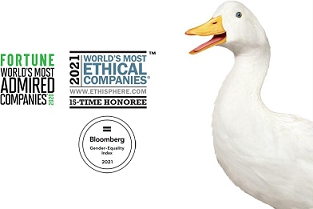
Proxy Summary
| Executive Compensation (“Say-on-Pay”) | |||||||||||
We are committed to achieving a high level of total return for our | |||||||||||
 | See page 38 | ||||||||||
 | The Board of Directors and the Audit and Risk Committee recommend a vote FOR the selection of KPMG LLP. | ||||||||||
Ratification of Auditors In February 2024, the Audit and Risk Committee voted to appoint KPMG LLP, an independent registered public accounting firm, to perform the annual audit of the Company’s consolidated financial statements for fiscal year 2024, subject to ratification by its shareholders. | |||||||||||
 |  | See page 77 | |||||||||
| 10 | AFLAC INCORPORATED | VOTING ROADMAP | ||||||
 |  | Lead Non-Management Director |  | 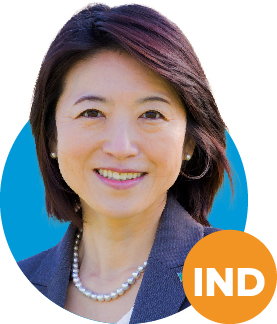 | ||||||||||
DANIEL P. AMOS, 72 Chairman, Chief Executive Officer and President, Aflac Incorporated Director Since 1983 Committees: E, FI | W. PAUL BOWERS, 67 Retired Chairman and Chief Executive Officer, Georgia Power Co. Director Since 2013 Committees: AR*, CD, CSR, E | ARTHUR R. COLLINS, 64 Founder and Chairman of theGROUP Director Since 2022 Committees: CG, CSR | MIWAKO HOSODA, 54 Professor, Seisa University Director Since 2023 | |||||||||||
 |  |  | 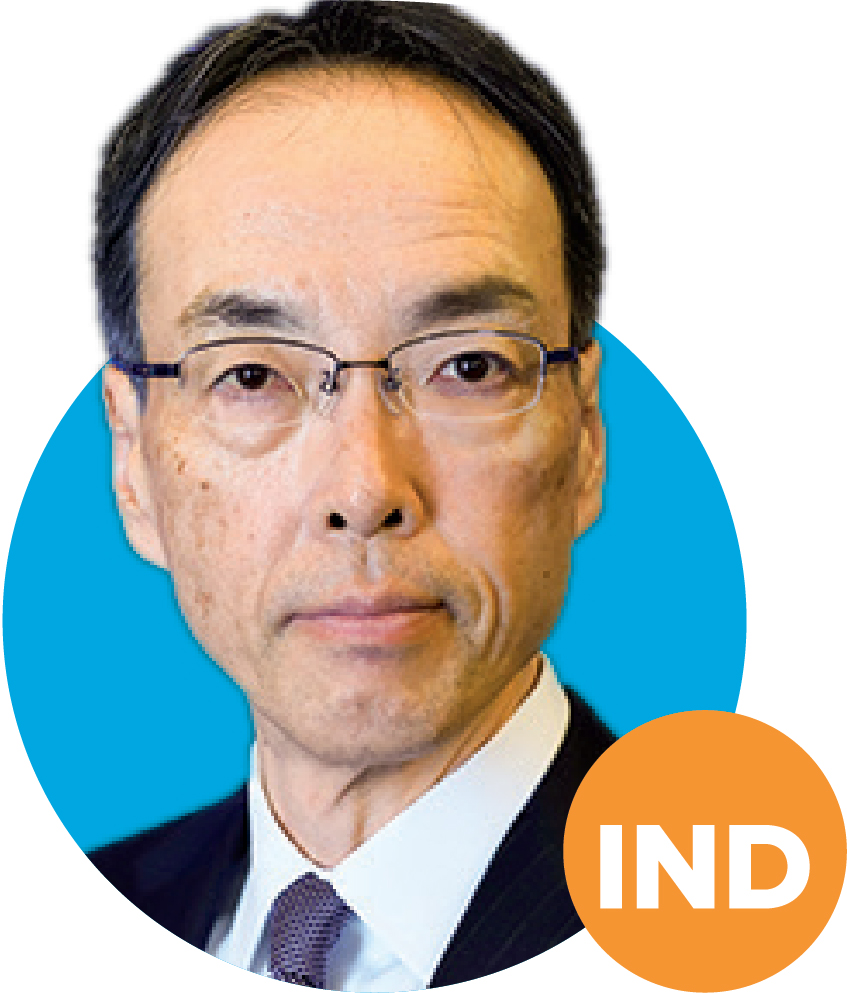 | |||||||||||
THOMAS J. KENNY, 60 Former Partner and Co-Head of Global Fixed Income, Goldman Sachs Asset Management Director Since 2015 Committees: CD, CSR, FI | GEORGETTE D. KISER, 56 Operating Executive, The Carlyle Group Director Since 2019 Committees: AR*, C | KAROLE F. LLOYD, 65 Certified Public Accountant and retired Ernst & Young LLP audit partner Director Since 2017 Committees: AR*, CD, E, FI | NOBUCHIKA MORI, 67 Representative Director, Japan Financial and Economic Research Co. Ltd. Director Since 2020 Committees: CG, FI | |||||||||||
 |  | |||||||||||||
JOSEPH L. MOSKOWITZ, 70 Retired Executive Vice President, Primerica, Inc. Director Since 2015 Committees:AR*, C, CD, E | KATHERINE T. ROHRER, 70 Vice Provost Emeritus, Princeton University Director Since 2017 Committees: C, CG, E | |||||||||||||
| Committee Key | |||||||||||||||||||||||
| AR | Audit & Risk | C | Compensation | CD | Corporate Development | CG | Corporate Governance | ||||||||||||||||
| CSR | Corporate Social Responsibility & Sustainability | E | Executive | FI | Finance & Investment | l | Chair | ||||||||||||||||
 | Independent | * | Financial Expert | ||||||||||||||||||||
| VOTING ROADMAP | 2024 PROXY STATEMENT | 11 | ||||||
 | 2 | 0-3 Years | 6 of 9 Independent Director Nominees are people of color and/or women | ||||||||
| 4 | 4-7 Years | ||||||||||
| 3 | 8+ Years | ||||||||||












 Annual director elections Annual director elections Majority vote standard for director elections Majority vote standard for director elections  Independent Lead Non-Management Director Independent Lead Non-Management Director Active and responsive shareholder engagement process Active and responsive shareholder engagement process Annual Board evaluations, including individual director interviews Annual Board evaluations, including individual director interviews |  Shareholder ability to call special meetings Shareholder ability to call special meetings Shareholder right of proxy access Shareholder right of proxy access  Robust CEO succession planning process Robust CEO succession planning process Director mandatory retirement age Director mandatory retirement age | ||||
| 12 | AFLAC INCORPORATED | VOTING ROADMAP | ||||||
| Independent Oversight | •The Board’s independent Compensation Committee oversees the program. | ||||
 | •The Compensation Committee retains an independent compensation consultant that reports only to that Committee. | ||||
 | •The independent compensation consultant briefs the full Board annually on CEO pay and performance alignment. | ||||
 | •All employees are prohibited from hedging Company stock. •Officers and Directors may not pledge the Company’s stock or, unless approved by the Compensation Committee, enter into 10b5-1 plans. •We do not provide change-in-control excise tax gross-ups. •All employment agreements contain double trigger change-in-control requirements. | ||||
| Long-Standing Commitment | •We have had a clawback policy since 2007. •We were the first public company in the U.S. to voluntarily provide shareholders with a say-on-pay vote – three years before such votes became mandatory. | ||||
 | |||||
 | |||||
 | •Executive officers and Directors have been subject to stock ownership guidelines for almost two decades. | ||||
 | |||||
 | |||||
 | |||||
The effect of COVID-19 created un-planned volatility in our results for the Aflac U.S. and Aflac Japan segments.
In 2020, the Company delivered strong operating results.
NET EARNINGS
$4.8B (44.6%)▲
EPS ADJUSTED EPS*
50.6%▲ 10.8%▲
RETURN ON EQUITY
15.3%▲
ADJUSTED RETURN ON EQUITY (“AROE”)*
15.0%▲
REPURCHASED SHARES
$1.5B
CASH DIVIDEND
3.7%▲
3 YEAR TSR
+8.6%
Proxy Summary
202020202023 for (1) our CEO and (2) our CEO together withthe average of our other NEOs is illustrated in the following charts and reflects the performance-based nature of our compensation program:CEO TARGET COMPENSATION MIX CEO +OTHER NEOs AVERAGE TARGET COMPENSATION MIX


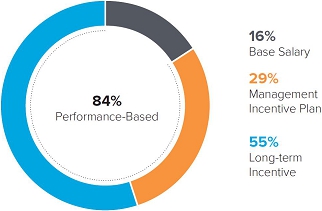
Say-on-PaySay-On-Pay Votes2020SAY-ON-PAYSUPPORTWe are pleased that our named executive compensation program received the voting support of over 97% of our shareholders last year. We believe this continued support reflects favorably on changes we have made to our executive compensation program over the past few years to more tightly link compensation metrics to our business strategy while incorporating feedback received from our shareholders. We work hard to ensure we implement best practices in executive compensation while staying focused on performance-based program elements that align with shareholder interests. We will continue to review our compensation program each year to determine if additional changes are warranted. 
AVERAGE
SUPPORT



We are pleased that, for the past two consecutive years, our executive compensation received the voting support of 98% of our shareholders. We believe this continued support reflects favorably on changes we have made to our executive compensation program over the past few years to more tightly link compensation metrics to our business strategy while incorporating feedback received from our shareholders. We work hard to ensure we implement best practices in executive compensation while staying focused on performance-based program elements that align with shareholder interests. As noted in the Program Changes for 2021 section of the Compensation Discussion and Analysis, the Compensation Committee has made changes to the Management Incentive Plan formula to include an ESG modifier for 2021. We will continue to review our compensation program each year to determine if additional changes are warranted.
 | Learn more in the Compensation Discussion & Analysis | |||
 |  | |||
| 2024 PROXY STATEMENT | 13 | |||||||
Attending the Virtual Annual Meeting
We continue to monitor developments regarding the coronavirus (COVID-19). In the interest of the health and well-being of our shareholders, the Board has made the decision that the Annual Meeting be held solely by means of remote communication.
How to Join the Virtual Annual Meeting
Shareholders as of the close of business on February 23, 2021 (Record Date) are invited to attend the virtual Annual Meeting at www.virtualshareholdermeeting.com/AFL2021 by entering the 16-digit control number included on their proxy card or notice that they previously received. If you hold your shares in street name and did not receive a 16-digit unique control number with your proxy materials, please contact your bank, broker, or other holder of record as soon as possible to obtain a valid legal proxy and for instructions on how to obtain a control number to be admitted to and to vote at the Annual Meeting. Online access to the webcast will open 15 minutes prior to the designated start time. Shareholders may submit questions in writing through the virtual meeting platform. Those who do not have a control number may attend as guests, but will not be able to vote shares or submit questions during the webcast. While voting during the virtual meeting will be permitted, Aflac Incorporated encourages shareholders to vote in advance of the meeting.
Vote BEFORE the meeting:
Vote by one of the following methods by 11:59 p.m. Eastern Time on May 2, 2021 for shares held directly and by 11:59 p.m. Eastern Time on April 28, 2021 for shares held in a Plan:
Go to www.proxyvote.com, or
Call 1-800-690-6903, or
Mark, sign and date your proxy card and return it in the postage-paid envelope we previously provided.
Vote DURING the meeting:
Go to www.virtualshareholdermeeting.com/ AFL2021.
Shareholders may attend and vote during the virtual Annual Meeting by following the instructions on the website above.
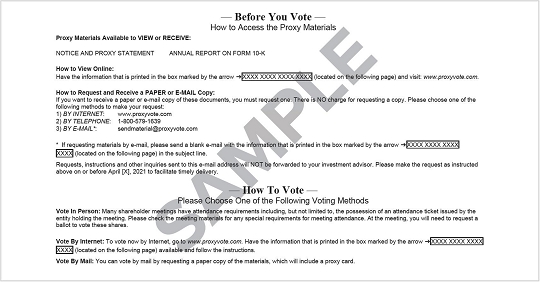
| ||||||||||||||||||||
| 14 | AFLAC INCORPORATED | CORPORATE GOVERNANCE MATTERS | ||||||
Corporate Governance Matters
Information about the Board of Directors
 |  |  |  |  |  |  |  |  |  |  | |
 |  |  |  |  |  |  |  |  |  | ||
 |  |  | |||||||||
 |  |  | |||||||||
 |  |  |  |  |  |  |  | ||||
 |  |  |  |  | |||||||
 |  |  |  |  |  |  |  |  |  | ||
 |  |  |  |  |  |  |  |  |  | ||
 |  |  |  |  |  | ||||||
 | |||||||||||
 |  |  | |||||||||
 |  |  |  |  |  |  | |||||
 |  | ||||||||||
 |  | ||||||||||
 |  |  |  |  |  |  | |||||
 |  |  |  |
Corporate Governance Matters
Daniel P. Amos CHAIRMAN, CHIEF EXECUTIVE OFFICER AND PRESIDENT OF AFLAC INCORPORATED |  | W. Paul Bowers RETIRED CHAIRMAN AND CHIEF EXECUTIVE OFFICER OF
LEAD NON-MANAGEMENT DIRECTOR |  | ||||||||||||||||||||||||||||||||||||||||||||||||||||||||||
AGE 72 | DIRECTOR SINCE 1983 | COMMITTEES E FI | AGE 67 | DIRECTOR SINCE 2013 | COMMITTEES AR* CD CSR E | ||||||||||||||||||||||||||||||||||||||||||||||||||||||||
•Chief Executive Officer of •Chairman of Aflac Incorporated and Aflac since 2001 •President of Aflac from July 2017 to May 2018 •President of Aflac Incorporated since January 2024 and from February 2018 through December •Spent 50 years in various positions at
Notable Experience Aligned with Our Strategy and Key Board Contributions Mr. Amos’ more than 40 years of experience at Aflac Incorporated provides invaluable expertise and insights to both the leadership team and the Board on how to effectively execute strategic priorities in unpredictable macroeconomic and competitive landscapes. His experience and approach deliver insightful expertise and guidance to the Board
Mr. Amos has appeared five times on Institutional Investor magazine’s lists of America’s Best CEOs for the insurance category, has been recognized as one of the 100 Best-Performing CEOs in the World by the Harvard Business Review five times, and has received a Lifetime Achievement Award for his dedication to corporate responsibility by CRMagazine. Public Company Boards •Synovus Financial Corp. (2001-2011) •Southern Company (2000-2006) | 
| ||||||||||||||||||||||||||||||||||||||||||||||||||||||||||||
•Retired as chairman and chief executive officer of Georgia Power, the largest subsidiary of Southern Company, a gas and electricity utility holding company, on July 1, 2021, a position that he held since •President of Georgia Power from 2011 until November •Chief financial officer of Southern Company from 2008 to •Served in various senior executive positions across Southern Company in Southern Company Generation, Southern Power, and the company’s former U.K. subsidiary, where he was president and chief executive officer of South Western Electricity LLC/Western Power
Distribution Notable Experience Aligned with Our Strategy and Key Board Contributions Mr. Bowers brings to the Board a valuable and unique perspective from his considerable financial knowledge, national and international business experience operating in a highly regulated industry, and expertise in corporate development and managing the evolving risks associated with
cybersecurit y.Public Company Boards •Brand Industrial Holding, Inc. (since 2019) •Audit Committee Chair (since 2019) •Exelon Corporation (since 2021) •Audit Committee and Corporate Governance Committee (since 2022) Other Board or Leadership Positions, Professional Memberships or Awards •Chair, Atlanta Committee for Progress (2016) •Nuclear Electric Insurance Ltd. (since 2009); Chairman(2017-2019) •Board of Regents of the University System of Georgia (2014-2018) •Federal Reserve Bank of Atlanta’s Energy Policy Council (2008-2018) | |||||||||||||||||||||||||||||||||||||||||||||||||||||||||||||
LEGEND: * Financial Expert • | 
Risk • C Compensation • CD Corporate Development
• CG Corporate Governance | ||||||||||||||||||||||||||||||||||||||||||||||||||||||||||||
CSR Corporate Social Responsibility and Sustainability • E Executive
|  | Independent • |  | Chair • |  | Member | |||||||||||||||||||||||||||||||||||||||||||||||||||||||
| CORPORATE GOVERNANCE MATTERS | 2024 PROXY STATEMENT | 15 | ||||||
Arthur R. Collins FOUNDER AND CHAIRMAN OF theGROUP |  | Miwako Hosoda PROFESSOR, SEISA UNIVERSITY |  | ||||||||||||||||||||||||||||||||||||||||||||||||||||||||
Corporate Governance Matters
AGE 64 | DIRECTOR SINCE 2022 | COMMITTEES CG CSR | AGE 54 | DIRECTOR SINCE 2023 | |||||||||||||||||||||||||||||||||||||||||||||||||||||||||
•Founder and Chairman of theGROUP, a government relations and strategic communications consulting firm, since 2011 •Chairman and CEO
•Experienced and trusted strategic advisor to corporate leaders and domestic and foreign governments with concentrations in
•Additional areas of expertise include financial services, trade, energy, information technology, consumer products, agriculture, transportation, manufacturing, and national security Notable Experience Aligned with Our Strategy and Key Board Contributions Mr. Collins has more than 30 years of experience as a Public Company Boards •KB Home (since 2020) •Nominating and Corporate Governance Committee •Management Development and Compensation Committee •RLJ Lodging Trust (since 2016) •Compensation, Nominating and Corporate Governance Committees Other Board or Leadership Positions, Professional Memberships or Awards •Member, Council on Foreign Relations (since 2023) •Member, Ford’s Theatre Board of Trustees (since 2023) •Member, Smithsonian’s National Museum of Asian Art Board of Trustees (since 2022) •Vice Chair, Brookings Institution Board of Trustees (2014-2023) •Member, Economic Club of Washington, D.C. (since 2012) •Chairman, Morehouse School of Medicine Board of Trustees (since 2009) •Member, Meridian International Center Board of Trustees (2009-2017) •Chairman, Florida A&M University Board of Trustees (2001-2003) | •Professor, Seisa University, Faculty of Life Network Science from 2012 to present •Vice President from 2013 to 2021 •Research fellow, Harvard T.H. Chan School of Public Health •Abe Fellow in the Department of Society, Human Development and Health from 2010 to 2012 •Takemi Fellow in the Department of Global Health and Population, The Takemi Program in International Health from 2008 to 2010 •Associate, Columbia University, Mailman School of Public Health, Department of Sociomedical Sciences from 2005 to 2008 •Research Fellow, Japan Notable Experience Aligned with Our Strategy and Key Board Contributions Dr. Hosoda brings over 30 years of extensive Other Board or Leadership Positions, Professional Memberships or Awards •Board of Directors, The University of Tokyo, New York Office, Inc. (Since 2023) •Board of Directors, Brain Injury Caring Communities Society (2017 to •Representative Director, Inclusive Action For All (since 2020) •Vice president, Asia Pacific Sociological Association (since 2021); President (2017 to 2020) •Board of Trustees, The Japanese |
| |||||||||||||||||||||||||||||||||||||||||||||||||||||||||||
LEGEND: * Financial Expert • AR Audit and Risk • C Compensation • CD Corporate Development • CG Corporate Governance | |||||||||||||||||||||||||||||||||||||||||||||||||||||||||||||
CSR Corporate Social Responsibility and Sustainability • E Executive • FI Finance and Investment • |  | Independent • |  | Chair • |  | Member | |||||||||||||||||||||||||||||||||||||||||||||||||||||||
16 | AFLAC INCORPORATED | CORPORATE GOVERNANCE MATTERS | ||||||
Thomas J. Kenny FORMER PARTNER AND CO-HEAD OF GLOBAL FIXED INCOME, GOLDMAN SACHS ASSET MANAGEMENT
|  | Georgette D. Kiser OPERATING EXECUTIVE, THE CARLYLE GROUP |  | |||||||||||||||||||||||||||||||||||||||||||||||||||||||||
AGE 60 | DIRECTOR SINCE 2015 | COMMITTEES CD CSR FI | AGE 56 | DIRECTOR SINCE 2019 | COMMITTEES AR* C | |||||||||||||||||||||||||||||||||||||||||||||||||||||||
•Co Chair of •Held a variety of leadership positions at Goldman Sachs for twelve years, most recently serving as partner and advisory •Served as co-head of the Global Cash and Fixed Income Portfolio team at Goldman Sachs Asset Management, where he was responsible for overseeing the management of more than $600 billion in assets across multiple strategies with teams in London, Tokyo, and New •Spent thirteen years at Franklin •CFA charter
holder Notable Experience Aligned with Our Strategy and Key Board Contributions Mr.
expertise that supports our capital allocation decision-making and the evaluation of potential strategic transactions that drive long-term shareholder value. Other Board or Leadership Positions, Professional Memberships or Awards •Nuveen Funds (a TIAA Company), Co-Chair (since January 2024): •Executive Committee, Chair (since January 2024) •Investment Committee (since January 2024) •Compliance Committee (since January 2024) •Nomination and Governance Committee (since January 2024) •Open End Fund Committee (since January 2024) •ParentSquare (since 2021) •CREF Board of Trustees, Chairman ( 2017 through 2023) •TIAA-CREF Fund Complex: •Executive Committee, Chair •Investment Committee ( 2011 through 2023) •Audit and Compliance Committee ( 2018 through 2023) •Nominating and Governance Committee ( 2017 through 2023) •Ad Hoc CREF Special Projects Committee ( | 
| |||||||||||||||||||||||||||||||||||||||||||||||||||||||||||
Corporate Governance Matters
•Helps set IT strategy for Carlyle Portfolio companies and drives •Former managing director and chief information officer, •Developed and drove information technology strategies across the global enterprise, which includes the firm’s application development, data, digital, infrastructure, cybersecurity, and program management and outsourcing •Serves as an independent advisor who helps lead due diligence and technical strategies across various middle market private equity and venture capital firms •Led teams that provided creative solutions for investment front office, trading, and back-office operations at T. Rowe Price •Worked for General Electric within their aerospace unit Notable Experience Aligned with Our Strategy and
Key Board Contributions Throughout Ms. Kiser’s three-plus decade career, she has established extensive experience and success developing and leading talented teams to deliver decision support systems and technical solutions, including cybersecurity, for financial services firms. She has consistently been recognized for bringing credibility to solutions and technical organizations in addition to building strong business partnerships, leveraging human and technical resources, implementing investment and customer management systems, and producing advanced data management solutions.
Public Company Boards •Jacobs Engineering (since 2019) •Adtalem Global Education (since 2018) •NCR Voyix Corporation (formerly NCR Corporation) (since 2020)
Other Board
• | |||||||||||||||||||||||||||||||||||||||||||||||||||||||||||
LEGEND: * Financial Expert • AR Audit and Risk • C Compensation • CD Corporate Development • CG Corporate Governance | |||||||||||||||||||||||||||||||||||||||||||||||||||||||||||
CSR Corporate Social Responsibility and Sustainability • E Executive • FI Finance and Investment • |  | Independent • |  | Chair • |  | Member | |||||||||||||||||||||||||||||||||||||||||||||||||||||
| CORPORATE GOVERNANCE MATTERS | 2024 PROXY STATEMENT | 17 | ||||||
Karole F. Lloyd CERTIFIED PUBLIC ACCOUNTANT AND RETIRED ERNST & YOUNG LLP AUDIT PARTNER
|  | Nobuchika Mori REPRESENTATIVE DIRECTOR, JAPAN FINANCIAL AND ECONOMIC RESEARCH CO. LTD. |  | |||||||||||||||||||||||||||||||||||||||||||||||||||||||||
AGE 65 | DIRECTOR SINCE 2017 | COMMITTEES AR* CDE FI | AGE 67 | DIRECTOR SINCE 2020 | COMMITTEES CG FI | |||||||||||||||||||||||||||||||||||||||||||||||||||||||
•Certified public accountant and retired as vice chair and regional managing partner for Ernst & Young, LLP (“EY”), a global accounting firm, in December •Brings more than 37 years of work experience and leadership, most recently as part of the US Executive Board, Americas Operating Executive and the Global Practice Group for EY, and has extensive experience in the audits of large financial services, insurance, and health care •Served many of EY’s highest profile clients through mergers, IPOs, acquisitions, divestitures, and across numerous industries including banking, insurance, consumer products, transportation, real estate, manufacturing, and •Served as an audit partner for publicly held companies in both the United States and •Other experience includes leadership and consulting with respect to financial reporting, board governance and legal matters, regulatory compliance, internal audit, and risk
management Notable Experience Aligned with Our Strategy and Key Board Contributions Ms. Lloyd’s extensive accounting and advisory experience across the financial
helps inform our capital allocation decision-making and the evaluation of potential strategic transactions that drive long-term shareholder value. Public Company Boards •Churchill Downs Incorporated •Audit Committee Other Board or Leadership Positions, Professional Memberships or Awards •CERT Certificate in Cybersecurity Oversight •The University of Alabama President’s Advisory Council (since 2003) •The University of Alabama Board of Visitors for the Commerce and Business School (since 2001) •Atlanta Symphony Orchestra Board of Directors (since 2010) •Metro Atlanta Chamber of Commerce, Board of Trustees and Executive Committee(2009-2016) |
| |||||||||||||||||||||||||||||||||||||||||||||||||||||||||||
Corporate Governance Matters
•Responsible for providing research and consulting services to companies in Japan and abroad since July •Eminent guest professor at the Center for Advanced Research in Finance, Graduate School of Economics, University of Tokyo (since July 2022) •Senior research scholar and adjunct professor •Commissioner of the Financial Services Agency of Japan (the “JFSA”), Japan’s integrated financial •Led supervision of financial institutions including banks, securities firms and insurance companies •Directed legislative and regulatory planning to ensure financial stability and enhance economic growth in •More than 30 years in senior positions at JFSA and Japan’s Ministry of Finance (the “MOF”) •JFSA Vice Commissioner for Policy Coordination •JFSA Director General for Inspection •JFSA Director General for Supervision •Served in a range of diplomatic posts reflecting his expertise in international financial markets and regulatory standards, •Chief Representative in New York for the MOF •Minister of the Embassy of Japan in the United States of America •Deputy Treasurer at the Inter-American Development
Bank Notable Experience Aligned with Our Strategy and Key Board Contributions Over a three-plus decade career immersed in Japan’s finance industry as a financial regulator, policymaker, and standard setter in Japan and internationally, Mr. Mori gained extensive specialized economic, policy, and financial regulatory expertise, knowledge and experience. He brings to the Board indispensable, significant insight with respect to the Company’s Japanese business operations from his considerable financial and economic knowledge, international business experience, and regulatory acumen spanning highly regulated industries in Japan and internationally.
Other Board or Leadership Positions, Professional Memberships or Awards •Center on Japanese Economy and Business (CJEB) Professional Fellow (since 2018) |
| ||||||||||||||||||||||||||||||||||||||||||||||||||||||||||
LEGEND: * Financial Expert • AR Audit and Risk • C Compensation • CD Corporate Development • CG Corporate Governance | |||||||||||||||||||||||||||||||||||||||||||||||||||||||||||
CSR Corporate Social Responsibility and Sustainability • E Executive • FI Finance and Investment • |  | Independent • |  | Chair • |  | Member | |||||||||||||||||||||||||||||||||||||||||||||||||||||
18 | AFLAC INCORPORATED | CORPORATE GOVERNANCE MATTERS | ||||||
Joseph L. Moskowitz RETIRED EXECUTIVE VICE PRESIDENT, PRIMERICA, INC.
| 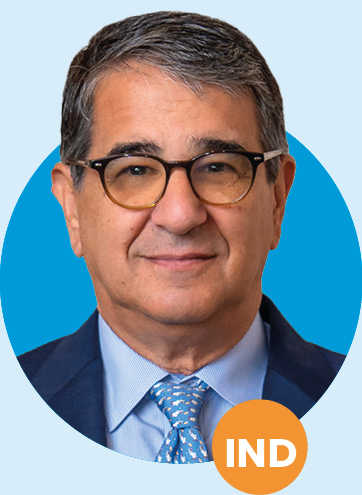 | Katherine T. Rohrer VICE PROVOST EMERITUS, PRINCETON UNIVERSITY |  | |||||||||||||||||||||||||||||||||||||||||||||||||||||||||
AGE 70 | DIRECTOR SINCE 2015 | COMMITTEES AR* C CD E | AGE 70 | DIRECTOR SINCE 2017 | COMMITTEES C CG E | |||||||||||||||||||||||||||||||||||||||||||||||||||||||
•Executive vice president of Primerica, Inc., an insurance and investments company, •Joined Primerica in 1988 and served in various capacities, including managing the group responsible for financial budgeting, capital management support, earnings analysis, and analyst and stockholder communications •Chief actuary from 1999 to •Vice president of Sun Life Insurance Company from 1985 to 1988 •Senior manager at KPMG from 1979 to
1985 Notable Experience Aligned with Our Strategy and Key Board Contributions With forty years of actuarial experience and leadership roles in the
assessment. Other Board or Leadership Positions, Professional Memberships or Awards •Fellow, Society of Actuaries(since 1979) •Member, American Academy of Actuaries(since 1979) |
| |||||||||||||||||||||||||||||||||||||||||||||||||||||||||||
Corporate Governance Matters
•
| 
| ||||||||||||||||||||||||||||||||||||||||||||||||||||||||||
•Vice provost for Academic Programs from 2001 until •Held several senior leadership positions •Served as interim associate dean of the graduate school in •Assistant professor at Columbia University •Trustee of Emory University, where she serves on the executive committee as well as the academic affairs committee, which she chaired from 2013 to
2020 Notable Experience Aligned with Our Strategy and Key Board Contributions With more than 30 years as a university leader, Dr. Rohrer
Other Board or Leadership Positions, Professional Memberships or Awards •Emory University Board of Trustees •Academic Affairs Committee (Chair 2013-2020) •Executive Committee •Finance Committee (2014-2020) •Previously served on the boards of Morristown-Beard School, Morristown, NJ; Trinity Church, Princeton, NJ; Crisis Ministry of Trenton and Princeton (now “Arm in Arm”); and Dryden | |||||||||||||||||||||||||||||||||||||||||||||||||||||||||||
LEGEND: * Financial Expert • AR Audit and Risk • C Compensation • CD Corporate Development • CG Corporate Governance | |||||||||||||||||||||||||||||||||||||||||||||||||||||||||||
Corporate Governance Matters
|
|  | Independent • |  | Chair • |  | Member | |||||||||||||||||||||||||||||||||||||
a diverse balance of longer tenured members and newer members | 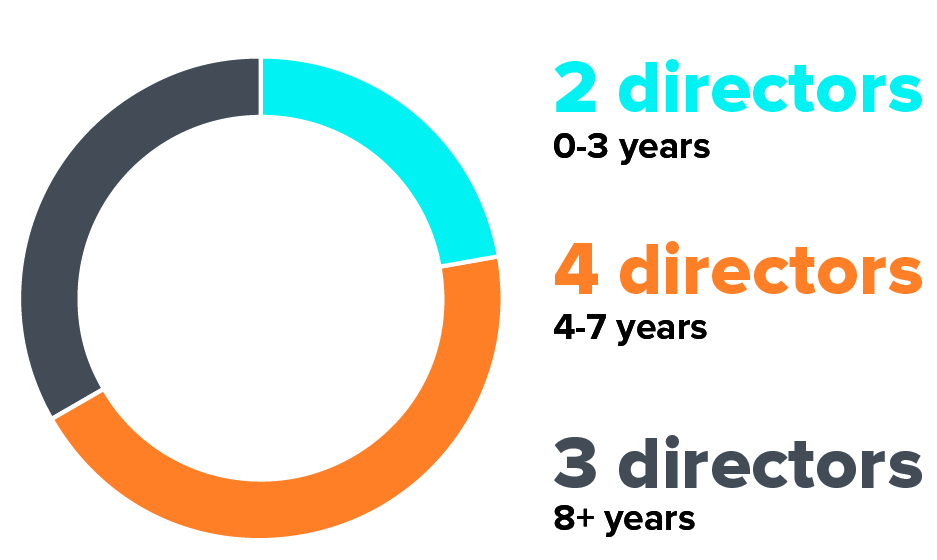 | ||||
Board Changes since 2019 4 of 4 new nominees have been women and/or people of color | Skills of Directors Joining the Board since 2019 | ||||||||||
 | INVESTMENT AND FINANCIAL | ||||||||||
 | REGULATORY AND RISK MANAGEMENT | ||||||||||
 | PUBLIC HEALTH | ||||||||||
 | OPERATIONS | ||||||||||
 | JAPANESE MARKET | ||||||||||
 | INDUSTRY | ||||||||||
 | DIGITAL/CYBERSECURITY | ||||||||||
| 20 | AFLAC INCORPORATED | CORPORATE GOVERNANCE MATTERS | ||||||
AGENDA TOPICS DISCUSSED AND PRESIDENT requirements as well as the Company's code of business ethics and policy on conflict of interest; deems appropriate. Responsibilities Responsibilities The Finance and Investment Committee oversees the investment process and investment risk management The Chief Executive Officer plays an active role in the succession-planning process for other executive management positions. In coordination with the Company’s executive management team, including the General Counsel and the Engagement Based on engagement, the Board amended the Company’s Bylaws and Guidelines on Significant Corporate Governance Issues to eliminate the Emeritus Director category in 2023. inform our Board’s ongoing discussion and approach to our voting rights and governance profile. For additional information, please see 58. Vice President of the Company, effective January 1, 2024 through his retirement with the Company on September 30, 2024. For more information regarding the employment letter of agreement, see “Employment Agreements” on page 58. 5.0% PEER GROUP (“RTSR”) NET EARNINGS 2.8B (SMR) Aflac U.S. cost savings from transformation initiatives cost savings from transformation initiatives Outcome of Fees paid to Mercer for these services totaled Limited There were no changes to the 2023 Executive Compensation market. the Compensation Committee or the Board. target MIP competitively relative to similar roles in the market Adjusted earnings per diluted share on a consolidated basis for the Company (excluding foreign currency effect) This is calculated as: Adjusted earnings, excluding the impact of foreign currency* ÷ Weighted-average diluted shares outstanding deferred profit liability. 2024. 2023. units (“RSUs”). Adjusted Earnings, excluding the impact of foreign currency ÷ Adjusted Book Value* confidence confidence unrealized gains on available for sale securities. capped at 200% of the target number of shares initially granted pursuant to the terms of the PBRS grants. 2024 added to the 2024 peer group since it fits the size and operating characteristics of the Company’s other current peers. plan for all participants effective January 1, 2024. No change was made to the EDCP in 2023. Employees vest in Company contributions at the rate of 20% for each complete year of service. After five years of service, employees are fully vested in all Company contributions. future benefits on January 1, 2024. Additional Executive Compensation Plan Practice and Procedures hedges. The Compensation Committee and the Board will continue to monitor developments in this area to consider practices as they evolve. are more fully described in the Perquisites table. In June 2023, the Company amended the U.S. defined benefit plan to freeze future benefits under the plan for all participants effective January 1, 2024. For purposes of the Plan, final average monthly compensation is the participant’s highest average compensation (salary and non-equity incentive plan compensation) during any five consecutive years of service within the ten consecutive plan years of service immediately preceding retirement. Participants are eligible to receive full retirement benefits upon attaining a retirement age of 65 or, if earlier, when their years of credited service plus age equals or exceeds 80. Participants with at least fifteen years of credited service are eligible to receive reduced retirement benefits upon reaching an early retirement age of 55. The Plan was frozen to new employees hired, or former employees rehired, on or after October 1, 2013. In June 2023, the Company amended the U.S. defined benefit plan to freeze future benefits under the plan for all participants effective January 1, 2024. 2015 and additional accruals were frozen as of December 31, 2023, provided that actively employed participants may continue to accrue service toward eligibility for early retirement benefits or delayed early retirement benefits. 2009 and additional accruals were frozen as of December 31, 2023. Dyslin. The NEOs’ employment agreements provide that compensation and benefits continue for certain specified periods in the event the NEO becomes totally disabled. Upon the death of an NEO, the NEO’s estate is to be paid an amount, over a three-year period, equal to the NEO’s base salary and any non-equity incentive awards actually paid during the last three years of the NEO’s life. In addition, all outstanding equity awards will be honored and vest upon the date of death or disability. SEC rules permit us to identify our median employee once every three years so long as there has not been a change in our employee population or employee compensation arrangements during the 2022. $63,898. Audit and Risk Committee Report 24. On February 28, 2019, the Company entered into a Shareholders Agreement (the “Shareholders Agreement”) with Japan Post Holdings; J&A Alliance Holdings Class is calculated by dividing the number of shares of Common Stock beneficially owned by the number of outstanding shares of Common Stock as of the Record Date. nominee as of February 27, 2024: 21, 2024. Multiple Shareholders Sharing the Same Address 1,396,095,252. The following table shows the voting requirements for each proposal we expect at the Annual Meeting. 21, 2024. 21, 2024. The notice of a proxy access nomination must also comply with the additional notice requirements of SEC Rule 14a-19(b). 1995 provides a safe harbor to encourage companies to provide prospective information, so long as those informational statements are identified as forward-looking and are accompanied by meaningful cautionary statements identifying important factors that could cause actual results to differ materially from those included in the forward-looking statements. The Company desires to take advantage of these provisions. Forward-looking statements are not based on historical information and relate to future operations, strategies, financial results, environmental, social, and governance matters, or other developments. Furthermore, forward-looking information is subject to numerous assumptions, risks and uncertainties. In particular, statements containing words such as the ones listed below or similar words, as well as specific projections of future results, generally qualify as forward-looking. The Company undertakes no obligation to update such forward-looking statements. on Form 10-K for the year ended December 31, 2023 and subsequent reports filed with the SEC. We undertake no obligation to update or revise any forward-looking statements, whether as a result of new information, future events or for any other reason. Due to the size of Aflac Japan, The average yen/dollar exchange rate is based on the published MUFG Bank, Ltd. telegraphic transfer middle rate (TTM). Table









Skills and Experience 

















































INDEPENDENT 








Race/Ethnicity WHITE 





BLACK OR AFRICAN AMERICAN 

ASIAN 

Gender MALE 





FEMALE 



CORPORATE GOVERNANCE MATTERS 2024 PROXY STATEMENT 21 1 SUCCESSION PLANNING Our Corporate GovernanceThe Committee considers the current and long-term needs of our business and seeks potential candidates in light of evolving needs, current Board structure, tenure, skills, experience, and diversity.2 IDENTIFICATIONOF CANDIDATES •  suggestions from current Directors and executive officers;
suggestions from current Directors and executive officers;•  firms that specialize in identifying director candidates; and/or
firms that specialize in identifying director candidates; and/or•  as discussed below, candidates recommended by shareholders.
as discussed below, candidates recommended by shareholders.THRESHOLDQUALIFICATIONS3 THRESHOLD QUALIFICATIONS •  a demonstrated ability to make a meaningful contribution to the Board’s oversight of the business and affairs of the Company; and
a demonstrated ability to make a meaningful contribution to the Board’s oversight of the business and affairs of the Company; and•  an impeccable record and reputation for honest and ethical conduct in both professional and personal activities.
an impeccable record and reputation for honest and ethical conduct in both professional and personal activities.4 ADDITIONAL QUALIFICATIONS The Committee strives to build a diverse Board that is strong in its collective knowledge. In particular,Among other skill sets, the Committee looks for nominees with experience in the following areas:• accounting and finance
accounting and finance•business operations•corporate governance• management and leadership
management and leadership•business judgment•global markets• vision and strategy
vision and strategy• business operations
business operations business judgment
business judgment  industry knowledge
industry knowledge• corporate governance
corporate governance global markets
global markets  communication
communicationIn addition, the Committee considers such factors as values and disciplines, ethical standards, diversity (including gender, ethnicity, race, color, and national origin), and background, within the context of the characteristics and needs of the Board as a whole in nominating Directors. Nominees must be betweenDirectors may sit on no more than four public company boards (including our own) or no more than one additional public company board if the agesDirector is an officer of 21 and 74.the Company. All of our Director nominees currently comply with our policy on outside board service. The Committee reviews requests from Directors to serve on the board of other public companies.5 MEETING WITH CANDIDATES •  review publicly available information and contact candidates who warrant further consideration;
review publicly available information and contact candidates who warrant further consideration;•  request further information for those potential nominees willing to be considered for a Board seat;
request further information for those potential nominees willing to be considered for a Board seat;•  conduct one or more interviews with each
conduct one or more interviews with each prospectivepotential nominee; and•  may contact references provided by candidates and speak with members of the business community or other people who have firsthand knowledge of a candidate’s record.
may contact references provided by candidates and speak with members of the business community or other people who have firsthand knowledge of a candidate’s record. Corporate Governance Committee to compare the accomplishments and qualifications of all potential nominees.6 DECISION ANDNOMINATION The Committee nominates the candidates best qualified to serve the interests of the Company and all shareholders for nomination and approval by the Board.ELECTION7 ELECTION Shareholders consider the nominees and elect Directors at the Annual Meeting of Shareholders to serve one-year terms. The Board may also appoint Directors during the year when determined to be in the best interests of the Company and its shareholders. 2021 Proxy Statement922 AFLAC INCORPORATED CORPORATE GOVERNANCE MATTERS Corporate Governance MattersConsideration of Director Candidate from ShareholdersThe Corporate Governance Committee will consider Director candidates recommended by shareholders. As with any prospective nominee, the Corporate Governance Committee will evaluate shareholder-nominated candidates in light of the needs of the Board and the qualifications of the particular individuals. In addition, the Corporate Governance Committee may consider the number of shares held by the recommending shareholder and the length of time such shares have been held.To recommend a candidate for the Board, a shareholder must submit the recommendation in writing, including: (i) the name of the shareholder and evidence of the person’s ownership of common stock of the Company (“Common Stock”), including the number of shares owned and the length of time of ownership; and (ii) the name of the candidate, the candidate’s resume or qualifications to be a Director, and the candidate’s consent to be named as a Director if nominated by the Board.The shareholder recommendation and information described above generally must be received by the Corporate Secretary not less than 90 nor more than 120 days prior to the anniversary date of the immediately preceding annual meeting of shareholders. However, if the annual meeting is called for a date that is not within 25 days before or after such anniversary date, notice by the shareholder, to be timely, must be received no later than the close of business on the tenth day following the day on which notice of the date of the annual meeting was mailed or public disclosure of that date was made, whichever occurs first.Shareholder recommendations and accompanying information should be sent to the Corporate Secretary at Aflac Incorporated as described at the end of this Proxy Statement under the heading “Other Proposals or Director Nominations to be Brought Before our 2022 Annual Meeting.”Our proxy access bylaw permits a shareholder (or group of up to twenty shareholders) owning shares of our outstanding Common Stock representing at least 3% of the votes entitled to be cast on the election of Directors to nominate and include in our proxy materials Director candidates constituting up to 20% of the Board. The nominating shareholder or group of shareholders must have owned their shares continuously for at least three years, and the nominating shareholder(s) and nominee(s) must satisfy other requirements specified in our Bylaws.The effectiveness of our Board is of the utmost importance. The Board recognizes that we live in a dynamic world that requires regular self-evaluation to ensure that we have the best skill set and experience to serve the Company and that the Board is fulfilling its responsibilities.ANNUALASSESSMENTOVERSIGHTself-evaluationself-evaluation for the Board as a whole and for its individual members.10Aflac IncorporatedCorporate Governance Matters management, and other resourcesIn addition to the formal self-evaluation process, the Non-employee Directors regularly meet in executive session, during which the Board’s performance and oversight responsibilities are frequently discussed. The Board annually assesses the independence of each Director and Director nominee. Daniel P. Amos is an employee of the Company. The Board has determined that all of the other Director and Director nominees are “independent” under New York Stock Exchange (“NYSE”) listing standards. None of the independent nominees has a material relationship with the Company, either directly or as a partner, shareholder, or officer of an organization that has a relationship with the Company. The Board made its determination based on information furnished by all Directors regarding their relationships with the Company and research conducted by management.Independent Director Tenure Mix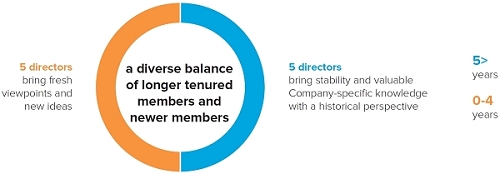
2021 Proxy Statement11CORPORATE GOVERNANCE MATTERS 2024 PROXY STATEMENT 23 Corporate Governance MattersDirector’sDirectors meeting following the Annual Meeting of Shareholders) based upon a recommendation by the Corporate Governance Committee. Although subject to an annual election, the Lead Non-Management Director is generally expected to serve for more than one year, but no more than four years.year.

Chairman and

Lead Non-Management DirectorThe Board believes its existing corporate governance practices achieve independent oversight and management accountability. These governance practices are reflected in the Company’s Guidelines on Significant Corporate Governance Issues and the Committee charters. In particular:•a substantial majority of our Board members are independent;•the Audit and Risk, Compensation, and Corporate Governance Committees all comprise independent Directors;• Company has a Lead Non-Management Director, with significant responsibilities, as described below; and•the Non-employee Directors meet at each regularly scheduled Board meetingoutlined in executive session without management present.12Aflac Incorporated
our Guidelines on Significant Corporate Governance Issues, include:Corporate Governance MattersThe responsibilities of the Lead Non-Management Director include:• consulting with the Chairman and Corporate Secretary to establish the agenda for each Board meeting; setting the agenda for, and leading, all executive sessions of the Non-employee Directors; when appropriate, discussing with the Chairman matters addressed at such executive sessions; presiding over meetings of the Board at which the Chairman is not present; presiding over discussions of the Board when the topic presents a potential conflict of interest for the Chairman; facilitating discussions among the Non-employee Directors between Board meetings; serving as a liaison between the Non-employee Directors and the Chairman; when appropriate, serving as a liaison between management and the Board; representing the Board in shareholder outreach; and facilitating the annual Board self-evaluation in coordination with the Chairman. 24 AFLAC INCORPORATED CORPORATE GOVERNANCE MATTERS The Lead Non-Management Director has the authority to call meetings of the independent Directors.SustainabilitySustainability; Executive; and Finance and Investment. Each committee (other than the Executive Committee) operates under a written charter adopted by the Board. Charters for the Audit and Risk Committee, the Compensation Committee, and the Corporate Governance Committee all can be found on the Company’s website, aflac.com, under “Investors,” then “Governance,” and then “Governance Documents.”TheBeginning May 6, 2024, the Corporate Governance Committee has nominated Mr. Nobuchika MoriDr. Miwako Hosoda to serve on the Corporate GovernanceSocial Responsibility and Sustainability Committee beginning May 3, 2021.2021 Proxy Statement13
and Mr. Arthur R. Collins to serve as Chairman of the Corporate Social Responsibility and Sustainability Committee.Corporate Governance MattersThe Audit and Risk CommitteeMEMBERS*
Karole F. Lloyd(Chair)
W. Paul Bowers
Georgette D. Kiser
Joseph L. MoskowitzNUMBER OF MEETINGS IN 202012*



RESPONSIBILITIESResponsibilities requirements; 62.78.401(h)407(d)(5) of SECSecurities and Exchange Commission (SEC) Regulation S-K.14Aflac IncorporatedCORPORATE GOVERNANCE MATTERS 2024 PROXY STATEMENT 25 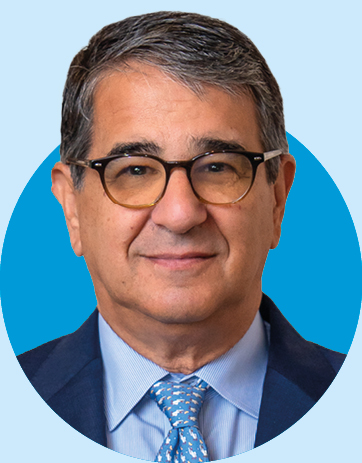


Corporate Governance MattersThe Compensation CommitteeMEMBERS
Joseph L. Moskowitz(Chair)
Georgette D. Kiser
Katherine T. RohrerNUMBER OF MEETINGS IN 20204RESPONSIBILITIESResponsibilities viewingreviewing the Company’s incentive compensation programs to determine whether they encourage excessive risk taking, and evaluating compensation policies and practices that could mitigate any such risk; andgeneralother compensation and benefit plans to ensure they promote our goals and objectives.seems appropriate to any subcommittees.2020,2023, no Director was an executive officer of another entity on whose compensation committee any executive officer of the Company served. In addition, no member of the Compensation Committee had any relationship requiring disclosure under the section titled “Related Person Transactions” in this Proxy Statement.2021 Proxy Statement15



Corporate Governance MattersThe Corporate Development CommitteeMEMBERS
W. Paul Bowers(Chair)
Thomas J. Kenny
Joseph L. MoskowitzNUMBER OF MEETINGS IN 20205RESPONSIBILITIES16Aflac Incorporated26 AFLAC INCORPORATED CORPORATE GOVERNANCE MATTERS 
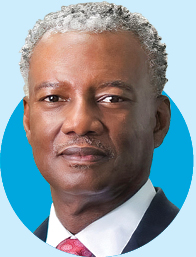


Katherine T.
Rohrer
(Chair)Corporate Governance MattersThe Corporate Governance CommitteeMEMBERS
Melvin T. Stith(Chair)
Barbara K. Rimer, DrPH
Katherine T. RohrerNUMBER OF MEETINGS IN 20203RESPONSIBILITIESResponsibilities 2021 Proxy Statement17



Corporate Governance MattersThe Corporate Social Responsibility and Sustainability CommitteeMEMBERS
Barbara K. Rimer, DrPH(Chair)
W. Paul Bowers
Thomas J. Kenny
Melvin T. StithNUMBER OF MEETINGS IN 20203RESPONSIBILITIESResponsibilities • monitoring and reviewing the Company’s strategies, procedures, and practices related to corporate social responsibility on a global basis, including significant philanthropic and community engagement activities;• monitoring and reviewing the development of metrics, information systems, and procedures to track progress toward achievement of the Company’s corporate social responsibility objectives;monitoring preparation ofreviewing the Company’s annual Corporate Social Responsibility report,corporate social responsibility and reviewing suchsustainability report before it is published; andgrowthgrowth* of the Company on a global basis;• monitoring and reviewing the Company’s strategies, policies, procedures, and practices related to environmental and related health and safety matters;• monitoring and reviewing the Company’s policies, procedures, and practices that enable us to proactively respond to evolving public sentimentregulatory and government regulationsinvestor expectations with regard to sustainability, especially in the areas of environmental stewardship, energy use, recycling, and carbon emissions (i.e., our carbon footprint);“18Aflac IncorporatedCORPORATE GOVERNANCE MATTERS 2024 PROXY STATEMENT 27 



Corporate Governance MattersThe Executive CommitteeMEMBERS
Daniel P. Amos(Chair)
W. Paul Bowers
Karole F. Lloyd
Joseph L. Moskowitz
Melvin T. StithNUMBER OF MEETINGS IN 20204PURPOSEDuring the intervals between meetings of the Board, the Executive Committee may exercise all of the powers of the Board that may be delegated under Georgia law.COMPOSITIONUnder the Company’s Bylaws, the Executive Committee must consist of at least five Directors, including the Chief Executive Officer, the Chairman of the Board, and such additional Directors as the Board may from time to time determine. Currently, the membership of the Executive Committee also includes the chairpersons of the Audit and Risk, Compensation, and Corporate Governance Committees, and includes the Company’s Lead Non-Management Director. The Chief Executive Officer (or another member of the Executive Committee chosen by him) is the Chairman of the Executive Committee.2021 Proxy Statement19Corporate Governance MattersThe Finance and Investment CommitteeMEMBERS
Thomas J. Kenny(Chair)
Daniel P. Amos
Toshihiko Fukuzawa
Karole F. LloydNUMBER OF MEETINGS IN 20205RESPONSIBILITIESFINANCE RESPONSIBILITIES• reviewing and providing guidance on the Company’s credit ratings, ratings strategy, and overall rating agency dialogue;• reviewing and providing guidance to the Board on the financing strategy and capital impact of corporate development activities and multiyear strategic capital project expenditures;andcoverages.coverages; and INVESTMENT INVESTMENT RESPONSIBILITIESreviewingin partnership with the performanceCorporate Social Responsibility and Sustainability Committee, review and provide guidance on integration of corporate social responsibility and sustainability factors into the investment process and investment risk management policies, strategies and programs.




Daniel P. Amos (Chair) Katherine T.
Rohrer
such additional Directors asResponsibilities PURPOSE investment portfoliosBoard, the Executive Committee may exercise all of the powers of the Board that may be delegated under Georgia law.its subsidiaries.20Aflac Incorporatedthe Board may from time to time determine. Currently, the membership of the Executive Committee also includes the Chairs of the Audit and Risk, Compensation, and Corporate Governance Committees, and includes the Company’s Lead Non-Management Director. The Chairman of the Board (or another member of the Executive Committee chosen by him) is the Chairman of the Executive Committee. 28 AFLAC INCORPORATED CORPORATE GOVERNANCE MATTERS Corporate Governance Matters4four times in 2020,2023, and all Directors attended at least 75% of the meetings of the Board and the committees on which they served for the period for which they served. It is Company policy that each Director should attend the Annual Meeting. All Directors serving at the time attended the 20202023 Annual Meeting, which was held virtually due to the COVID-19 pandemic. OversightOur Board oversees our enterprise-wide risk management system, which is designed to achieve organizational and strategic objectives, improve long-term performance, and enhance shareholder value. Risk management requires more than just understanding the risks we face and the steps management takes to manage those risks. The Board also must understand what level of risk is appropriate for the Company. Our Directors are equipped to make all of these determinations because they are integral to the process of setting the Company’s business strategy.While the Board oversees the risk-management process generally, several Board and management committees have specific roles that correspond with their areas of responsibility.Role of ManagementThe Company’s management is responsible for day-to-day risk management. Our enterprise risk-management framework, which is aligned with and overseen by the Board and its committees, includes several executive management committees whose roles incorporate risk management across the enterprise. For example, executive management’s Global Risk Committee oversees the processes for identifying, assessing, measuring, monitoring, controlling, and mitigating the key risks associated with the Company. Other management committees are responsible for implementing policies and risk-management processes relating to strategic, operational, investment, competitive, regulatory and legislative, product, reputational, and compliance risks.Audit and Risk CommitteeUnder its charter, the Audit and Risk Committee’s responsibilities include risk management and compliance oversight. Specifically, the Audit and Risk Committee:
discusses guidelines and policies governing the process by which senior management and the relevant departments of the Company assess and manage exposure to risk;risk, as well as the Company’s major financial risk exposures and the steps management has taken to monitor and control such exposures; reviews the Company’s risk assessment and enterprise risk-management framework, including risk-management guidelines, risk appetite, risk tolerances, key risk policies, and control procedures; reviews critical regulatory risk-management filings and enterprise risk-management material shared with regulators and rating agencies; •reviews the Company’s major financial risk exposures and evaluates processes and controls that management has adopted to monitor and manage those risks; meets in executive session with key senior leaders involved in risk management; •reports to the Board, at least annually, with respect to matters related to key enterprise risks and risk management areas of concentration. 2021 Proxy Statement21Corporate Governance MattersSpotlight on Information Security Risk OversightThe Board has adopted an information security policy directing management to establish and operate an information security program with the goal of ensuring that the Company’s information assets and data, and the data of its customers, are appropriately protected. The Board has delegated oversight of the Company’s information security program to the Audit and Risk Committee. The Company’s senior officers, including its Global Security and Chief Information Security Officer, are responsible for the operation of the information security program and communicate quarterly with the Audit and Risk Committee on the program, including with respect to the state of the program, compliance with applicable regulations, current and evolving threats, and recommendations for changes in the information security program. The information security program also includes a cybersecurity incident response plan that is designed to provide a management framework across Company functions for a coordinated assessment and response to potential security incidents. This framework establishes a protocol to report certain incidents to the Global Security and Chief Information Security Officer and other senior officers, with the goal of timely assessing such incidents, determining applicable disclosure requirements and communicating with the Audit and Risk Committee. The incident response plan directs the executive officers to report certain incidents immediately and directly to the Lead Non-Management Director.For more information, see the Aflac Incorporated Cybersecurity Disclosure on the Company’s ESG site at esg.aflac.com.Finance and Investment Committee of the Company and its subsidiaries by monitoring investment policies, strategies, and transactions and reviewing the performance of the investment portfolio and overall capital and liquidity position of the Company.Investment processThe manner in which we invest cash flows of the Company and its subsidiaries by monitoring investment policies, strategies, and manage investments to emphasize safety, liquidity, returns, tax considerations, applicable lawstransactions and regulations, and conformity withreviewing the needsperformance of the Companyinvestment portfolio and its subsidiaries.overall capital and liquidity position of the Company. Specific risk oversight responsibilities include:riskrisk:Includes liquidity risk, market risk, and credit risk. riskrisk:When an investment is not marketable and cannot be bought or sold quickly enough to prevent or minimize a loss. riskrisk:The risk that market movements will cause fluctuations in the value of our assets, the amount of our liabilities, or the income from our assets. riskrisk: The risk of loss arising from the failure of a counterparty to perform its contractual obligations. riskrisk:Review of enterprise capital adequacy, access to capital, and maintenance of liquidity position to protect credit ratings and the Company’s ability to meet short and long-term obligations. Compensation CommitteeAs more fully discussed in the Compensation Discussion and Analysis section of this Proxy Statement, the Compensation Committee establishes incentive compensation performance objectives for management that are directly linked to the Company’s results, aligned with shareholder interests, and realistically attainable so as not to encourage excessive risk taking. CORPORATE GOVERNANCE MATTERS 2024 PROXY STATEMENT 29 30 AFLAC INCORPORATED CORPORATE GOVERNANCE MATTERS 
Sustainability CommitteeUpdates received by the Board through the Corporate Social Responsibility and Sustainability Committee Proxy Statement,document for more discussion on these items.CORPORATE GOVERNANCE MATTERS 2024 PROXY STATEMENT 31 
Compensation Committee establishes incentive compensation performance objectivesemployee value proposition and overall employee experience. This includes a broad range of development and growth opportunities as well as a robust menu of engagement and wellness offerings. Diversity, equity, and inclusion (DEI) has continued to be a key theme in the Aflac culture and critical to our human capital management strategy. At Aflac Japan, promotional efforts have successfully focused on the development of women into leadership positions. In the U.S., recruiting efforts target both entry level and mid to senior level hiring and include partnerships with colleges and universities, including historically black colleges and universities, and civic organizations to attract diverse talent. Aflac U.S. also offers a variety of internships, co-operative opportunities and transitional programs to allow emerging talent to develop. Educational opportunities are available for management that are realistically attainable so as notself-development and growth to encourage excessive risk taking.Code of Business Conducthelp employees further enhance their technical and EthicsThe Company’s Code of Business Conduct and Ethics applies to all Directors, executives, and employees of the Company and its subsidiaries. In addition, there are provisions specifically applicable to the Chief Executive Officer, the Chief Financial Officer, and the Chief Accounting Officer. The Company intends to satisfy any disclosure requirements regarding amendments to, or waivers of, any provision of the Code of Business Conduct and Ethics by posting such information on our website, aflac.com, under “Investors,” then “Governance,” then “Governance Documents.”To see Aflac Incorporated’s most recent Business and Sustainability Report, other sustainability disclosures including the most recent EEO-1 report and the sustainability policy statements, please visit investors.aflac.com under the “Sustainability” tab. 32 AFLAC INCORPORATED CORPORATE GOVERNANCE MATTERS 22Aflac IncorporatedCorporate Governance MattersDirector ofChief Human Resources Officer, the Chief Executive Officer periodically evaluates potential successors, reviews development plans recommended for such individuals, and makes recommendations to the Corporate Governance Committee. Together these parties also identify potential successors for other critical executive management positions. In addition, the Chief Executive Officer reviews executive succession planning and management development at an annual executive session of independent Directors.Commitment to Social Responsibility and SustainabilityAs noted above, the Company has a dedicated, Board-level committee, which oversees the Company’s policies, procedures, and practices with respect to corporate social responsibility (CSR) and sustainability. Specifically, the Board, through this committee, receives updates on the business’ focus on certain U.N. Sustainable Development Goals, environmental initiatives, workplace diversity and inclusion efforts, and philanthropic activities. The Corporate Social Responsibility and Sustainability Committee also monitors the preparation of and reviews the Company’s annual report that provides more detail around CSR and sustainability initiatives. To see Aflac Incorporated’s 2020 Business and Sustainability Report and the policy statements around ESG Investing, Tax, Carbon Neutrality, Human Rights, Human Capital Management, Diversity and Inclusion, and Supply Chain Approach and Philosophy, please visit esg.aflac.com.Outreachand concerns that are important to them.them and address any concerns that they may have. We believe that open communications can have a positive influence on our performance as we address key concerns aroundseek to continually improve our corporate governance, environmental, and social topics. For example, we are proud to have been the first publicly traded company in the United States to voluntarily allow shareholders a say-on-pay vote. In keeping with this governance philosophy, we communicate with our shareholders on a regular basis and incorporate their feedback into our decision-makingdecision-making process.YEAR-ROUND ENGAGEMENTAflac Incorporated’s Investor and Rating Agency Relations team proactively engages year-round with shareholders and fixed income investors, including:
• current and prospective• retail and institutional • portfolio management and stewardship teamsThese efforts often include executive management and occasionally the Lead Non-Management Director and extend to:• proxy advisory firms,• ESG rating firms and• credit rating agenciesBoth outside of and leading up to the annual meeting, the Vice President of Investor Relations and Corporate Secretary conduct meetings (in person when possible and by telepresence) and calls to update investors and regularly relay feedback to the Chairman, Lead Non-Management Director and the Board. During 2020 engagements, we discussed our policy statements on the recently launched esg.aflac.com as well as the following topics:• Business Update & COVID-19 Response: Provided an update on our business and focus areas in light of the ongoing COVID-19 pandemic, including actions we have taken to support our employees and customers through this challenging time;• Environmental & Social Initiatives: Discussed our sustainability goals and diversity and inclusion initiatives, our focus on human capital management and fostering a supportive corporate culture for employees, and recent enhancements to our sustainability reporting;2021 Proxy Statement23Who We Engage How We Engage Topics of Engagement Corporate Governance Matters
Engagementcompany strategy;Company strategy and performance; Executive Compensation:Reviewed key features of our compensation program and its continued alignment with companyCompany strategy and performance.performance;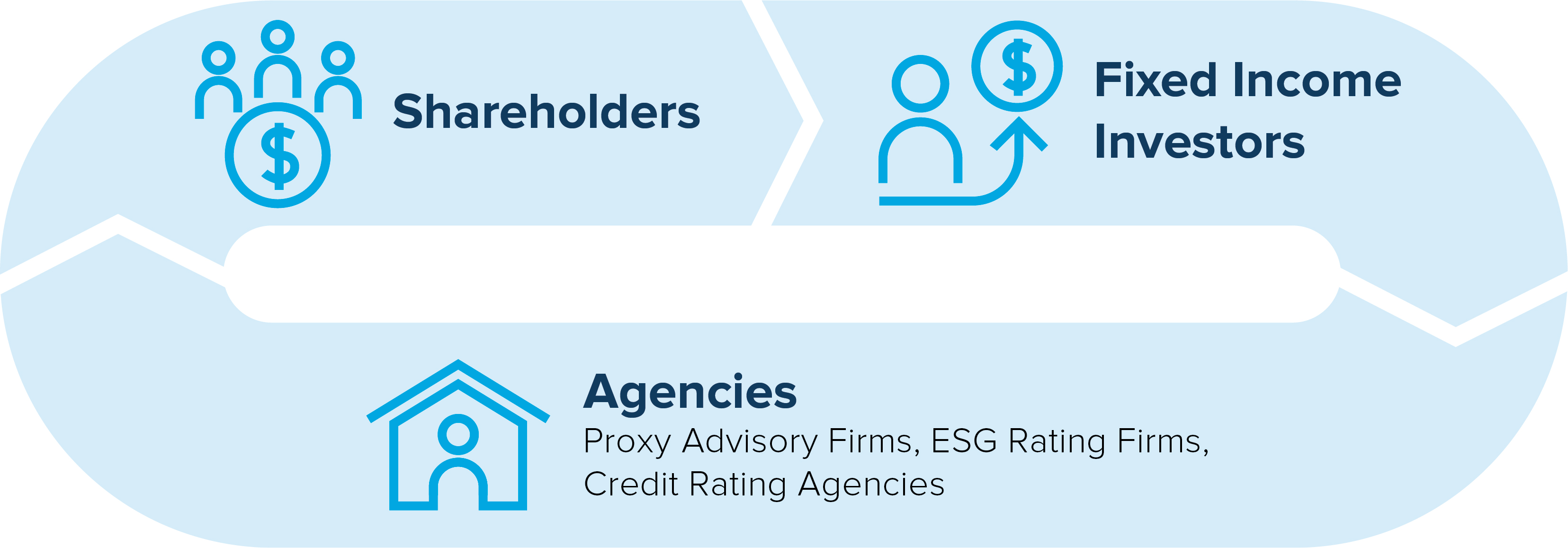
CORPORATE GOVERNANCE MATTERS 2024 PROXY STATEMENT 33 OvercourseCompany’s Common Stock which have been beneficially owned for a period of these meetings, two topics48 consecutive months prior to the record date of any meeting of shareholders to ten votes on each ballot item (“long-term shares”). Holders of Common Stock shares held for less than 48 consecutive months are entitled to one vote per each such share (“short-term shares”).consistently discussed: climate change and diversity and inclusion. The feedback received as part of these conversations were informative and valuable in forming corporate strategy in 2021 as it relates to these issues. For example, as a result of discussionapproved by over 90% of our environmentalshareholders in 1985 and social goals,serve to amplify the Corporate Social Responsibility and Sustainability Committee has recommendedvoice of long-term shareholders by providing them, regardless of affiliation or views on management or the Board, more say by virtue of their longer financial commitment to the Compensation Committee an ESG compensation modifierCompany.2021. Also, following investor dialogue regarding bestor receive shares, (3) are entitled to vote cumulatively for Directors, or (4) differ in any respect other than the additional voting rights.expectations around reducingextensive shareholder engagement. Some investors expressed that they prefer one-share one-vote structures in all instances. Further, some of our carbon footprint,investors expressed that they did not have an established view on the Company has made a commitmenttopic or had no preference on these structures and deferred to include Scope 3 emissionsmanagement and the Board’s recommendations. These discussions have helped to its existing 2040 carbon neutrality goal.governance-relatedgovernance-related documents, may all can be found on the Company’s website, aflac.com, under “Investors,” then “Governance,” then “Governance Documents.” Shareholders can request printed copies of these documents by submitting a request to the Corporate Secretary at the address shown above.34 AFLAC INCORPORATED CORPORATE GOVERNANCE MATTERS The Compensation Committee assesses Director compensation and uses its independent compensation consultant to benchmark against peers every other year.The Compensation Committee assesses Director compensation and uses its independent compensation consultant to benchmark against the peer group at least every other year. CashAll Non-employee Directors (annual cash retainer) $135,000 annually All Audit and Risk Committee members Additional $10,000$15,000 annuallyChairs—Compensation, Corporate Governance, Corporate Social Responsibility and Sustainability, Corporate Development, Finance and Investment Additional $20,000$25,000 annuallyChair—Audit and Risk Additional $30,000$35,000 annuallyChair—CompensationAdditional $25,000 annuallyLead Non-Management Director Additional $50,000 annually 2020,2023, one Non-employee Director elected to receive restricted stock in lieu of aan annual cash annual retainer.24Aflac Incorporated
retainer and other cash compensation.Corporate Governance MattersTiming of equity grant Upon joining the Board nonqualified stock options, restricted stock, stock appreciation rights, restricted stock, or a combination thereofaggregate value as determined by the Board not in excess of the value of a nonqualified stock option covering 20,000 shares of Common Stock Annually, at the discretion
of the Boardrestricted stock, nonqualified stock options, stock appreciation rights, or a combination thereof $155,000 $165,000 (3)(1)Position If the Board grants restricted stock, it may permit Non-employee Directors to elect to receive nonqualified stock options instead. In 2020, three Non-employee Directors made this election. Two Non-employee Directors elected to receive all stock options and one Non-employee Director elected to receive half of the grant value in the form of nonqualified stock options.Ownership GuidelineWhat Counts What Does Not Count (2)Non-employee DirectorsThe values of any stock options or stock appreciation rights are determined based upon the most current Black-Scholes-Merton three-year period valuation price of optionas determinedbeneficially owned by the Compensation Committee’s independent compensation consultant. For grants made in the three-year period of 2019 to 2021, our deemed fair value of aNon-employee Director, as well as time-based, unvested restricted shares.Stock options (vested or unvested) do not count toward these stock option is $6.54.ownership guidelines.Non-employee Directors are required to hold shares worth at least four times the amount of the annual cash retainer.“Stock Ownership Guidelines; Hedging“Additional Executive Compensation Plan Practice and Pledging Restrictions”Procedures” on page 48.CORPORATE GOVERNANCE MATTERS 2024 PROXY STATEMENT 35 Non-employeeNon-employee Directors at the time of an annual meeting become vested at the next annual meeting, generally subject to continued service. Notwithstanding the foregoing, as noted under the “Cash Compensation” section above, stock options granted to Non-employee Directors at their election in lieu of their annual cash retainer and other cash compensation are fully vested upon grant. Upon death or disability or a change in control of the Company, Non-employee Directors will become 100% vested in all outstanding options and stock awards.2002 and2002. Dr. Rimer is the only Non-employee Director who participates in the retirement plan. The dollar value and length of payment of the annual retirement benefits were frozen effective May 3, 2010. For qualifying participants, payments under the plan begin upon termination of service as a Non-employee Director and continue for the shorter of the number of years the participant served as Non-employee Director prior to May 3, 2010, or the life of the participant (or, if applicable, his or her surviving spouse). On an annual basis, such payments are equal to the annual compensation paid to a participant during his or her service as a Non-employee Director during the 12-month period immediately preceding May 3, 2010, excluding committee fees, and subject to a cap of $30,000 for the annual cash retainer fee and $2,000 per meeting. The Non-employee Directors do not participate in any nonqualified deferred compensation plans.2021 Proxy Statement25Corporate Governance Matters20202020.Name(1) Fees
Earned
or Paid in
Cash(2)
($) Stock
Awards(3)
($) Option
Awards(4)
($) Change in
Pension
Value and
Nonqualified
Deferred
Compensation
Earnings(5)
($) All Other
Compensation
($) Total
($)W. Paul Bowers 266,667 - 150,027 - - 416,694 Toshihiko Fukuzawa 138,333 155,012 - - - 293,345 Robert B. Johnson* 48,333 - - - - 48,333 Thomas J. Kenny 110,000 - 150,027 - - 260,027 Georgette D. Kiser 145,000 155,012 - - - 300,012 Karole F. Lloyd 178,333 155,012 - - - 333,345 Nobuchika Mori** 90,000 130,809 - - 220,809 Joseph L. Moskowitz 173,333 77,506 75,017 - - 325,856 Barbara K. Rimer, DrPH 158,333 155,012 - 33,411 - 346,756 Katherine T. Rohrer 139,167 155,012 - - - 294,179 Melvin T. Stith 138,333 155,012 - - - 293,345 *Robert B. Johnson’s term on the Board of Directors ended May 4, 2020.**Nobuchika Mori was elected to the Board of Directors on May 4, 2020.(1)Daniel P. Amos is not included in the table because he is an employee and thus did not receive compensation for his services as a Director. The compensation received by Mr. Amos as an employee is shown in the Summary Compensation Table.(2)W. Paul Bowers elected to receive his annual retainer in restricted stock. The value of these shares on the grant date was $215,000.(3)This column represents the dollar amount recognized in accordance with Financial Accounting Standards Board Accounting Standards Codification Topic 718 (“ASC 718”) for financial statement purposes with respect to the 2020 fiscal year for the fair value of restricted stock granted in 2020. The fair values of the awards granted in 2020 were calculated using the closing per-share stock price on the date of grant of $35.75 for the awards granted on May 4, 2020. As of December 31, 2020, the following Non-employee Directors held the following number of restricted stock awards: W. Paul Bowers, 6,145; Toshihiko Fukuzawa, 4,430; Georgette D. Kiser, 4,430; Karole F. Lloyd, 4,430; Nobuchika Mori, 3,738; Joseph L. Moskowitz, 2,215; Barbara K. Rimer, 4,430; Katherine T. Rohrer, 4,430; and Melvin T. Stith, 4,430.(4)In accordance with the SEC’s reporting requirements, this column represents the dollar amount recognized in accordance with ASC 718 for financial statement purposes with respect to the 2020 stock option grants. The Company’s valuation assumptions are described in Note 12 “Share-Based Compensation” in the Notes to the Consolidated Financial Statements in the Company’s Annual Form 10-K filed with the SEC for the year ended December 31, 2020. Stock options granted to Non-employee Directors vest after one year generally subject to continued service. As of December 31, 2020, each Non-employee Director held stock options covering the following number of shares of Common Stock: William P. Bowers, 23,701; Thomas J. Kenny, 23,701; Joseph L. Moskowitz, 53,580; and Barbara K. Rimer, 97,322.(5)Represents change in pension value. Barbara K. Rimer participates in the Directors’ retirement plan. The other directors do not participate in the Directors’ retirement plan since they first became Directors after the plan was closed to new participants in 2002.
2023.26Aflac IncorporatedW. Paul Bowers 225,011 165,065 — — — 390,076 Arthur R. Collins 135,000 165,065 — — 17,618 317,683 Toshihiko Fukuzawa* 45,000 — — — — 45,000 Miwako Hosoda 90,000 346,804 — — — 436,804 Thomas J. Kenny 160,000 165,065 — — 13,077 338,142 Georgette D. Kiser 150,000 165,065 — — — 315,065 Karole F. Lloyd 185,000 165,065 — — — 350,065 Nobuchika Mori 135,000 165,065 — — — 300,065 Joseph L. Moskowitz 175,000 165,065 — — 16,628 356,693 Barbara K. Rimer, DrPH 160,000 165,065 — — 16,483 341,548 Katherine T. Rohrer 160,000 165,065 — — — 325,065 36 AFLAC INCORPORATED CORPORATE GOVERNANCE MATTERS Corporate Governance Matters2020CASH 3 YEAR TSR DIVIDEND +3.7% +8.6% RETURN ON NET EARNINGS ADJUSTED EPS EQUITY 15.3% $4.8B +10.8%* SHARE AFLAC JAPAN SOLVENCY AFLAC RISK REPURCHASE MARGIN RATIO BASED CAPITAL $1.5B 960% 508% *Adjusted earnings per diluted share excluding foreign currency impact is not calculated in accordance with generally accepted accounting principles in the(GAAP). See the Appendix to this Proxy Statement for the definition of this non-GAAP measure and reconciliation to the most comparable GAAP financial measure.COMBINED RISK-BASED CAPITAL (RBC) RATIO(1)PAY-FOR-PERFORMANCE COMPENSATION PHILOSOPHYOur executive compensation program is designedOUR COMPENSATION PHILOSOPHY PILLARS 1 We Pay for Performance. 2 We Seek to Attract and Retain Talent. 3 We Use Compensation “Best Practices.” drive shareholder value via three critical features:
this Proxy Statement for the definition of these non-GAAP measures and reconciliation to the most comparable GAAP financial measures.1.A pay-for-performance philosophy and compensation program structure that directly motivates our executives to achieve our annual and long-term strategic and operational goals2.Compensation elements that help us attract and retain high-caliber talent to lead the Company3.“Best practice” compensation governance policies, such as stock ownership guidelines, clawback provisions, and no change-in-control excise tax gross-upsCEO TARGET COMPENSATION MIX CEO +OTHER NEOs AVERAGE TARGET COMPENSATION MIX



2021 Proxy Statement27CORPORATE GOVERNANCE MATTERS 2024 PROXY STATEMENT 37 Corporate Governance Matters20202023 Management Incentive Plan PerformancePerformance PerformanceResult Corporate Metric: Adjusted Earnings per Diluted Share on a Consolidated Basis for the Company (Excluding Foreign Currency Effect) $6.56* 
Adjusted earnings per diluted share on a consolidated basis for the Company (excluding foreign currency effect)$4.89Exceeded Maximum GoalU.S. Segment Metrics: Increase (decrease) in New Annualized Premium5.06% (31.14%)Below Minimum Goal
Increase (decrease) in Net Earned Premium1.89% (1.17%)Below Minimum Goal
Cost Savings from Transformation Initiatives $55.0 million 
Japan Segment Metrics: New Annualized Premium (in billions of Yen) (excluding Japan Post sales)yen) ¥ 50.260.7Below Minimum Goal
Decrease in Net Earned Premium (third sector and first sector protection sales)(as adjusted for MIP)**(6.84)% (0.98%)Above Minimum Goal
Cost Savings from Transformation Initiatives (in billions of yen) ¥4.9 
Global Investments Metrics: Net Investment Income (U.S. and Japan GAAP segments only)Segments Only) Budget plus 4.76%5.66%Exceeded Maximum Goal
Credit Losses/Impairments $( $125200 million)
MIP Modifier: Above Target GoalFour Sustainability Objectives +0% Three Sustainability
Objectives Achieved2018-2020Performance PerformanceResult Metrics: Currency Neutral AROE Result (70% weighted)
(70% Weighted)15.0% 15.1%Above Target Goal
SMR (15% weighted)
(15% Weighted)917% 953%Exceeded Maximum Goal
RBC (15% weighted)
(15% Weighted)675% 543%
RTSR Modifier 96th percentile Above Target Goal28Aflac Incorporated

Exceeded Maximum Goal 
Below Minimum Goal 
Between Target and Maximum Goal 
Between Minimum and Target Goal 
(“Say-on-Pay”)2020,2023, the Company’s total return to shareholders, including reinvested cash dividends, has exceeded 7,689%15,446%, compared with 2,326%3,075% for the Dow Jones Industrial Average, 2,088%2,812% for the S&P 500 Index, and 895%1,471% for the S&P 500 Life & Health Insurance Index over the same period.

The Board of Directors recommends a vote FOR our executive compensation.compensation program.20212024 Annual Meeting of Shareholders and Proxy Statement.”Compensation Discussion and AnalysisThis Compensation Discussion and Analysis (“CD&A”) provides a detailed description of our executive compensation philosophy and programs, the decisions made by the Compensation Committee related to those programs, and the factors considered when making those decisions.SIGNIFICANT INFORMATION IN THIS SECTION30IN THIS SECTION 312020 3435354044482021 Proxy Statement29EXECUTIVE COMPENSATION 2024 PROXY STATEMENT 39 This CD&A focuses on our named executive officers (“NEOs”) for 2023, who were: Executive CompensationThis CD&A focuses on our named executive officers (“NEOs”) for 2020, who were:




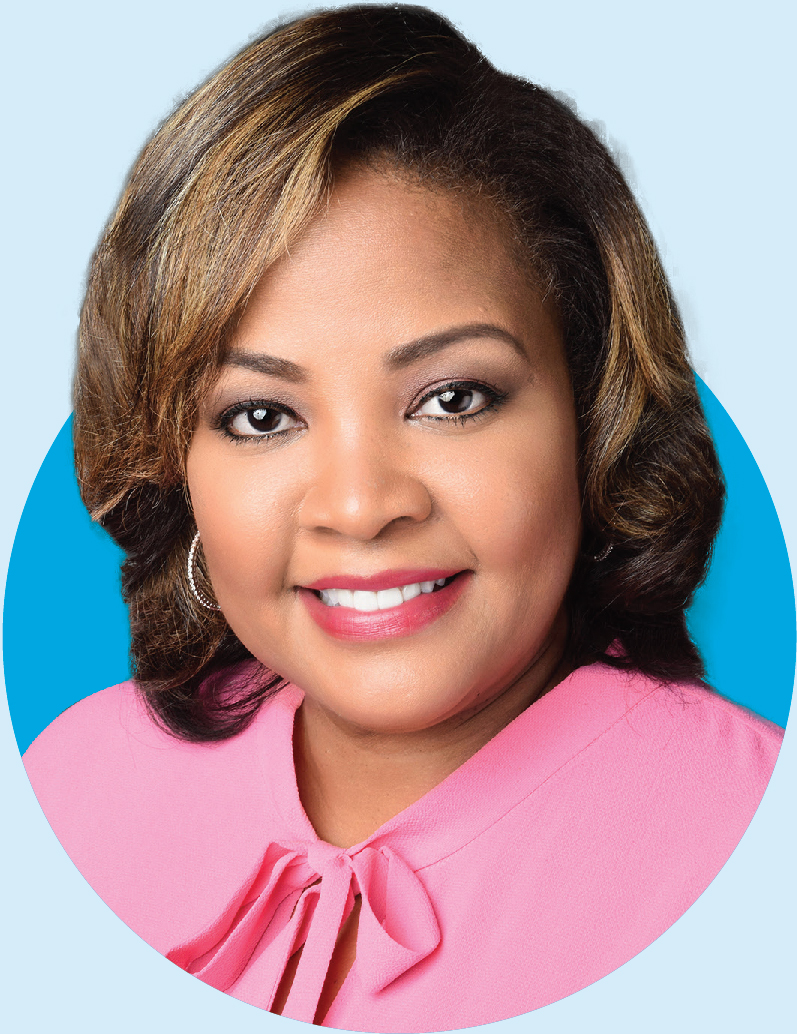
Chairman and Chief Executive Officer
Executive Vice President, Chief Financial Officerand Treasurer
CrawfordPresident, Chief Operating Officer
Eric M. KirschExecutive Vice President, Global Chief Investment Officer; President, Aflac Global Investments
Executive Vice President, General CounselSummarythe mostan appropriate and effective method for creating alignment with shareholder interests and that it has played a significant role in making the Company an industry leader. Importantly, performance-based elements of our compensation programs apply to all levels of Company management—not just the executive officers. In fact, pay-for-performance components permeate compensation at nearly every employee level. As a result, we are able to attract, retain, motivate, and reward talented individuals who have the necessary skills to manage our growing global business on a day-to-day basis and to position the Company for success in the future.Board’sCompensation Committee’s independent compensation consultant, Mercer LLC, works with the Compensation Committee to review executive compensation practices, including the competitiveness of pay levels, design issues, market trends, and other technical considerations.1 2 3 Compensation elements that help us attract and retain high-caliber talent to lead the Company “Best practice” compensation governance policies, such as stock ownership guidelines, clawback provisions, and no change-in-control excise tax gross-ups 
40 A pay-for-performance philosophy and compensation program structure that directly motivates our executives to achieve our annual and long-term strategic and operational goalsAFLAC INCORPORATED 
Compensation elements that help us attract and retain high-caliber talent to lead the Company 
“Best practice” compensation governance policies, such as stock ownership guidelines, clawback provisions, and no change-in-control excise tax gross-ups30Aflac IncorporatedEXECUTIVE COMPENSATION Executive Compensation2020 Business OverviewTSR
+3.7%38th 41stconsecutive year of increasing the dividend.3 YEAR
+8.6%99.6%total shareholder return*TSR* was 8.6%99.6%, versus -11.7%57.8% for the S&P 500 Life and Health Insurance subindex.index. Our annual total shareholder return*TSR* was -13.6%17.4%, versus -9.5%4.6% for the S&P 500 Life and Health Insurance index.3 YEARCOMPARED
RELATIVE
TO PEERS63%96.0%RETURN ON EQUITY 15.3%We generated a strong returnon equity, and our AROE(1) forthe full year was 15.0%.(2)$4.8BNet earnings increased 44.6% over 2019.22.1% $4.7B +10.8%Adjusted earnings per diluted share, excluding the impact of foreign currency.
Sales were down 30.8%up 5.0%.Aflac Japan:Sales were down 36.2%.down1.17%up 1.9%, which was above the target MIP goal.
Sales were up10.9%.0.98%6.8%, which was slightly below the target MIP goal.Capital REPURCHASED SHARES SHARE REPURCHASEREGULATORY
CAPITAL RATIOS*1.5B37.938.9 million of the Company’s shares as part of a balanced capital allocation program.REGULATORY CAPITAL RATIOS*960%508%Risk BasedU.S. Combined Risk-Based Capital (RBC) Ratio(3)As of December 31, 20202023 The adjusted return on equity (AROE), excluding the impact of foreign currency, (AROE)and adjusted earnings and adjusted earnings per diluted share (adjusted EPS), excluding the impact of foreign currency, (adjusted EPS) metrics are our principal financial measures used to evaluate management’s performance, and we believe they continue to be a key driver of shareholder value. See the Appendix A to this Proxy Statement for definitions of these non-GAAP measures and reconciliation to the most comparable GAAP financial measures.(2)The Company recognized a one-time income tax benefit of $1.4 billion due to the release of valuation allowances which were predominantly established on the Company’s deferred foreign tax credit benefits. 
2021 Proxy Statement31EXECUTIVE COMPENSATION 2024 PROXY STATEMENT 41 Executive Compensation20202023 Operating Results2020,2023, the Company advanced the vision of offering high-quality supplemental products and service through diverse distribution outlets, buildingcontinued to build upon our market-leading position in supplemental health insurance to drive long-term shareholder value.Pandemic ImpactAt the onset of the COVID-19 global pandemic, the majority of the Company’s employees in Japan and the U.S. shifted to remote working environments with limited returns to office mainly in Japan undertaken as warranted by local conditions. Both Aflac Japan and Aflac U.S. took measures to address employee health and safety and increase employees’ ability to develop and maintain more flexible working conditions. The Company also provided financial support to agents and agencies with interest-free loans to help manage through this difficult period and granted grace periods for premium payments giving policyholders relief without fear of their coverage being cancelled. To support front-line efforts to combat the virus in both countries, the Company contributed more than a combined $10 million to organizations oriented around first-responders. In addition, the Company accelerated investments in digital tools to accommodate both our customers and distribution in a virtual environment. In line with business continuity planning, the Company established command centers to monitor and communicate developments, and operations remained stable throughout the year. Enterprise crisis management meetings were chaired by the President and COO with the Chair of the Audit and Risk Committee of the Board attending.Aflac Japan and Aflac U.S. both experienced a significant decrease in sales due to the effects of the pandemic and related government responses like emergency orders, resulting in a steep decline in face-to-face meetings between sales people and customers. In response, both Aflac Japan and Aflac U.S. accelerated investments in digital initiatives to improve productivity, efficiency, and customer service over the long term. The pandemic weighed on revenue performance, however, profit margins and earnings-per-share remained strong as benefit ratios were positively impacted by lower routine medical claims and absorbed an increase in claims related to COVID-19. The Company also defended investment income despite economic conditions driving down interest rates. Finally, the Company also took prompt action to strengthen its capital and liquidity position should pandemic conditions trend negative, and continued to undertake de-risking activity in its investment portfolios adjusting to market conditions throughout the year.On December 2, 2019, the Company gave guidance for 2020 consolidated adjusted earnings per diluted share of $4.30 to $4.50 using an exchange rate of 110 yen to the dollar, which on a currency-neutral basis and normalized for 2019 equated to approximately a 1% increase. On April 29, 2020, recognizing the challenges to production and potential volatility in core earnings drivers associated with the evolving nature of the global pandemic, the Company withdrew earnings guidance for 2020 with the release of its first quarter results. Ultimately, the Company reported adjusted earnings per diluted share of $4.96, or $4.92 excluding the effect of foreign currency, which were positively impacted by the release of valuation allowances on deferred foreign tax credits, which were allowed due to U.S. tax regulations released in the third quarter of 2020. Aside from the favorable tax outcome, earnings per share benefited from stable pre-tax profit margins, benefited by lower routine medical claims and cost control measures, and favorable investment income.For the year, the Company generated a strong return on equity of 15.3% and our AROE, excluding the impact of foreign currency, for the full year was 15.0%. The combination of strength in pre-tax profit margins supported by generally favorable benefit ratios and investment income with strength in capital and cash flow supported the proactive return of capital in the form of share repurchase and common dividend increases.Management and the Board are committed to ensuring comprehensive risk management and to safeguarding the Company’s financial strength. In 2020, core capital strength measures remained very strong including core metrics of holding company leverage within a conservative range of 20% to 25%, Aflac Japan’s SMR ratio above 900%, and Aflac U.S. RBC ratio above 500%. The Company’s strong capital and cash flow positions continue to support our financial strength ratings, which are among the highest in the industry, and our 38-year track record of increased Common Stock dividends.Aflac U.S.The Aflac U.S. sales team has worked to adjust its sales approach given the reduction in face-to-face sales since the onset of the pandemic. Key elements to this approach include realizing sales at the worksite through an enrollment call center, video enrollment through co-browsing and self-enrollment. The traditional agent sales team is also using virtual recruiting and training through video conferencing to maintain the recruiting pipeline. The Aflac U.S. broker sales team is focused on product enhancements due to COVID-19 as well as leveraging technology-based solutions to drive enrollment. Aflac U.S. has also accelerated investments in digital initiatives designed to improve long-term productivity, efficiency, and customer service.32Aflac IncorporatedExecutive Compensation management continued to focus on serving the benefit needs of small businesses with its extensive agent distribution channel, as well as the needs of larger employers by continuing to build relationships with brokers. The pandemic’s impact on sales also pressured premium growth rates in the U.S., which has been partially offset by lower lapse rates. While 2020 sales were depressed, the Company’s distribution platform has pivoted to utilizing digital means to drive sales and enrollment, thus gradually reducing the remaining gap between pre- and post-pandemic declines in sales.While the Company has been known for its organic growth, 2020 was also marked by prudent investments to promote growth and to drive efficiencies. Aflac U.S. has set the direction for its strategy for the next five years and plans to increase its attractiveness in the large case market by accelerating an integrated platform and go-to-market strategy for a full suite of group benefits. Most notably, Aflac and Aflac New York, took an opportunity to accelerate growth through a measured buy-to-build transaction with the acquisition of Zurich North America’s U.S. group life disability and absence management business (“2020 Zurich business acquisition”) in November 2020 for total consideration of approximately $140 million. This strategy is also supported by the 2019 acquisition of Argus Dental and Vision. In 2020, we piloted Aflac’s new network dental and vision product in 10 states under limited distribution in preparation for a national launch in early 2021. Aflac U.S. is also in its second year of the build-out of its consumer markets for the digital direct-to-consumer sale of insurance, and sales made through that platform have continued to grow. While these investments were largely responsible for the elevated expense ratio, Aflac U.S.’s pretax profit margin ended the year in the middle of the forecasted range. Finally, in the fourth quarter of 2020, Aflac Incorporated made a $200 million strategic investment in Trupanion, a leading U.S. and Canadian pet insurer. The alliance is a multi-year build with planning in 2021 and then building-out Aflac and Trupanion co-branded product distribution in the worksite.Aflac JapanSimilarly, to counter the challenging face-to-face sales environment brought on by the pandemic, Aflac Japan focused on generating new business through direct mail to existing and prospective customers, digital and web-based sales to groups, and a new smartphone-enabled insurance application that allows the customer and an Aflac Japan operator to see the same screen. In Japan, management continued to strengthen relationships with customers and agencies by focusing on a new cancer rider strategy. This rider strategy allowed Aflac Japan cancer policyholders a simple way of updating their existing coverage by adding a mid-term rider to their existing policy without having to lapse. Aflac Japan expects this simplified approach to appeal to younger customers and new sales agents, while also lowering new product refreshment costs and benefiting persistency. Cancer insurance sales results also reflected a sharp decline in the sale of cancer products as Japan Post Holdings Co., Ltd. (“Japan Post”) continued to focus on restoring customer trust after the internal investigation of the sale of Japan Post Insurance products through Japan Post Co., Ltd. and Japan Post Insurance Co., Ltd. While the investigation and eventual suspension of sale of Japan Post Insurance products did not involve the sale of Aflac Japan cancer policies, the events had a negative impact on cancer sales in the postal network.During 2020, Aflac Japan also accelerated investments in digital and paperless initiatives designed to increase long-term productivity, efficiency, customer service and business continuity. The paperless initiative represents a ¥10 billion multi-year investment, that when completed, will result in ¥3 billion of annual savings, create a more nimble operating platform for disaster recovery purposes, and helps to reduce our carbon footprint in Japan. Aflac Japan is investing to increase operational efficiency while carrying out activities to expand sales of our existing products and also paying close attention to profitability and investment risk, which is especially important given the uncertainty ushered in by COVID-19.Despite the competitive market for cancer and medical insurance products, the persistent low interest rate environment in Japan and higher expenses related to technology investments and marketing, Aflac Japan still delivered a strong pretax profit margin to the high end of the forecasted range.Global InvestmentsGiven the volatile market environment, our net investment income performed very well. Net investment income benefited from continued expansion of floating rate loan and alternative investments, which served to combat persistently lower interest rates in both the U.S. and Japan. Net investment income also benefited from our decision to hedge against falling interest rates, net of locking in hedge costs; tactical asset allocation decisions; and a significant increase in call income as issuers redeemed bonds due to lower refinancing rates.Net investment losses were primarily comprised of allowances for credit losses, currency effect revaluation losses on our Aflac Japan U.S. dollar loans, and mark-downs on equity securities. Partially offsetting this was a net gain on security sales and our derivative hedging program.Strategically, the Aflac Global Investments strategic alliance and investment in Varagon Capital Partners continued to perform well and contributed to corporate investment income during 2020.2021 Proxy Statement3342 AFLAC INCORPORATED EXECUTIVE COMPENSATION Executive CompensationEXECUTIVE COMPENSATION 2024 PROXY STATEMENT 43 management compensation program is one element of why we are an employer of choice. Our executive compensation program directly links compensation incentives with our business goals and shareholder interests.KEY ELEMENTS OF OUR 2020 EXECUTIVE COMPENSATION PROGRAMCEO pay mix
Pay Mix and ElementTerms TermsPerformance Measure(s) Objective(s) Base Salary

The fixed amount of annual cash compensation for performing day-to-day responsibilities. Generally reviewed biennially for potential increase based on a number of factors, including market levels, performance, and internal equity. Levels set based on market data, job scope, responsibilities, experience, and individual performance. 
Management Incentive Plan

increase in new annualized premium, increase innet earned premium,(excluding Japan Post sales), decrease innet earned premium, (third sector and first sector protection sales)near-termnear-term drivers of long-term value for our business
Long-term Incentives
MIP Modifier can adjust total MIP compensation up or down by 5% based on achievement of sustainability goals.

performance.performance and relative total shareholder return.AROE, 
(“RBC”), and (RBC)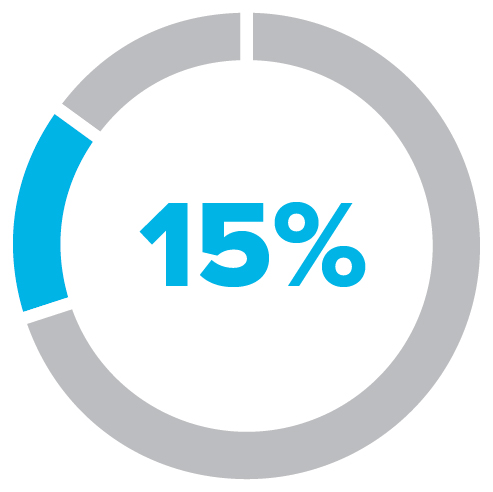
(“SMR”)(SMR)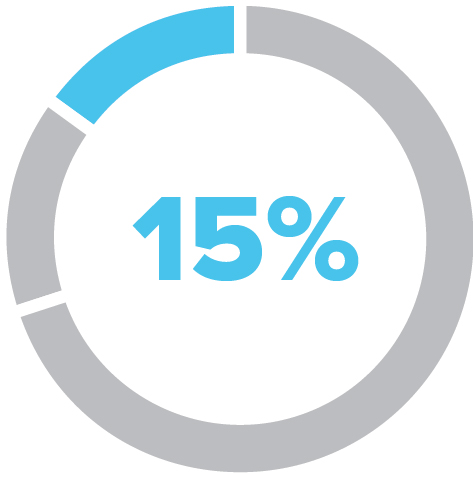
AROE, RBC, and SMR are metrics that affect our long-term business strategy and operating environment. Payout is also contingent on a relative TSR modifier.modifier, which can adjust PBRS payouts up or down by 20%.long-termlong-term value drivers for our business34Aflac Incorporated44 AFLAC INCORPORATED EXECUTIVE COMPENSATION Executive Compensation20202023 Say-on-Pay VoteThe Company has a history and a well-earned reputation with its shareholders as a transparent organization. That commitment to transparency on all levels was a driving force behind our decision in 2008 to allow shareholders a “say-on-pay” advisory vote, years before such votes became mandatory for most public companies. In 2020, 98% of our shareholders voted in favor of our executive compensation program.Consistent with our approach in prior years, the Company engaged in shareholder outreach efforts throughout 2020. The feedback from these conversations, together with a thorough analysis of best practices and guidance from our independent compensation consultant, was incorporated into the Compensation Committee’s regular review of our compensation programs.Compensation program changes, if any, are made with a focus on ensuring that pay is aligned with Company performance and corporate strategy. We continually analyze our compensation program to ensure that we remain current in our approaches, a leader in executive compensation best practices, and cognizant of shareholder concerns. Moreover, we pride ourselves on incorporating ethics and transparency into everything we do, including compensation disclosure. Accordingly, we will continue our review and dialogue with investors to determine if additional changes are warranted.After careful consideration, the Compensation Committee did not make any changes to our executive compensation program and policies, neither due to the impacts of COVID-19 nor as a result of the most recent say-on-pay vote in 2020. As noted in the Program Changes for 2021 section below, the Compensation Committee has made changes to the MIP formula to include an ESG modifier for 2021.
programs reflectprogram reflects the strong, long-standing governance policies outlined below.What We Do 


What We Don’tDon't Do 

 First public company in the U.S. to provide shareholders with a say-on-pay vote (voluntary action starting in 2008, three years before such votes were required)
First public company in the U.S. to provide shareholders with a say-on-pay vote (voluntary action starting in 2008, three years before such votes were required)
 Prioritize active engagement with our shareholders regarding our compensation program
Prioritize active engagement with our shareholders regarding our compensation program
 History of responding to our shareholders’ feedback
History of responding to our shareholders’ feedback
 Adherence to a rigorous pay-for-performance philosophy in establishing program design and targeted pay levels for NEOs
Adherence to a rigorous pay-for-performance philosophy in establishing program design and targeted pay levels for NEOs Independent
Independent Incorporate Sustainability goals into our short-term incentive plan (MIP)
Incorporate Sustainability goals into our short-term incentive plan (MIP) Compensation Committee oversees the program
Compensation Committee oversees the program
 Independent compensation consultant is hired by and reports to the Compensation Committee
Independent compensation consultant is hired by and reports to the Compensation Committee
 Annual report by the independent compensation consultant to the full Board on CEO pay and performance alignment
Annual report by the independent compensation consultant to the full Board on CEO pay and performance alignment
 Long-standing stock ownership guidelines for executive officers and Non-employee Directors
Long-standing stock ownership guidelines for executive officers and Non-employee Directors
 Long-standing clawback policy,
Long-standing clawback policy,
 Double trigger requirements in all employment agreements with change-in-control provisions
Double trigger requirements in all employment agreements with change-in-control provisions
 No golden parachute payments for CEO following a change in control
No golden parachute payments for CEO following a change in control
 Officers and Directors may not implement 10b5-1 plans unless approved by the Compensation Committee
Officers and Directors may not implement 10b5-1 plans unless approved by the Compensation Committee
 All employees are prohibited from hedging or engaging in short sales of Company stock
All employees are prohibited from hedging or engaging in short sales of Company stock
 Executive officers and Directors may not pledge Company stock
Executive officers and Directors may not pledge Company stock
 No repricing underwater stock options
No repricing underwater stock options
 No change-in-control excise tax gross-ups
No change-in-control excise tax gross-ups2021 Proxy Statement35EXECUTIVE COMPENSATION 2024 PROXY STATEMENT 45 Compensation Committee
Management whoMercer typically assists in the following areas:•providing comparative company performance to determine NEO compensation;•evaluating the competitiveness of the Company’s executive compensation and benefit programs;•reviewing plan design issues and recommending improvements;•apprising the Compensation Committee of trends and developments in the marketplace;•assessing the relationship between executive pay and performance;•assessing proposed performance goals and ranges for incentive plans;•conducting training sessions for the Compensation Committee; and•proposing the compensation for Non-employee Directors.$169,074$314,624 in 2020.2023. Management retained certain Mercer affiliates to provide additional services not pertaining to executive compensation during 2020,2023, and approved payments for those services totaling $24,705.$500,366. Those additional services included developing a strategic approach to create a more diverse sales channel network across the U.S. to support increased opportunities for revenue growth. In addition, as the Company grows the sales of its insurance products through brokers in the U.S., this has resulted in commission payments totaling $36,749,804$32,011,634 during 20202023 to the broker subsidiaries of Mercer. These subsidiaries are separate from the subsidiary that provides compensation consulting to the Company. As reported by Mercer to the Compensation Committee, the total payments from the Company represented less than 0.22%0.14% of Mercer’s parent company’s annual revenue. The Compensation Committee assessed Mercer’s independence pursuant to SEC rules and NYSE listing standards and concluded that no conflict of interest exists with respect to the work Mercer performs for the Compensation Committee.46 AFLAC INCORPORATED EXECUTIVE COMPENSATION InOverall, in terms of the size factors considered, the Company is positioned near the middle of this group.2020 Peer Group2023 PEER GROUP The Chubb Corporation CNO Financial Group, Inc.Equitable Holdings36Aflac IncorporatedExecutive Compensation20202023 peer group from the peer group used in 2019.2022. The data below shows how the Company’s revenues, total assets, and market value compare to the peer group medians:($ millions) Revenue(1) Total Assets(2) Market Value(2) Aflac Incorporated $22,147 $165,086 $31,238 Peer Median $31,981 $125,987 $30,869 Percentile Rank for Aflac Incorporated vs. Peers 44th 54th 51st (1)($ millions) Aflac Incorporated $18,701 $126,724 $48,211 Peer Median $36,121 $228,861 $36,631 Percentile Rank for Aflac Incorporated vs. Peers 39th 43rd 78th the year ending December 31, 2020(2)As of December 31, 2020Performance-Based Compensation: How Performance Goals Are SetThe Board and the Compensation Committee believe it is important for the Company to manage the business to provide long-term valueyear ending December 31, 2023shareholders. Therefore, performance goals under the MIP and LTI programs involve metrics that drive shareholder returns, and payouts depend entirely upon the level of achievement of those goals. The following sections provide detailpeer group. See “Program Changes for 2024” which begins on how we select metrics under the MIP and LTI program, determine performance target amounts and other important considerations in setting these targets.We have used the same methodology for setting MIP goals for many years. MIP segment metrics for Aflac U.S., Aflac Japan, and Global Investments are consistent with assumptions used in developing segment financial projections (described below) based on the Company’s best estimates for the coming year. The segment projections are consolidated into the corporate financial projection used to develop earnings per share guidance.The goal-setting process generally proceeds in two stages.1.EXECUTIVE COMPENSATION 2024 PROXY STATEMENT 47 President and COO, and CFO, in consultation with Mercer, recommend to the Compensation Committee the specific Company performance objectives that are aligned with corporate strategy, and thus will drive shareholder value and ensure financial soundness.persistency.capital ratios.2.measure. goal.20202023 MIP goals were approved by the Compensation Committee in March 2020.2023.2020,2023, the Compensation Committee established the following metrics under the MIP:•Corporate Metric: Adjusted earnings per diluted share excluding foreign currency effect•U.S. Segment: New Annualized Premium and Earned Premium•Japan Segment: New Annualized Premium and Earned Premium•Global Investment Metrics: Net Investment Income (U.S. and Japan GAAP Segments only) and Credit Losses/Impairments2021 Proxy Statement37Executive Compensation
Performance Excluding the Impact of Currencyreflectsaccounted for approximately 68%60% of total adjusted revenues for the year ending December 31, 2020.2023. The Company’s reported U.S. generally accepted accounting principles (“GAAP”) revenue, earnings, assets, book value, and cash flow are affected by changes in the relative values of the yen and the dollar, which ischanges are outside management’s control. Recognizing that strengthening and weakening of the yen can affect the value of the Company’s shares, the Compensation Committee believes it is important to ensure that executives bear the same exposure to the yen/dollar exchange rate as our shareholders and that equity awards under the LTI program and stock ownership requirements serve to align management with shareholders. When setting the MIP objectives, the Compensation Committee strongly believes that management should not be unduly rewarded because of short-term movement in the yen/dollar exchange rate when the yen is strong or penalized in periods of yen weakening when those currency shifts influence key incentive compensation metrics.48 AFLAC INCORPORATED EXECUTIVE COMPENSATION Considerationsexample,2023, the majority of the MIP performance metrics were structurally consistent with the 2022 performance objectives, including weightings with specific “sloping” targets, with ranges adjusted for the 2023 financial plan. Target ranges for Aflac U.S. and Japan budget metrics as well as the Global Investment metrics were widened and sloped. For all NEOs and MIP participants who are Executive Vice Presidents or Senior Vice Presidents, a new product launches and distribution expansion can materially affectmetric was added for costs savings resulting from Transformation Initiatives. As a result of our shareholder engagement discussions regarding tying our sustainability goals with business strategy, the Company’s sales resultsMIP modifier was continued in Japan from one year2023 to the next.further incentivize progress on key goals. In addition, low interest rates were expected to continue in 2020, especially in Japan. A low-rate environment would continue to pressure Aflac Japan’s net investment income, as private placement investments were called or matured, and lead the Company discontinued the practice of providing adjusted earnings guidance, but as set forth below the Company continues to continue actively managing down salesutilize an outlook of first sector savings-type products, which have returns that are more interest-rate sensitive.adjusted earnings per share in setting MIP goals. The goals for these metrics having been established before the onset of the global pandemic, are generally consistent with the Company’s public guidance as provideddisclosure during the 2019 December Outlook Call.Corporate MetricIn 2019, the Company generated $3.3 billion in net earnings or $4.43 per diluted share, which was up 17.5% for the year. The Company also reported a 2.7% increase in adjusted earnings for the year, which were $3.3 billion, and adjusted earnings per diluted shareFinancial Analysts Briefing on a currency-neutral basis of $4.42, which was up 6.3%. These results were at the upper end of our upwardly revised guidance range of $4.35 to $4.45 a share, assuming the 2018 weighted-average exchange rate of 110.39 yen to the dollar. When looking at the Company’s currency-neutral adjusted EPS estimates for 2020 and normalizing for roughly $0.05 per share of items identified and called out in 2019, the range equated to relatively flat adjusted EPS growth for 2020. The Company’s forecast for enterprise-wide variable investment income was approximately $60 million or $0.05 per share for 2020. This outlook incorporated headwinds related to low interest rates, continued strength in benefit ratios, elevated expense ratios tied to the build-out of Aflac Dental & Vision and consumer markets, proactive de-risking activity and investments to address the challenges we face to grow the top line in both JapanNovember 15, 2022, and the U.S.subsequent fourth quarter 2022 earnings release and return of capital to shareholders. Of note, the U.S. investments to build Aflac Network Dental and Vision as well as the consumer markets business represented a 1% headwind to adjusted EPS alone.U.S. and Japan Segment MetricsIn 2019, Aflac U.S. sales decreased 1.3% to $1.6 billion The 2019 sales results partially reflect a decline in recruiting and retention of commission-only agents in a strong economic environment. In addition, net earned premium increased 1.8% and benefited from persistency, which was 77.7% at the end of 2019.Moving into 2020, Aflac U.S. expected sales growth to recover in the low- to mid-single digits. As a result, the Company expected Aflac U.S. to deliver stable sales growth in 2020 within a range of 3.5% to 6.0% as we continued to invest in the existing platforms, including product development and efforts to facilitate producer growth and productivity. The Company expected increased productivity and strong persistency would lead to 0.00% to 1.25% growth of net earned premium in 2020.
conference call.38Aflac IncorporatedMetric Factors Considered in Setting Goal Levels Corporate Metric U.S. and Japan Segment Metrics EXECUTIVE COMPENSATION 2024 PROXY STATEMENT 49 Metric Factors Considered in Setting Goal Levels Global Investment Metrics MIP Modifier Executive CompensationJapan Post sales were expected to further decline in 2020 from the 2019 level, given that Japan Post was focused on restoring customer trust before restarting sales in earnest. As a result, the Compensation Committee determined to exclude Japan Post from sales in 2020 and that a lower range for sales was appropriate for 2020. Additionally, earned premium for third and first sector protection products were expected to decline largely due to both third and first sector policies becoming paid-up. The Compensation Committee set a range of ¥59.0 billion to ¥66.6 billion for sales excluding Japan Post and set a range of -1.1% to -0.2% for third sector and first sector protection earned premium.Global Investments MetricsFor 2020, Aflac Japan net investment income including hedge costs was expected to modestly decline, driven by higher yielding calls and maturities with lower projected reinvestment yields, reducing stable net investment income. Partially offsetting this headwind, the Company planned increased net investment income from the build-out of the U.S. dollar floating rate portfolio and growth in the alternatives portfolio, which increased variable net investment income.The Company also expected net investment income for Aflac U.S. to decline, partially reflecting lower yields as well as a reduction of assets as part of the RBC drawdown strategy, which modestly shifted net investment income from our Aflac U.S. segment to Aflac Incorporated.In order to properly balance income and risk, targets for 2020 were expressed as a range around budget based on a bottom-up review of asset allocation and cash flows. As in 2019, we continued to slope the ranges to require above budget performance for maximum payout, while not encouraging excessive risk-taking.President and COO, and CFO (with input from Mercer)Mercer as the Compensation Committee’s independent consultant) for setting amounts and metrics with respect to LTI awards of PBRS stock options, and time-based restricted stock. Option grants are awarded on the date of the meeting, and have a per share exercise price set at the closing price on the date of grant. The Company has never engaged in “backdating” of options. For PBRS, the specific Company performance objectives are aligned with long-term corporate strategy, and thus are intended to drive shareholder value and ensure financial soundness.2020,2023, the Compensation Committee established the following metrics for the 2020 PBRS grant:•Adjusted Return on Shareholders’ Equity•Risk Based Capital•Solvency Margin RatioRelative(RTSR) to Peer Group (RTSR) acts as a modifier. The Company may periodically make additional equity grants during the course of the year, but as a matter of policy does not make equity grants in advance of material news releases.2021 Proxy Statement3950 AFLAC INCORPORATED EXECUTIVE COMPENSATION executives atexecutives in our peers andpeer group and in the broader insurance sector, generally targeting market median, but also reflect each individual’s scope of responsibilities and performance. The Compensation Committee uses comparative market data for salaries in reviewing and determining the CEO’s salary, and the CEO uses the market data to inform his recommendations to the Compensation Committee regarding the salaries of the other executive officers.nineeleven years. Mr. Brodén, Mr. Crawford and Mr. CrawfordDyslin received base salary increases for their respective promotions effective January 1, 20202023 of approximately 12%14.5%, 5.0% and 13.8%19.0%, respectively, in light of the related increased responsibilities and leadership. Mr. Brodén and Mr. Crawford were promoted to Executive Vice President, CFO and President, COO, respectively, effective January 1, 2020. Mr. Kirsch did not receive a salary increase in 2020. Mrs. Tillman received a base salary increase of approximately 3% to align hertheir respective base salary competitively relative to similar roles in the market and to help secure her continued service and leadership for the Company.Named Executive Officer 2023 Base Salary
($)2022 Base Salary
($)% Change 2023
vs. 2022Daniel P. Amos 1,441,100 1,441,100 0.0 % Max K. Brodén 750,000 655,000 14.5 % Frederick J. Crawford 997,500 950,000 5.0 % Bradley E. Dyslin 625,000 525,000 19.0 % Audrey Boone Tillman 740,000 740,000 0.0 % MIP,Management Incentive Plan (MIP), an annual non-equity incentive plan, which was originally submittedapproved and adopted by the Compensation Committee of the Board in 2023 (“2023 MIP”). The 2023 MIP is a successor to and approvedthe predecessor MIP that, by shareholdersits terms, expired with the end of the 2022 bonus year. The essential attributes of the predecessor MIP are unchanged in 2012. The currentthe 2023 MIP, which, became effective January 1, 2018,unlike the predecessor MIP, was approvednot adopted subject to shareholder approval because of changes that were made to certain Internal Revenue Code provisions that cause shareholder approval to be unnecessary. The 2023 MIP will continue in effect until terminated by shareholders in 2017.20202023 for the NEOs. These targets, shown below, were determined to be competitive generally relative to market median targets for executives with comparable positions within our peer group. The target MIP payoutpayouts for Mr. BrodénAmos and Mr. Crawford wasBrodén were increased from 75% to 100%250% and 125% to 200%175%, respectively, based onto align their promotions effective January 1, 2020.Target MIPNamed Executive Officer Target MIP
(as percent of base salary)Daniel P. Amos 250 220%%Max K. Brodén 175 100%%Frederick J. Crawford 200 200%%Eric M. KirschBradley E. Dyslin200 200%%Audrey Boone Tillman 120 120%40Aflac Incorporated% EXECUTIVE COMPENSATION 2024 PROXY STATEMENT 51 Metric Compensation Rationale Daniel P.
Amos Max K.
Brodén Frederick J.
Crawford Eric M.
Kirsch Audrey
Boone
TillmanCorporate Objective Growth in adjusted earnings per diluted share, excluding the impact of foreign currency, is computed using the average yen/dollar exchange rate for the prior year, which eliminates fluctuations from currency rates that can magnify or suppress reported results in dollar terms. 45.45% 42.00% 42.50% 22.50% 37.50% Subtotal 45.45% 42.00% 42.50% 22.50% 37.50% U.S. Segment New Annualized Premium (increase over 2019) New annualized premium is policies sold and converted during the reporting period. 9.09% 8.00% 10.00% 2.50% 15.625% Earned Premium (increase over 2019) 9.09% 8.00% 10.00% 2.50% 15.625% Subtotal 18.18% 16.00% 20.00% 5.00% 31.25% Japan Segment New Annualized Premium (excluding Japan Post sales) Focuses on maintaining our leadership position in cancer and medical (third sector) insurance while also offering first sector protection products. Both third sector and first sector protection products are less interest-rate sensitive than savings-type products and have strong and stable margins. 13.64% 17.00% 15.00% 3.75% 15.625% Earned Premium (decrease in third sector and first sector protection sales) 13.64% 17.00% 15.00% 3.75% 15.625% Subtotal 27.28% 34.00% 30.00% 7.50% 31.25% Global Investments Net Investment Income (U.S. and Japan GAAP Segments only) Recognizes the need to responsibly invest the premium and other cash flows to maximize the risk-adjusted performance of our portfolio, subject to our liability profile and capital requirements. 9.09% 8.00% 7.50% 45.00% — Credit Losses/Impairments — — — 20.00% — Subtotal 9.09% 8.00% 7.50% 65.00% — Total 100% 100% 100% 100% 100% *Adjusted earnings, excluding the impact of foreign currency, is not calculated in accordance with GAAP. See the Appendix to this Proxy Statement for a definition for this non-GAAP financial measure and a reconciliation to the most directly comparable GAAP measure.2021 Proxy Statement41Metric Compensation Rationale Corporate Objective Adjusted earnings per diluted share on a consolidated basis for the Company (excluding foreign currency effect) Non-GAAP metric that reflects the overall profitability of the business and focuses management on a combination of top-line growth as well as prudent expense management. 45.60 % 40.00 % 42.50 % 20.00 % 33.33 % This is calculated as: Adjusted earnings, excluding the impact of foreign currency* ÷ Weighted-average diluted shares outstanding Subtotal 45.60 % 40.00 % 42.50 % 20.00 % 33.33 % U.S. Segment New Annualized Premium (increase over 2022) Metrics that focus on increasing insurance product sales in the US, while also driving market share growth in the insurance product lines we provide our customers. 7.60 % 8.00 % 8.00 % 2.50 % 14.17 % Net Earned Premium (increase over 2022) 7.60 % 8.00 % 8.00 % 2.50 % 14.17 % Cost Savings from Transformation Initiatives 3.00 % 5.00 % 3.00 % 5.00 % 5.00 % Subtotal 18.20 % 21.00 % 19.00 % 10.00 % 0.33 % Japan Segment New Annualized Premium Focuses on maintaining our leadership position in cancer and medical (third sector) insurance while also offering first sector protection products. Both third sector and first sector protection products are less interest-rate sensitive than savings-type products and have strong and stable margins. 11.60 % 12.57 % 12.75 % 3.75 % 14.17 % Net Earned Premium (decrease over 2022) 11.60 % 12.57 % 12.50 % 3.75 % 14.17 % Cost Savings from Transformation Initiatives 7.00 % 5.00 % 7.00 % 5.00 % 5.00 % Subtotal 30.20 % 30.14 % 32.25 % 12.50 % 33.33 % Global Investments Net Investment Income (U.S. and Japan GAAP Segments only) Recognizes the need to responsibly invest the premium and other cash flows to maximize the risk-adjusted performance of our portfolio, subject to our liability profile and capital requirements. 6.00 % 8.86 % 6.25 % 40.00 % — Credit Losses/Impairments — — — 17.50 % — Subtotal 6.00 % 8.86 % 6.25 % 57.50 % — Total 100 % 100 % 100 % 100 % 100 % 52 AFLAC INCORPORATED EXECUTIVE COMPENSATION Executive Compensation20202023 MIP Targets and Actual Performance$4.92$6.43 per share, and the MIP definition of the metric reducedincreased the achieved result to $4.89. Adjusted earnings$6.56 on a currency-neutral basis, resulting in a maximum payout for 2023. The net increase of $0.13 based on the MIP definition was primarily due to variable net investment income being capped at +/-10% of our long-term return expectation. Actual results were impactedbelow the floor, resulting in a positive $0.12 adjustment. There was also a $0.01 adjustment for expenses associated with the acquisition and wind down of pet insurance in Japan.a lower effective tax rate1.9% in 2023, which resulted in an above target payout for 2023.a favorable tax ruling allowing the Company to take credit for excess tax payments in Japan at a 28% corporate rate.U.S. Segment MetricsAflac U.S. salesimpact of reinsurance transactions, paid-up policies and earned premium decreased 31.1% and 1.2%, respectively, in 2020, which resulted in zero MIP payout for these metrics. The pandemic dramatically impacted the sales and earned premium zero payouts.Japan Segment MetricsThe pandemic’s impact on sales resulted in a zero payout for 2020. For earned premium, sales were the major driver for the near-minimum payout for the Aflac Japan metrics. Earned premium achievement was aided by persistency remaining strong during the period (Japan 2020 persistency improved 70 basis points). We attribute the improvement in Japan to lower “lapse and reissue” activity with no new products introduced.investment income performed very well duringInvestment Income achieved a volatile market environment, with central bank and fiscal stimulus dramatically improving the performance of all market sectors including much lower interest rates globally and higher stock market valuations throughout the year.maximum payout while Credit Losses/Impairments achieved slightly below a target payout. The main drivers of our performance were as follows:•our decision to hedge against falling interest rates paid off more than anticipated in the year, net of locking in hedge costs;•tactical asset allocation decisions balancing lower deployment in floating rate loans; and•significant increase in call income as issuers redeemed bonds due to lower refinancing rates.20202023 Business Overview section beginning on page 3140 for additional information.Objectives Notable Achievements  Allocated 11.8% ($358 million) of “available investable cash” in 2023 to Sustainable and DEI Investments
Allocated 11.8% ($358 million) of “available investable cash” in 2023 to Sustainable and DEI Investments Missed 2023 target: Sourced 30.5% from renewable resources.
Missed 2023 target: Sourced 30.5% from renewable resources. 27% of Aflac Life Insurance Japan Ltd.’s manager / general manager positions held by women
27% of Aflac Life Insurance Japan Ltd.’s manager / general manager positions held by women 49.6% of overall U.S. senior management population is diverse, an increase of 2.6% in 2023
49.6% of overall U.S. senior management population is diverse, an increase of 2.6% in 2023EXECUTIVE COMPENSATION 2024 PROXY STATEMENT 53 20202023 MIP targets was determined after the end of the year and presented to the Compensation Committee for discussion and approval at its February 20212024 meeting. After careful consideration, the Compensation Committee did not make any changes to our executive compensation program and policies due to the impacts of COVID-19. All metrics exclude the impact of the 2020 Zurich business acquisition, which did not materially impact revenue and earnings in 2020. For performance, linear interpolation was used to determine payouts for performance between the corresponding goals (i.e., minimum to target, or target to maximum). The following table shows the corporate and business segment metrics, objectives, and results for the 20202023 MIP awards.42Aflac IncorporatedExecutive CompensationMinimumGoalGoalMaximumGoal2020 PayoutPercentagesvs TargetCorporate Metric: earningsEarnings per diluted shareDiluted Share on a consolidated basisConsolidated Basis for the Company(excluding foreign currency effect) (Excluding Foreign Currency Effect)(1)(3)

200%200.00%U.S. Segment Metrics: Increase in New Annualized Premium 

0%60.00%Increase in Net Earned Premium 

0%115.71%Cost Reduction from Transformation Initiatives 
200.00% Japan Segment Metrics: New Annualized Premium in(in billions of Yen(excluding Japan Post sales)yen)

0%111.67%Decrease in Net Earned Premium (third sector and first sector protection sales)(as adjusted for MIP)

63.73%98.09%Cost Reduction from Transformation Initiatives 
200.00% Global Investments Metrics: segments only)(2)(3)Segments Only)(1)

200%200.00%(4)(2)

166.67%(1)The target corresponds to the same 2019 base of $4.42 per diluted share (net of foreign currency effect).90.00%(2)In February 2021, the Compensation Committee excluded the net investment income from the unplanned cash flow boosted by delaying dividends to the Company from subsidiaries during 2020 ($12 million) for all MIP participants. This change has no impact on the Global Net Investment Income payout.(3)MIP Modifier:Excludes corporate and other portfolio income and includes only the U.S. and Japan Segments. Net call and make-whole income are included in the net investment income, but capped at $15 million on a consolidated level (call premium income less lost net investment income on reinvestment). Variable net investment income (externally managed private equity and real estate equity) is included within a range of -10% to +10% of variable net investment income. Adjusted for any corporate shift in U.S. dollar hedging strategy. Includes asset management equity income for investments within Aflac Incorporated. These exclusions and limits had no impact on the payout percentage.(4)MIP ModifierThis measure excludes realized losses on securities sold for pre-approved tax purposes, Japan principal reserve matching and segregated portfolio asset liability management, corporate shift in RBC drawdown plan, switch trades in excess of $100 million in assets, and compliance with internal risk limits. Excludes accounting policy driven mark-to-market losses on equities, alternatives, and perpetual securities.2021 Proxy Statement
43+0% Executive Compensation2020-10% to +10% of target variable net investment income. Adjusted for any corporate shift in U.S. dollar hedging strategy. Includes asset management equity income for investments within Aflac Incorporated. These exclusions and limits had no impact on the payout percentage.54 AFLAC INCORPORATED EXECUTIVE COMPENSATION 20202023 performance results.2020,2023, and these awards were paid in February 2021. As a % of
base salaryNEO Target Earned Daniel P. Amos 220% 259% Max K. Brodén 100% 111% Frederick J. Crawford 200% 219% Eric M. Kirsch 200% 341% Audrey Boone Tillman 120% 102% As a % of
base salaryNEO Target Earned Daniel P. Amos 250 % 402 % Max K. Brodén 175 % 277 % Frederick J. Crawford 200 % 316 % Bradley E. Dyslin 200 % 336 % Audrey Boone Tillman 120 % 170 % 20202023 Grants of Plan-Based Awards table below, which shows the threshold, target, and maximum award amounts payable under the MIP for 2020,2023, and the 20202023 Summary Compensation Table, which shows the actual amount of non-equity incentive plan compensation paid to the NEOs for 2020.2020,2023, the Compensation Committee authorized grants of LTI variable equity awards to executive officers, including NEOs, in the form of PBRS. All eligible non-executive officers received time-based restricted stock units.20202023 PBRS awards will be based on the Company’s performance from 20202023 through 20222025 and will vary between 0% and 200% of the target number of shares of PBRS granted, which is consistent with typical market practices.20202023 at a market-competitive level, based primarily on peer group market data. Specifically, the CEO’s target LTI was set at an amount that approximates the 50th 50th percentile LTI of his fellowthe CEOs atin the Company’s peerspeer group for 2020.2023. This resulted in the CEO’s target LTI being 589%693% of his base salary.44Aflac IncorporatedExecutive Compensation20202023 annual LTI award targets as a percent of base salary for the other NEOs were as shown below:NEO Target LTI (as percent
of base salary)Max K. Brodén 175%250 % Frederick J. Crawford 250%300 % Eric M. KirschBradley E. Dyslin200%175 % Audrey Boone Tillman 250%260 % 20202023 and ending December 31, 2022.2025. As described below, each metric has been assigned a weight that determines its effect on the LTI payout. Once a payout is calculated based on the weighted average achievement on these three metrics, that amount will be modified (up to +/-20%) based on our total shareholder return relative to the members of our peer group. We refer to this fourth metric as relative total shareholder return, or RTSR.EXECUTIVE COMPENSATION 2024 PROXY STATEMENT 55 Metric Compensation Committee Rationale Weighting Company.Company70% Risk-Based Capital (RBC) confidence.Current regulatory solvency measureCritical metric determining cash flow capacity in the U.S.support of Common Stock dividend and share repurchase15% Solvency Margin Ratio (SMR) Adequacyadequacy is a significant concern for the financial markets and shareholder confidence.Principal capital adequacy measureCritical metric determining cash flow capacity in Japansupport of Common Stock dividend and share repurchase15% Total Shareholder Return Relative to Peer Group (RTSR) Modifier
(up to ± 20%)*AROE, adjusted earnings, excluding the impact of foreign currency, and adjusted book value are not calculated in accordance with GAAP. See the Appendix to this Proxy Statement for definitions for these non-GAAP financial measures and reconciliations to the most directly comparable GAAP measures.202020202023 PBRS grant.
(1)Excludes the 2022 adoption of new GAAP accounting for long-duration contracts.(2)Excludes impact of unrealized gains on available for sale securities.(3)RBC measured on an Aflac-only basis and excludes the impact of the 2020 Zurich business acquisition of approximately 25 percentage points.2021 Proxy Statement45Maximum
Performance LevelTarget
Performance LevelThreshold
Performance Level2023-
2025
AROE goal16.0% 13.0% 11.0% 500% 400% 350% 700% 600% 500% Payout (% of Target) 200% 100% 50% × 3-yr. RTSR percentile
rank vs. peer group
75th percentileRTSR Modifier to
Earned Amounts1.20x 1.00x 0.80x Payout u 2026 TableContentsExecutive Compensation•For financial performance (AROE, SMR, and RBC), linear interpolation will be used to determine payouts for performance between the corresponding goals (i.e., threshold to target, or target to maximum).•For RTSR, adjustments of 1.20x or 0.80x will be made only if the Company’s RTSR is in the upper or lower quartile, respectively, versus our peers. There will not be any adjustments to the payout if RTSR falls between the 25th and 75th percentiles of the peers.•Maximum potential payouts will be capped at 200% of target.guidancedisclosure previously provided during annual December Outlook Calls.2018-2020the 2022 Financial Analysts Briefing56 AFLAC INCORPORATED EXECUTIVE COMPENSATION 2021,2024, the NEOs received payouts with respect to the performance shares that were granted in February 20182021 for the three year-performance period ended December 31, 2020.2023. These awards were paid at 155.9%200% times the target number of shares initially awarded based on the three-year average results for each of the currency neutral AROE, SMR, and RBC metrics. The Company’s TSR performance relative to peersthe peer group was in the 63rd 96th percentile rank, and therefore thea 1.20x modifier was applied to earned amounts as shown in the table below. Although the financial results combined with the RTSR modifier resulted in a 205% payout, payouts were not modified.
(1)The performance metric operating return on equity (“OROE”), excluding the impact of foreign currency, was renamed in 2018 to AROE (calculation has not changed).(2)RBC measured on an Aflac-only basis and results exclude the impact of the 2020 Zurich business acquisition.A B A*B=C D C*D Performance Objective 2021 to 2023 Weightings Actual Attainment
(3 year average)Earned
Percent of
TargetPercent of Target*
Weighting = Earned
AmountsRTSR
Modifier
(Earned Percent*
Modifier)(4)70% 15.0% 158.7% 111.1% 15% 675% 200% 30.0% 15% 917% 200% 30.0% Total 171.1% 1.20 205.0% 20212024 for the 20182021 to 20202023 performance period were:
46Aflac IncorporatedNEO Target Number
of Shares AwardedActual number of
Shares AwardedDaniel P. Amos 
Max K. Brodén 
Frederick J. Crawford 
Audrey Boone Tillman 
EXECUTIVE COMPENSATION 2024 PROXY STATEMENT 57 Executive Compensation2021After this review,Committee decidedCommittee's annual review of both current and potential peer companies, one change was made to incorporate an ESG modifier into the MIP compensation formulagroup for 2021. The ESG modifier allows for a -5%, flat, or +5% adjustment to total MIP compensation for all MIP participants based on achieving specific critical path ESG objectives for 2021. In addition, recognizing volatility associated with the ongoing pandemic in the U.S. and Japan, MIP thresholds2024: Corebridge Financial will be widened around target levels while maintaining sloping on certain metrics.post-terminationpost-termination benefits for officers and employees, including the NEOs, in recognition of their service and contributions to the Company.No change has been madeIn June 2023, the Company amended the U.S. defined benefit plan to freeze future benefits under the pension plans and the benefit level remains the same as last year.Messrs. Amos, Brodén, Crawford and Mrs. Tillman are the onlyAll NEOs currently participatingparticipate in this plan. The EDCP is discussed in more detail below under “Nonqualified Deferred Compensation.”provideshistorically has provided a nonelective contribution to the 401(k) Plan of 2% of eligible annual cash compensation for employees who elected to opt out of the future benefits of the U.S. defined benefit plan and for U.S. employees who started working for the Company after September 30, 2013, the date on which the U.S. defined benefit plan was frozen with respect to new participants. Messrs. Brodén and Crawford are the only NEOs who are eligible to receive a nonelective contribution. Effective January 1, 2021, the Company increased this nonelective contribution to 4% of annual compensation.Employees vest Effective January 1, 2024, the nonelective 401(k) employer contribution was extended to U.S. employees who were participants in Company contributions at the ratedefined benefit plan prior to the freeze of 20% for each complete year of service. After five years of service, employees are fully vested in all Company contributions.20202023 Summary Compensation Table on page 50.61. The Company maintains medical and dental insurance, group life insurance, accidental death insurance, cancer insurance, and disability insurance programs for all employees, as well as paid time off, leave of absence, and other similar policies. The U.S.-basedU.S.-based NEOs and other officers are eligible to participate in these programs along with, and on the same basis as, the Company’s other salaried employees. In addition, the NEOs are eligible to receive reimbursement for medical examination expenses.2021 Proxy Statement4758 AFLAC INCORPORATED EXECUTIVE COMPENSATION Executive Compensationexecutivesenior officers and Directors should have a significant equity interest in the Company and has enforced stock ownership guidelines for executivesenior officers and Non-employee Directors for almostmore than two decades. The stock ownership guidelines, as most recently amended on February 14, 2019,15, 2024, are as follows:Position Ownership guideline What Counts What Does Not Count Chairman of the Board/CEO Ownership includes all shares beneficially owned by the officer or Non-employee Director, as well as time-based, unvested restricted shares. PBRS and stock options (vested or unvested) do not count toward these stock ownership guidelines. President of Aflac Incorporated Chairman/Vice Chairman/President of Aflac U.S.Chairman/Vice Chairman/President of Aflac JapanAll other executive officersSection 16 OfficersNon-Section 16 Executive Vice Presidents and Senior Vice Presidents Vice Chairman of Aflac Japan Non-employee Directors 4x Compliance Period Compliance Status Each current NEO and Non-employee Director has stock ownership that exceeds the ownership guidelines or is working toward meeting the requisite guideline within the allowed time frame. Progress toward meeting the guidelines is reviewed regularly and reported to the Board. Officers have four years from their hire or promotion date to satisfy their respective stock ownership requirements. Non-employee Directors have five years from the date first elected to the Board to satisfy these requirements. Upon any increase in these stock ownership guidelines or an increase in base salary or annual retainer, impacted individuals will have an additional two years from the effective date of the change to comply with the increased requirements.Ownership includes all shares held by the officer or Director and the individual’s spouse, as well as time-based, unvested restricted shares. PBRS and stock options (vested or unvested) do not count toward these stock ownership guidelines.Each current NEO and Director has stock ownership that exceeds the ownership guidelines or is working toward meeting the requisite guideline within the allowed time frame. Progress toward meeting the guidelines is reviewed regularly and reported to the Board.hedges after February 13, 2020.Brodén)Dyslin) and certain other executives in key roles. The agreements generally address role and responsibility; rights to compensation and benefits during active employment; termination in the event of death, disability, or retirement; termination for cause or without cause; and resignation by the employee. Some agreements also contain termination and related pay provisions in the event of a change in control. These change-in-control provisions do not apply unless there is both a change in control and either a termination by the Company without cause or a resignation by the executive for good reason. This is commonly referred to as a “double trigger” requirement. No agreement provides for excise tax gross-ups. Further, each agreement stipulates that the subject executive may not compete with the Company for a prescribed period following termination of employment, or disclose confidential information. Mr. Amos has voluntarily waived all “golden parachute” and other severance components in his employment agreement. The payments that may be made under each NEO’s employment agreement upon termination of employment under specified circumstances are described in more detail below under “Potential Payments Upon Termination or Change in Control.”EXECUTIVE COMPENSATION 2024 PROXY STATEMENT 59 and Severance Agreementsor severance policy. However, as noted above,some individual employment agreements (as noted above) and the executive severance plan incorporate provisions related to these matters.48Aflac Incorporated
change in control.
Severance PlanExecutive Compensationallows the Compensation CommitteeCompany is able to review any adjustment or restatementrecover compensation paid to certain officers in appropriate circumstances. That policy has now been revised as required to comply with the Dodd-Frank Wall Street Reform and Consumer Protection Act of performance measures2010, SEC rules, and determine whether that adjustment or restatement warrants modifying or recovering non-equity incentive awards. If it is deemed that such a modification or recovery is appropriate, the NYSE listing requirements. The Compensation Committee is charged with determining whether such recovery is required, the amount of recoveryto be recovered and the officer group to be affected.Pay mix Performance metrics Goal Setting and Payout Curves 60 AFLAC INCORPORATED EXECUTIVE COMPENSATION
Certain Tax and Accounting Implications of Executive CompensationPayment Timing & Adjustments Equity Incentives Risk mitigation policies Individual Performance Assessment Prior to 2018, the Company structured annual incentive awards and long-term incentive awards with the intention of meeting the exception to this limitation for “performance-based” compensation, as defined in Section 162(m) of the Code, so that these amounts could be fully deductible for income tax purposes. The performance-based exception was eliminated effective as of January 1, 2018, and compensation paid to the NEOs in excess of $1.0 million will generally not be deductible unless it qualifies for transition relief applicable to certain arrangements in place as of November 2, 2017. While the Compensation Committee continues to considerconsiders the effect of the Section 162(m) deduction limit and financial accounting implications when designing the Company’s compensation programs, the Compensation Committee’s primary focus in its compensation decisions will remain on most productively furthering the Company’s business objectives and not on whether the compensation is deductible.deductible or its accounting treatment. Accordingly, the Compensation Committee will continue to maintain flexibility and the ability to pay competitive compensation by not requiring all compensation to be deductible.The Compensation Committee did not make significant changesdeductible or to the Company’s executive compensation program for 2020 in responsebe subject to the tax code changes.
Joseph L. Moskowitz, Chair
Georgette D. Kiser
Katherine T. Rohrer2021 Proxy Statement49EXECUTIVE COMPENSATION 2024 PROXY STATEMENT 61 Executive Compensation20202023 and, to the extent required by the SEC disclosure rules, 20192022 and 20182021 to our CEO, CFO, and the three other most highly compensated executive officers who were serving as executive officers during 2020.at the end of 2023. These five officers are referred to as our NEOs in this Proxy Statement.Name and
Principal Position Year Salary(1)
($) Bonus
($) Stock
Awards(2)
($) Option
Awards(2)
($) Non-equity
Incentive
Plan
Compensation
($) Change in
Pension
Value and
Nonqualified
Deferred
Compensation
Earnings(3)
($) All Other
Compensation(4)
($) Total
($) Total
without
Change in
Pension
Value*
($) Daniel P. Amos 2020 1,441,100 — 8,471,063 — 3,734,173 8,514,587 452,804 22,613,727 14,099,140 Chairman and CEO 2019 1,441,100 — 8,272,062 — 4,002,594 — 393,096 14,108,852 14,108,852 2018 1,441,100 8,922,142 — 4,638,345 2,166,871 366,940 17,535,398 15,368,527 Max K. Brodén** 2020 560,000 — 978,137 — 620,672 — 195,451 2,354,260 2,354,260 Executive Vice President, CFO and Treasurer Frederick J. Crawford 2020 825,000 — 2,058,586 — 1,807,738 — 439,337 5,130,661 5,130,661 President, COO 2019 725,000 — 3,066,265 — 1,104,981 — 322,446 5,218,692 5,218,692 2018 725,000 — 4,905,453 — 1,391,688 — 366,214 7,388,355 7,388,355 Eric M. Kirsch 2020 650,000 — 1,297,533 — 2,219,400 64,131 30,615 4,261,679 4,197,548 Executive Vice 2019 650,000 — 1,338,520 — 2,291,995 80,568 29,729 4,390,812 4,310,244 President, Global Chief Investment Officer; President, Aflac Global Investments 2018 593,800 2,248,570 2,150,087 22,820 28,620 5,043,897 5,021,077 Audrey Boone Tillman 2020 700,000 — 1,746,677 — 713,650 1,910,129 11,560 5,082,016 3,171,887 Executive Vice 2019 680,000 — 1,400,319 — 850,830 2,636,646 38,695 5,606,490 2,969,844 President, General Counsel 2018 670,333 — 1,429,765 — 1,121,759 1,135,561 13,739 4,371,157 3,235,596 *Total without Change in Pension Value represents total compensation, as determined under applicable SEC rules, minus the change in pension value reported in the Change in Pension Value and Nonqualified Deferred Compensation Earnings column. This additional column has been included to show the effect that the year-over-year change in pension value had on total compensation as determined under applicable SEC rules. The amounts reported in the Total without Change in Pension Value column differ from the amounts reported in the Total column required under SEC rules and are not a substitute for total compensation. The change in pension value, as discussed in footnote 3 below, is subject to many external variables that are not related to the Company’s performance.**Mr. Brodén was promoted to CFO on January 1, 2020, and became an NEO on that date.(1)In each of the three years above, includes $441,100 deferred for Mr. Amos. This amount is included in the 2020 Nonqualified Deferred Compensation table below. See “Elements of Our Executive Compensation Program — Base Salary” in the Compensation Discussion and Analysis section of this Proxy Statement for information about adjustments to base salaries in 2020.(2)In accordance with the SEC’s reporting requirements, we report all equity awards at their full grant date fair value under ASC 718 at target-level performance for PBRS, which is the probable achievement level of the performance conditions. The Company’s valuation assumptions are described in Note 12, “Share-Based Compensation,” in the Notes to the Consolidated Financial Statements in the Company’s Annual Report on Form 10-K filed with the SEC for the year ended December 31, 2020. See “Elements of Our Executive Compensation Program — Long-Term Incentives” in the Compensation Discussion and Analysis section of this Proxy Statement for additional information about these long-term incentives and their terms. Assuming achievement of performance goals at the maximum level, the aggregate grant date fair value of the PBRS would be: Daniel P. Amos, $16,942,126; Max K. Brodén, $1,956,274; Frederick J. Crawford, $4,117,172; Eric M. Kirsch, $2,595,066; Audrey Boone Tillman, $3,493,354. See page 53 for a more detailed discussion of our outstanding equity grants compared to fair market value as of December 31, 2020.(3)No amount in this column is attributable to above-market earnings on deferred compensation. The change in pension value was driven largely by the decrease in discount rate from 3.25% in 2019 to 2.68% in 2020. Messrs. Brodén and Crawford are not eligible to participate in the Company’s defined benefit plans because the plans were frozen to new participants before they joined the Company. See the “Pension Benefits” section and the accompanying table beginning on page 54 for a more detailed discussion of the retirement plans.(4)Additional information regarding all other compensation is provided in detail in the “All Other Compensation” and “Perquisites” table below.50Aflac IncorporatedName and
Principal PositionYear
($)Bonus
($)
Awards(2)
($)
Awards(2)
($)Non-equity
Incentive
Plan
Compensation
($)
Pension
Value and
Nonqualified
Deferred
Compensation
Earnings(3)
($)
Compensation(4)
($)Total
($)Total
without
Change in
Pension
Value*
($)
Chairman and CEO2023 1,441,100 — 10,270,666 — 5,796,333 2,720,265 474,889 20,703,253 17,982,988 2022 1,441,100 — 9,495,081 — 4,548,167 — 291,943 15,776,291 15,776,291 2021 1,441,100 — 9,122,025 — 4,809,396 — 355,712 15,728,233 15,728,233
Executive Vice President,
CFO2023 750,000 — 2,428,668 — 2,075,603 — 479,749 5,734,020 5,734,020 2022 655,000 — 1,724,741 — 1,303,206 — 356,238 4,039,185 4,039,185 2021 620,000 — 2,292,401 — 1,128,701 — 304,452 4,345,554 4,345,554
President and COO2023 997,500 — 3,078,084 — 3,153,222 — 967,690 8,196,496 8,196,496 2022 950,000 — 3,000,921 — 2,599,237 — 589,982 7,140,140 7,140,140 2021 908,333 — 2,149,596 — 2,649,889 — 558,729 6,266,547 6,266,547
Executive Vice President,
Global Chief
Investment Officer;
President, Aflac
Global Investments2023 625,000 — 1,125,293 — 2,100,111 49,952 426,855 4,327,211 4,277,259
Executive Vice President,
General Counsel2023 740,000 — 1,979,004 — 1,254,524 2,509,620 27,508 6,510,656 4,001,036 2022 740,000 — 2,025,875 — 1,045,629 — 20,435 3,831,939 3,831,939 2021 700,000 — 1,823,926 — 1,100,700 — 17,493 3,642,119 3,642,119 62 AFLAC INCORPORATED EXECUTIVE COMPENSATION Executive Compensation20202023 in the All Other Compensation column in the 20202023 Summary Compensation Table.Name Perquisites and
Other Personal
Benefits(1)
($) Company
Contributions
to 401(k) Plan
($) Company
Contribution
to Nonqualified
Deferred
Compensation(2)
($) Total
($) Daniel P. Amos 441,404 11,400 — 452,804 Max K. Brodén 1,250 17,100 177,101 195,451 Frederick J. Crawford 27,326 17,100 394,911 439,337 Eric M. Kirsch 19,215 11,400 — 30,615 Audrey Boone Tillman 160 11,400 — 11,560 (1)Perquisites are more fully described in the Perquisites table.(2)Includes $177,101 and $394,911 of a Company deferred compensation contribution for Messrs. Brodén and Crawford, respectively. This amount is included in the 2020 Nonqualified Deferred Compensation table.Name
Other Personal
Benefits(1)
($)Company
Contributions
to 401(k) Plan
($)Company
Contribution
to Nonqualified
Deferred
Compensation
($)Total
($)Daniel P. Amos 461,689 13,200 — 474,889 Max K. Brodén 29,509 26,400 423,840 479,749 Frederick J. Crawford 318,682 26,400 622,608 967,690 Bradley E. Dyslin 4,888 13,200 408,767 426,855 Audrey Boone Tillman 14,308 13,200 — 27,508 20202023 in the All Other Compensation table.Name Personal Use of
Company Aircraft(1)
($) Security
Services(2)
($) Other(3)
($) Total Perquisites
and Other Personal
Benefits(4)
($) Daniel P. Amos 259,490 181,914 — 441,404 Max K. Brodén — — 1,250 1,250 Frederick J. Crawford 26,878 420 28 27,326 Eric M. Kirsch — — 19,215 19,215 Audrey Boone Tillman — — 160 160 (1)Incremental cost for the personal use of corporate aircraft is the calculated standard hourly cost rate based upon actual operating expenses for corporate aircraft, including fuel costs, airport fees, catering, in-flight phone, crew travel expenses, and maintenance cost. This rate is recalculated annually. The personal use of corporate aircraft has been authorized by the Board for security reasons and to maximize the effectiveness of the executives’ time.(2)Incremental costs for security services include the salaries and benefits of security officers and the actual costs of any security equipment, monitoring, and maintenance fees.(3)Amounts included in the Other column are charges incurred by Mr. Kirsch totaling $19,215 for personal tax return preparation and financial planning.(4)The Company did not gross up for tax purposes any of the other perquisites described in this table.2021 Proxy Statement51Name
Company
($)
Services(2)
($)
Assignment
($)
($)
($)
and Other
Benefits(6)
($)Daniel P. Amos 205,733 249,621 — — 6,335 461,689 Max K. Brodén — — — — 29,509 29,509 Frederick J. Crawford 18,840 420 212,612 62,879 23,931 318,682 Bradley E. Dyslin — — — — 4,888 4,888 Audrey Boone Tillman 5,275 — — — 9,033 14,308 EXECUTIVE COMPENSATION 2024 PROXY STATEMENT 63 Executive Compensation20202023 Grants of Plan-Based Awards20202023 grants of plan-based awards to the NEOs. All Other Estimated Possible Payouts Estimated Future Payouts Stock Awards: Grant Date Under Non-Equity Under Equity Number of Fair Value Incentive Plan Awards(1) Incentive Plan Awards(2) Shares of of Stock and Name and Grant Threshold Target Maximum Threshold Target Maximum Stock or Units Option Awards Principal Position Date ($) ($) ($) (#) (#) (#) (#) ($) Daniel P. Amos 2/13/2020 — — — 80,893 161,785 323,570 — 8,471,063 N/A 1,585,210 3,170,420 6,340,840 — — — — — Max K. Brodén 2/13/2020 — — — 9,341 18,681 37,362 — 978,137 N/A 280,000 560,000 1,120,000 — — — — Frederick J. Crawford 2/13/2020 — — — 19,658 39,316 78,632 — 2,058,586 N/A 825,000 1,650,000 3,300,000 — — — — — Eric M. Kirsch 2/13/2020 — — — 12,391 24,781 49,562 — 1,297,533 N/A 650,000 1,300,000 2,600,000 — — — — — Audrey Boone Tillman 2/13/2020 — — — 16,680 33,359 66,718 — 1,746,677 N/A 420,000 840,000 1,680,000 — — — — — (1)The amounts shown in Estimated Possible Payouts Under Non-Equity Incentive Plan Awards reflect the payout levels for the NEOs under the Company’s MIP, based on the potential achievement of certain performance goals approved by the Compensation Committee on March 2, 2020. For additional information, please see “Elements of Our Executive Compensation Program—Management Incentive Plan” beginning on page 40. For each Company performance goal, a minimum, target, and maximum performance level is specified. The amount paid for each performance goal depends on the results attained.(2)The amounts shown under Estimated Future Payouts Under Equity Incentive Plan Awards for February 13, 2020 reflect the number of shares of PBRS. Those shares incorporate restrictions that will lapse upon the attainment of performance goals set by the Compensation Committee. Awards vest on the third anniversary of the grant date, based on the attainment of the cumulative three-year average target performance goals for Company AROE and the RBC and SMR ratios. For the cumulative three-year average performance period from 2020 to 2022, shares of PBRS will vest at 50% of target if the Company attains the minimum goals and at 200% if the Company reaches or exceeds the maximum goals. Earned amounts may then be modified based on the Company’s TSR performance versus peers. All NEOs possess the same rights as all other holders of Common Stock in respect of the shares underlying the PBRS, including all incidents of ownership (except the right to transfer the shares while they remain subject to forfeiture) and the right to vote such shares. The dividends accrued on the PBRS will be reinvested in Common Stock at the same dividend rate received by other holders of Common Stock. Those additional restricted shares will be held in book entry form in the custody of the Company subject to the same terms and conditions attributable to the original grant until such time as all restrictions have lapsed on the shares of Common Stock with respect to which the dividend was accrued.52Aflac Incorporated
Under Non-Equity
Incentive Plan Awards(1)
Under Equity
Incentive Plan Awards(2)All Other
Stock Awards:
Number of
Shares of
Stock or
Units
(#)Grant Date
Fair Value
of Stock and
Option Awards
($)Name Grant
DateThreshold
($)Target
($)Maximum
($)Threshold
(#)Target
(#)Maximum
(#)Daniel P. Amos 2/9/2023 — — — 71,703 143,405 286,810 — 10,270,666 N/A 1,801,375 3,602,750 7,205,500 — — — — — Max K. Brodén 2/9/2023 — — — 13,465 26,929 53,858 — 1,928,655 2/9/2023 — — — — — — 7,181 500,013 N/A 656,250 1,312,500 2,625,000 — — — — — Frederick J. Crawford 2/9/2023 — — — 21,489 42,978 85,956 — 3,078,084 N/A 997,500 1,995,000 3,990,000 — — — — — Bradley E. Dyslin 2/9/2023 — — — 7,856 15,712 31,424 — 1,125,293 N/A 625,000 1,250,000 2,500,000 — — — — — Audrey Boone Tillman 2/9/2023 — — — 13,816 27,632 55,264 — 1,979,004 N/A 444,000 888,000 1,776,000 — — — — — 64 AFLAC INCORPORATED EXECUTIVE COMPENSATION Executive Compensation20202023 Outstanding Equity Awards at Fiscal Year-End20202023 fiscal year-end for the NEOs. Option Awards Stock Awards Equity Incentive Plan Awards: Number of Market Number of Market or Shares or Value of Unearned Payout Value Units Shares or Shares, Units of Unearned Number of Securities of Stock Units of or Other Shares, Units Underlying Option Stock That Have Stock That Rights That or Other Rights Option Unexercised Options Exercise Option Award Not Have Not Have Not That Have Not Grant Exercisable Unexercisable Price Expiration Grant Vested(1) Vested(2) Vested Vested(2) Name Date (#) (#) ($) Date Date (#) ($) (#) ($) Daniel P. 2/13/18 423,748 (3) 18,844,074 Amos 2/14/19 347,169 (4) 15,438,605 2/13/20 332,690 (5) 14,794,724 Max K. Brodén 6/26/17 4,668 38.755 6/26/27 2/13/18 26,213 (3) 1,165,692 2/14/19 27,224 (4) 1,210,651 2/14/19 1,081 48,072 2/13/20 38,415 (5) 1,708,315 Frederick J. 7/01/15 42,696 31.215 7/01/25 Crawford 2/09/16 45,068 28.965 2/09/26 2/13/18 90,496 (3) 4,024,357 8/14/18 68,499 3,046,151 2/14/19 78,324 (4) 3,483,068 11/12/19 22,977 1,021,787 2/13/20 80,848 (5) 3,595,311 Eric M. Kirsch 2/09/16 38,230 28.965 2/09/26 2/13/18 59,298 (3) 2,636,982 12/11/18 24,627 1,095,163 2/14/19 56,176 (4) 2,498,147 2/13/20 50,959 (5) 2,266,147 Audrey Boone 2/14/12 13,900 24.280 2/14/22 Tillman 2/12/13 13,900 24.750 2/12/23 2/11/14 13,194 31.205 2/11/24 8/12/14 3,086 29.665 8/12/24 2/10/15 24,744 30.725 2/10/25 2/09/16 19,314 28.965 2/09/26 2/13/18 67,905 (3) 3,019,735 2/14/19 58,770 (4) 2,613,502 2/13/20 68,598 (5) 3,050,553 (1)The RSU awards include accrued but unpaid dividend equivalents payable in additional RSUs calculated at the normal dividend rate and settled in shares of our Common Stock only upon distribution of the vested award.(2)Based on the per share closing price of our Common Stock of $44.47 as of December 31, 2020.(3)Represents PBRS granted in connection with the 2018-2020 performance cycle and vested on February 12, 2021, plus accrued dividends. Since our performance as of the end of the performance period exceeded the target performance measures, these awards are shown at maximum (200% of target), plus accrued dividends. These awards vested at 155.9% of target, plus accrued dividends, based on the actual performance certified by the Compensation Committee on February 11, 2021.(4)Represents PBRS granted in connection with the 2019-2021 performance cycle. Since our performance as of the end of the last fiscal for this performance cycle exceeded the target performance measures, these awards are shown at maximum (200% of target), plus accrued dividends. However, the amount, if any, of these awards that will be paid out will depend upon the actual performance over the full performance period and the Compensation Committee’s certification of the performance after completion of the performance cycle, which should occur in the first quarter of 2022.(5)Represents PBRS granted in connection with the 2020-2022 performance cycle. Since our performance as of the end of the last fiscal for this performance cycle exceeded the target performance measures, these awards are shown at maximum (200% of target), plus accrued dividends. However, the amount, if any, of these awards that will be paid out will depend upon the actual performance over the full performance period and the Compensation Committee’s certification of the performance after completion of the performance cycle, which should occur in the first quarter of 2023.2021 Proxy Statement53Option Awards Stock Awards Equity Incentive Plan Awards: Option
Grant
DateNumber of Securities
Underlying Unexercised
OptionsOption
Exercise
Price
($)Option
Expiration
DateStock
Award
Grant DateNumber
of Shares
or Units of
Stock That
Have Not
Vested
(#)
Value of
Shares or
Units of
Stock That
Have Not
Vested(2)
($)Number of
Unearned
Shares, Units
or Other
Rights
That Have
Not Vested
(#)
Payout
Value of
Unearned
Shares, Units
or Other Rights
That Have Not
Vested(2) ($)Name Exercisable
(#)Unexercisable
(#)Daniel P. Amos 2/11/21 401,671 (3) 33,137,858 2/10/22 288,922 (4) 23,836,065 2/09/23 293,557 (5) 24,218,453 Max K. Brodén 6/26/17 4,668 38.755 6/26/27 2/11/21 56,907 (3) 4,694,828 2/10/22 52,481 (4) 4,329,683 2/09/23 55,125 (5) 4,547,813 4/29/21 19,712 (1) 1,626,240 2/09/23 7,350 (1) 606,375 Frederick J. Crawford 2/11/21 94,654 (3) 7,808,955 2/10/22 91,314 (4) 7,533,405 2/9/23 87,978 (5) 7,258,185 Bradley E. Dyslin 2/11/21 3,442 (1) 283,965 3/25/21 10,450 (1) 862,125 2/10/22 14,419 (6) 1,189,568 2/09/23 32,163 (5) 2,653,448 Audrey Boone
Tillman2/11/14 13,194 31.205 2/11/24 8/12/14 3,086 29.665 8/12/24 2/10/15 24,744 30.725 2/10/25 2/09/16 19,314 28.965 2/09/26 2/11/21 80,314 (3) 6,625,905 2/10/22 61,645 (4) 5,085,713 2/09/23 56,564 (5) 4,666,530 EXECUTIVE COMPENSATION 2024 PROXY STATEMENT 65 Executive CompensationStock Award
Grant DateStock Award Vesting Schedule 02/ 13/18,11/21, 02/14/1910/22 and 02/13/2009/23Cliff vesting on the third anniversary of the grant date based on the attainment of the cumulative three-year average target
performance goals for AROE, SMR, and RBC for three consecutive calendar years beginning with the year of grant. For the
three-year period, stock will vest at 50% if the threshold of the three ratios is achieved, and 200% if the maximum is attained.
Earned amounts can then be modified based on the Company’s TSR performance versus peersour peer group (maximum payout up to 200%).08/14/18, 12/02/11/1821For the RSU grant, vesting ratably on the first, second and 11/12/19third anniversaries of the grant date.03/25/21 and 04/29/21 Cliff vesting on the third anniversary of the grant date. 02/ 14/1909/23 For the restricted stock unitRSU grant, cliff vesting on the third anniversary of the grant date; an additional vesting condition requiring regulatory approval for the Japan Post Holdings alliance was achieved.date.202020202023 for each of the NEOs. Option Awards Stock Awards Number of Number of Shares Acquired Value Realized Shares Acquired Value Realized on Exercise on Exercise on Vesting on Vesting Name (#) ($) (#) ($) Daniel P. Amos 505,046 26,671,464 Max K. Brodén 1,430 49,600 Frederick J. Crawford 131,596 6,520,220 Eric M. Kirsch 71,418 3,771,599 Audrey Boone Tillman 3,454 56,215 59,659 3,007,503 Name Option Awards Stock Awards
Shares
on Exercise
(#)Value
Realized
on Exercise
($)
Shares
on Vesting
(#)Value
Realized
on Vesting
($)Daniel P. Amos 274,713 19,507,370 Max K. Brodén 31,721 2,252,508 Frederick J. Crawford 87,764 3,373,233 66,759 4,740,557 Bradley E. Dyslin 6,453 454,427 Audrey Boone Tillman 56,644 4,022,290 covercovers the NEOs other than Messrs. Brodén and Crawford, and nonqualified supplemental retirement plans covering the NEOs other than Messrs. Brodén, Crawford and Kirsch.Dyslin. All of these plans were frozen before Messrs. Brodén and Crawford joined the Company.Kirsch,Dyslin, retirement benefits fall under the U.S. tax-qualified plan. Mrs. Tillman is eligible to receive immediate retirement benefits, which fall under the provisions of the U.S. tax-qualified plan and the U.S. Supplemental Executive Retirement Plan.1% of average
final
monthly
compensationx×years of credited
service up to
25 years+ +0.5% of average
final
monthly
compensationx×years of credited
service
in excess of
25 years54Aflac IncorporatedExecutive Compensation$230,000$265,000 for 2020.2023. The maximum annual compensation that may be taken into account when calculating retirement benefits was limited, in accordance with Section 401(a)(17) of the Internal Revenue Code, to $285,000$330,000 for 2020.2023. The limitation amounts for future years will be indexed for cost-of-livingcost-of-living adjustments.66 AFLAC INCORPORATED EXECUTIVE COMPENSATION 2015.., which is an unfunded and unsecured obligation of the Company and is not a tax-qualified plan. Participants in the RPSO receive full compensation (base salary and MIP) for the first twelve months after retirement. Thereafter, a participant may elect to receive annual lifetime retirement benefits equal to 60% of final compensation (base salary plus non-equity incentive), or 54% of final compensation with 50% of final compensation to be paid to a surviving spouse for a specified period after death of the participant. Final compensation is deemed to be the higher of either (i) the compensation paid during the last twelve months of active employment with the Company, or (ii) the highest compensation received in any calendar year of the last ten years preceding the date of retirement.4750 years of credited service, meaning he is fully vested for retirement benefits under the RPSO. The RPSO was frozen to new participants on January 1, 2009.2021 Proxy Statement55Executive Compensation20202023 Pension Benefits20202023 and for the year then ended.Name Plan Name Number of Years
Credited Service
(#) Present Value
of Accumulated
Benefit*
($) Change from
Prior Year
($) Payments During
Last Fiscal Year
($)Daniel P. Amos Retirement Plan for Senior Officers 47 59,682,833 8,360,659 — Aflac Incorporated Defined Benefit Pension Plan 47 1,873,910 153,928 — Eric M. Kirsch Aflac Incorporated Defined Benefit Pension Plan 9 348,028 64,131 — Audrey Boone Tillman Supplemental Executive Retirement Plan 25 11,745,399 1,739,319 — Aflac Incorporated Defined Benefit Pension Plan 25 1,365,297 170,810 — Name Plan Name Number of Years
Credited Service
(#)Present Value
of Accumulated
Benefit*
($)Change from
Prior Year
($)Payments During
Last Fiscal Year
($)Daniel P. Amos Retirement Plan for Senior Officers 50 47,873,711 2,474,253 — Aflac Incorporated Defined Benefit Pension Plan 50 2,106,695 246,012 — Bradley E. Dyslin Aflac Incorporated Defined Benefit Pension Plan 12 287,170 49,952 — Audrey Boone Tillman Supplemental Executive Retirement Plan 28 10,614,845 2,452,488 — Aflac Incorporated Defined Benefit Pension Plan 28 1,084,460 57,132 — *EXECUTIVE COMPENSATION Assumptions used to calculate pension benefits are based on GAAP assumptions, as more fully described in Note 14, “Benefit Plans,” in the Notes to the Consolidated Financial Statements in the Company’s Annual Report on Form 10-K filed with the SEC for the year ended December 31, 2020, except that, for all NEOs other than Mr. Amos, the assumed retirement age is the earliest retirement age for unreduced benefits and, for Mr. Amos, who has exceeded such age, is his actual expected retirement age as determined for GAAP purposes.2024 PROXY STATEMENT67 2020Name Executive
Contributions in
Last Fiscal Year
($) Registrant
Contributions in
Last Fiscal Year
($) Aggregate
Earnings (Loss) in
Last Fiscal Year(3)
($) Aggregate
Withdrawals/
Distributions
($) Aggregate
Balance at Last
Fiscal Year-End(4)
($)Daniel P. Amos(1) — 441,100 1,933,612 — 12,565,798 Max K. Brodén(2) — 177,101 135,689 — 579,124 Frederick J. Crawford(2) — 394,911 205,632 — 2,014,785 Eric M. Kirsch — — — — — Audrey Boone Tillman 42,000 — 126,014 — 1,670,394 (1)The Company contribution of $441,100, which is a portion of Mr. Amos’ salary, is compensation deferred at the direction of the Compensation Committee and is included in the Salary column of the Summary Compensation Table for the current year. The funds are 100% vested.(2)The $177,101 and $394,911 deferred compensation for Messrs. Brodén and Crawford, respectively, represents unvested Company-funded executive employer contributions in the amount of 15% of their annual compensation (base salary plus MIP). The funds for 2020 were credited to the EDCP in March 2021. This is an annual contribution approved by the Compensation Committee since Messrs. Brodén and Crawford are not eligible to participate in the Pension Plan or any other executive retirement plan. Annual contributions will be 100% vested on the earlier of (i) the later of 15 years of employment or 5 years participation, (ii) age 65, (iii) change in control, (iv) death, or (v) disability. The amount shown in the table is included in the Summary Compensation Table for the current year in the All Other Compensation column. Additionally, previous years’ deferrals included in the Aggregate Balance column were reported as compensation in prior periods.(3)The Company does not pay or credit above-market earnings on amounts deferred by or on behalf of executives.(4)The amounts reported represent balances from the EDCP and include various amounts previously reported in the Summary Compensation Table as Salary, Non-equity Incentive Plan Compensation or All Other Compensation.Name Executive
Contributions
in Last Fiscal Year
($)Registrant
Contributions
in Last Fiscal Year
($)
Earnings (Loss)
in Last Fiscal Year(3)
($)
Withdrawals/
Distributions(4)
($)
Balance at Last
Fiscal Year-End(5)
($)— 441,100 2,485,400 — 15,420,305 886,924 423,840 459,846 — 3,150,908 — 622,608 185,996 — 3,796,177 — 408,767 771,921 (185,298) 4,752,644 Audrey Boone Tillman 44,400 — 443,358 — 2,529,880 56Aflac IncorporatedExecutive CompensationThethe EDCP isare subject to the requirements of Section 409A of the Internal Revenue Code.Code (“Section 409A”) with respect to deferred amounts that became earned and vested on or after January 1, 2005. Deferred amounts earned and vested prior to 2005 (“grandfathered” amounts) under the EDCP are not subject to Section 409A’s requirements and continue to be governed generally under the terms of the EDCP and the tax laws in effect before January 1, 2005. All NEOs have met the applicable vesting requirements with the exception of Messrs. Brodén, Crawford and Crawford.68 AFLAC INCORPORATED EXECUTIVE COMPENSATION Brodén.Dyslin, who is the only NEO participant in the Company’s Executive Officer Severance Plan. Except as described below, the employment agreements are similar in nature and contain provisions relating to termination, disability, death, and a change in control of the Company.20202023 Potential Payments Upon Termination or Change in Control table.Brodén)Dyslin), the Company remains obligated to continue compensation and benefits for the scheduled term of the agreement if the NEO’s employment is terminated by the Company without “good cause” or by the NEO with “good reason.” The remaining term for each of these NEOs as of December 31, 20202023 is as follows: Mr. Brodén, 28 months, Mr. Crawford, 30 months; Mr. Kirsch, 244 months; and Mrs. Tillman, 29 1/3 months. In addition, upon a termination by the Company without “good cause” or by any of the NEOs (including Mr. Amos) for “good reason,” all outstanding equity awards become fully vested, except that equity awards of the NEOs subject to Company performance will remain subject to that performance. Mrs. Tillman will not be entitled to continued compensation once she earns the maximum benefit under the SERP, but she has not yet earned the maximum SERP benefit. Messrs. Brodén, Crawford, and Kirsch do not participate in the SERP.Brodén)Dyslin), “good cause” generally means the Company has determined that any of the following have occurred or exist: (i) the willful failure by the NEO to substantially perform assigned management duties (other than due to sickness, injury, or disability); (ii) intentional conduct by the NEO causing substantial injury to the Company; or (iii) the NEO’s conviction of or plea of guilty to a felony. “Good reason” (except in the case of Mr. Brodén)Dyslin) unrelated to a change in control generally is defined to include (i) a material breachreduction in the NEO’s base salary or bonus opportunity, which is not made for all similarly situated executives; (ii) a termination of the employment agreement other than as permitted by the Company in regard to compensationits terms; or benefits, or termination of the employment agreement; (ii) a material diminution or change in the NEO’s title, duties, or authority; (iii) a material relocation of the Company’s principal offices (or in Mr. Kirsch’s case, the Company’s principal New York office or his own office; or (iv) the failure of the Company’s successor to assume the employment agreement.offices. Upon voluntary termination without “good reason” or termination by the Company for “good cause,” an NEO (other than Mr. Brodén)Dyslin) is prohibited for a two-year period from directly or indirectly competing with the Company.2021 Proxy Statement57Executive CompensationBrodén)Dyslin) are extended for an additional three-year period.period beginning with the month in which the change in control occurs. If, following a “change in control,” the employment of an NEO (other than Messrs. Amos and Brodén)Dyslin) is terminated by the Company without “good cause” or by the NEO for “good reason,” the Company must pay to the NEO, among other payments but in lieu of any further salary payments, a lump-sum severance payment equal to three times the sum of the NEO’s base salary and non-equity incentive award under the MIP (as paid during periods specified in the agreement). “Good reason” for the 24-month period immediately following a change in control generally is defined to include (i) a material breach of the employment agreement by the Company in regard to compensation or benefits, or termination of the employment agreement; (ii) a material diminution or change in the NEO’s title, duties, or authority; (iii) a material relocation of the Company’s principal offices; or (iv) the failure of the Company’s successor to assume the employment agreement. Amounts payable upon a “change in control” will be reduced to the extent they are not deductible by the Company for income tax purposes. If, following a “change in control,” the employment of an NEO is terminated by the Company without “good cause” or by the NEO for “good reason,” all of that NEO’s outstanding equity awards (except in the case of Messrs. Amos and Brodén)Dyslin) will become fully vested, and all performance criteria will be considered satisfied at the maximum performance level.EXECUTIVE COMPENSATION 2024 PROXY STATEMENT 69 cause,“Cause,” or a participant terminates employment during such period for “good reason,” the participant will become 100% vested in her retirement benefits and entitled to receive a lump-sum amount equal to the actuarial equivalent of the annual retirement benefit to which she would have been entitled had she remained in the employ of the Company until (i) age 55 (in the case of a participant who is not yet 55); (ii) age 60 (in the case of a participant who is at least 55, but not yet 60); or (iii) age 65 (in the case of a participant who is at least 60, but not yet 65), as the case may be. A “change in control” will be deemed to occur under the same circumstances described above, but only with respect to the Company. “Cause” for this purpose generally means (i) the participant’s continued failure to substantially perform her duties with the Company (other than due to illness or after a participant gives notice of termination of employment for “good reason”) after a written demand for substantial performance is delivered to the participant by the Board, (ii) the participant’s engaging in conduct materially injurious to the Company, or (iii) the participant’s conviction of, or plea of guilty or no contest to, a felony or crime involving moral turpitude. “Good reason” is generally defined for this purpose to include various adverse changes in employment status, duties, or compensation and benefits following a “change in control.”70 AFLAC INCORPORATED EXECUTIVE COMPENSATION 2020,2023, and, therefore, include amounts earned through such time and estimates of the amounts that would be paid to the NEOs upon their termination. Because a number of factors affect the nature and amount of any benefits actually paid, amounts paid or distributed may be different from those shown below. Mr. Amos and Mrs. Tillman are the only NEOs who are eligible to receive immediate retirement benefits. See “Pension Benefits” and “Nonqualified Deferred Compensation” above for more information.58Aflac IncorporatedEXECUTIVE COMPENSATION 2024 PROXY STATEMENT 71
2023 Potential Payments Upon Termination or Change in ControlTableBefore Change in Control Name Benefit
Termination
without “Good
Cause” or
by Employee
for “Good
Reason”(1)
($)
Termination
for “Good
Cause”(2)
($)
Termination
without “Good
Reason” and No
Competition(3)
($)
Termination with
Competition(4)
($)
($)
($)
in Control
Termination
without “Good
Cause” or
for “Good
Reason”(7)
($)Daniel P.
AmosSalary — — — — 4,323,300 2,161,650 — — — — — 13,091,736 5,796,333 — Severance — — — — — — — 47,873,711 47,873,711 47,873,711 — 25,375,913 47,893,511 47,873,711 1,595,073 1,595,073 1,595,073 — 89,946 1,622,712 1,595,073 81,192,313 — 56,973,885 56,973,885 81,192,313 81,192,313 81,192,313 Totals 130,661,097 49,468,784 106,442,669 56,973,885 124,073,208 138,666,519 130,661,097 Max K. Brodén Salary 1,750,000 — — — 2,025,000 1,125,000 — 4,843,074 — — — 3,052,579 2,075,603 — Severance — — — — — — 8,476,809 61,600 — — — 1,709,831 2,385,191 1,709,831 30,228 — — — — 19,432 38,864 15,804,918 — — — 15,804,918 15,804,918 15,804,918 Totals 22,489,820 — — — 22,592,328 21,410,144 26,030,423 Frederick J.
CrawfordSalary 332,500 — — — 2,855,833 1,496,250 — 1,051,074 — — — 7,056,864 3,153,222 — Severance — — — — — — 12,452,166 8,800 — — — 3,796,176 4,769,688 3,796,176 6,295 — — — — 28,326 56,651 22,600,469 — 22,600,469 — 22,600,469 22,600,469 22,600,469 Totals 23,999,137 — 22,600,469 — 36,309,342 32,047,954 38,905,462 Bradley E. Dyslin Salary — — — — — — — Non-equity Incentive Award — — — — — — — Severance 2,500,000 — — — — — 4,375,000 Retirement — — — — 408,767 408,767 408,767 35,488 — — — — — 70,977 2,119,766 — — — 3,265,853 3,265,853 3,265,853 Totals 4,655,254 — — — 3,674,620 3,674,620 8,120,597 Audrey Boone
TillmanSalary 1,808,889 — — — 2,180,000 1,110,000 — 3,062,413 — — — 2,859,979 1,254,524 — Severance — — — — — — 5,983,572 32,267 — 10,614,845 — 4,829,627 10,634,645 10,614,845 57,352 — — — — 35,193 70,387 16,378,031 — 11,711,501 11,711,501 16,378,031 16,378,031 16,378,031 Totals 21,338,952 — 22,326,346 11,711,501 26,247,637 29,412,393 33,046,835 ContentsExecutive Compensation2020 POTENTIAL PAYMENTS UPON TERMINATION OR CHANGE IN CONTROL Before Change in Control Name Benefit Company
Termination
without “Good
Cause” or
by Employee
for “Good
Reason”(1)
($) Company
Termination
for “Good
Cause”(2)
($) Voluntary
Termination
without “Good
Reason” and No
Competition(3)
($) Voluntary
Termination with
Competition(4)
($) Death(5)
($) Disability(6)
($) Change
in Control
Termination
without “Good
Cause” or
for “Good
Reason”(7)
($)Daniel P. Amos Salary — — — — 4,323,300 2,161,650 — Non-equity — — — — 14,587,697 3,734,173 — Incentive Award(8) Severance — — — — — — — Retirement(9) 59,682,833 59,682,833 59,682,833 — 32,967,208 59,763,854 59,682,833 Health & Welfare Benefits(10) 2,426,412 2,426,412 2,426,412 — 200,464 2,449,715 2,426,412 Equity Awards(11) 49,077,359 — 34,282,635 34,282,635 49,077,359 49,077,359 49,077,359 Totals 111,186,604 62,109,245 96,391,880 34,282,635 101,156,028 117,186,751 111,186,604 Max K. Brodén Salary — — — — — — — Non-equity Incentive Award(8) — — — — — — — Severance — — — — — — — Retirement(9) — — — — 411,456 411,456 — Health & Welfare Benefits(10) — — — — — — — Equity Awards(11) — — — — 4,132,819 4,132,819 — Totals — — — — 4,544,275 4,544,275 — Frederick J. Salary 2,062,500 — — — 2,275,000 1,237,500 — Crawford Non-equity Incentive Award(8) 4,519,345 — — — 4,140,500 1,807,738 — Severance — — — — — — 5,789,943 Retirement(9) 42,750 — — — 2,014,786 2,632,802 2,014,786 Health & Welfare Benefits(10) 44,419 — — — — 26,652 53,303 Equity Awards(11) 15,170,674 — — — 15,170,674 15,170,674 15,170,674 Totals 21,839,688 — — — 23,600,960 20,875,366 23,028,706 Eric M. Kirsch Salary 1,300,000 — — — 1,893,800 975,000 — Non-equity Incentive Award(8) 4,438,800 — — — 6,652,524 2,219,400 — Severance — — — — — — 8,825,985 Retirement(9) 41,556 — — — — 79,434 — Health & Welfare Benefits(10) 29,561 — — — — 22,171 44,341 Equity Awards(11) 8,496,394 — — — 8,496,394 8,496,394 8,496,394 Totals 14,306,311 — — — 17,042,718 11,792,399 17,366,720 Audrey Boone Salary 1,711,111 — — — 2,050,333 1,050,000 — Tillman Non-equity Incentive Award(8) 1,744,478 — — — 2,802,433 713,650 — Severance — — — — — — 4,652,490 Retirement(9) 22,800 — — — 5,138,359 11,803,095 12,886,227 Health & Welfare Benefits(10) 43,433 — — — — 26,652 53,304 Equity Awards(11) 8,683,835 — 5,633,282 5,633,282 8,683,835 8,683,835 8,683,835 Totals 12,205,657 — 5,633,282 5,633,282 18,674,960 22,277,232 26,275,856 (1)Messrs. Crawford and Kirsch and Mrs. Tillman are entitled to salary continuation and non-equity incentive award payments for the remaining term of their respective employment agreements. Mr. Amos voluntarily gave up his right to such payments. Health and welfare benefits would continue for the remainder of the contract term, except for Mr. Amos, who is entitled to health and welfare benefits under the RPSO.
their respective employment agreements. Mr. Amos voluntarily waived his right to such payments. Health and welfare benefits would continue for the remainder of the contract term, except for Mr. Amos, who is entitled to health and welfare benefits under the RPSO. Upon severance without a change in control, Mr. Dyslin would be entitled to an amount equal to 150% of the total of (i) his Base Salary, and (ii) the dollar amount of his annual MIP Bonus for the year in which his Termination Date occurs with performance deemed to be at target. Mr. Dyslin would also be entitled to a cash amount equal to the COBRA continuation coverage premiums that would be payable by him for the first 18 months of the COBRA continuation period.2021 Proxy Statement5972 AFLAC INCORPORATED EXECUTIVE COMPENSATION EXECUTIVE COMPENSATION 2024 PROXY STATEMENT 73 Executive Compensation(2)Termination for good cause eliminates the salary continuation and non-equity incentive award obligation for the remainder of the contract period and causes a forfeiture of the executive’s participation in any supplemental retirement plan (except for Mr. Amos). In addition, all equity awards, whether vested or unvested, are forfeited.(3)Voluntary termination by the executive without good reason eliminates the salary continuation and non-equity incentive award obligations for the remainder of the contract term. In addition, nonvested equity awards will be forfeited, except in the case of Mr. Amos and Mrs. Tillman, who are retirement-eligible under the terms of the Company’s equity agreements and will vest in all equity awards granted at least one year before the date his or her employment terminates (subject to satisfaction of performance goals).(4)Any executive who competes with the Company after termination will forfeit the right to any further salary and non-equity incentive award payments and any benefits under the RPSO. In addition, nonvested equity awards will be forfeited, except in the case of Mr. Amos and Mrs. Tillman, who are retirement-eligible under the terms of the Company’s equity agreements and will vest in all equity awards granted at least one year before the date his or her employment terminates (subject to satisfaction of performance goals).(5)When an executive dies, the executive’s estate is entitled to receive terminal pay (paid in equal installments over 36 months) equal to the amount of the executive’s base pay and non-equity incentive award paid in the previous 36 months, or, if the executive was employed less than 36 months, the amount the executive would have been paid if he or she had survived for the full 36-month period. Additionally, retirement benefits in this column include the present value of the accumulated benefit obligation for a surviving spouse annuity under the RPSO for Mr. Amos. Messrs. Brodén and Crawford participate in the Company-funded EDCP, which will vest at death. The NEOs and other officers also are eligible for life insurance benefits along with, and on the same basis as, the Company’s other salaried employees.(6)Disability benefits are payable for 18 months or, if shorter, until the end of the term of the applicable agreement, while the executive remains employed during his/ her disability except for Mr. Brodén. For all NEOs, any disability benefits paid in the form of salary continuation or non-equity incentive awards (as shown in the table) would be offset by the maximum annual amount allowed ($144,000) under the Company-sponsored disability income plan. Mr. Brodén and Crawford participate in the Company-funded EDCP, which would vest at disability.(7)Upon termination after a change in control, Messrs. Crawford and Kirsch and Mrs. Tillman would each be entitled to a lump-sum severance payment of three times the sum of (i) annual base salary in effect immediately prior to the change in control, and (ii) the non-equity incentive award paid in the year preceding the termination date or the year preceding the change in control, whichever amount is higher. Mr. Amos has waived his entitlement to receive a severance payment.(8)The non-equity incentive award amounts on this line do not include the 2020 non-equity incentive awards that were paid to the NEOs in February 2021 and which were nonforfeitable as of December 31, 2020, under all circumstances other than termination for competition.(9)Amounts in this row generally include (i) the present value of the applicable benefits payable under the RPSO and the SERP, and (ii) certain additional amounts determined under the executive’s employment agreement in lieu of continued participation in the Company’s broad-based retirement plans. However, amounts included in this column reflecting benefits payable under the SERP may differ from the amounts shown in the Pension Benefits table due to reduced SERP benefits payable upon termination for “good cause” or death.(10)Amounts in this row generally represent the estimated lump-sum present value of all premiums that would be paid by the Company for applicable health and welfare benefits. The value shown for Mr. Amos includes his post-employment medical benefits under the RPSO for his life and the life of his spouse, the value of certain other welfare benefits, and non-medical fringe benefits (including office space) for his life. These amounts would not be payable if Mr. Amos engages in any activity that competes with the Company. The value of health coverage for each of Messrs. Crawford and Kirsch and Mrs. Tillman is the monthly cost of Company-paid premiums for active employee coverage under the health plan, multiplied by the number of months of Company-paid continued coverage for which the executive is eligible as determined under his employment agreement.(11)Amounts in this row represent the estimated value of accelerated vesting of stock options and restricted stock awards. The value for stock options was determined as follows: the excess of the per share closing price on the NYSE on the last business day of the year over the per share option exercise price, multiplied by the number of unvested option shares. The value for restricted stock awards was determined by multiplying the number of unvested stock awards by the same per share closing price used for options. The values of these awards that are performance-based assume maximum performance goals were achieved.2020,2023, the last completed fiscal year:•The annual total compensation of the CEO, as reported in the 2020 Summary Compensation Table included on page 50, was $22,613,727; and•The annual total compensation of the median employee determined on this same basis was $63,740.Based on this information, the ratio of the annual total compensation of our Chief Executive Officer to the median of the annual total compensation of all employees is 355324 to 1.60Aflac IncorporatedExecutive Compensation20202023 fiscal year that we reasonably believe would significantly impact our pay ratio disclosure. There has not been a significant change in our employee population or employee compensation arrangements from 2019.2022. Therefore, the CEO pay ratio for the 20202023 fiscal year is calculated using the same median employee identified with respect to the 20192022 fiscal year.20192022 to identify the annual total compensation of the median employee. The Company first determined the compensation for all the Company’s employees other than the CEO as of December 31, 2019,2022, taking into account the annual sum of cash wages, overtime, and bonus from payroll records, in each case determined without regard to cost-of-living adjustments. As of such date, the Company’s employee population consisted of approximately 12,31112,735 individuals working at Aflac Incorporated and its consolidated subsidiaries, with 43%44% of these individuals located in the United States and 57%55% located in Japan. We excluded 146 employees of Argus Holdings, LLC, which the Company acquired during fiscal 2019 in a transaction that closed on November 7, 2019 and 69 employees of Tsusan Co., Ltd, which Aflac Japan acquired on May 8, 2019. The employee population above includes part-time and temporary employees as of December 31, 20192022 (excluding employees on unpaid leave as of December 31, 2019)2022), as compared to the employee population disclosed in the December 31, 2019,2022, Form 10-K, which includes only full-time employees. For employees located in Japan, the compensation in Japanese yen was converted to U.S. dollars using the annual weighted average exchange rate of Japanese yen to U.S. dollars of 109.07130.17 to 1 on December 31, 2019.2020,2023, the Company identified the elements of such employee’s compensation for the entirety of 20202023 in accordance with the requirements of Item 402(c)(2)(x) of Regulation S-K (the basis for determining annual total compensation as reported in the Summary Compensation Table), resulting in annual total compensation in the amount of $63,740.couldmay cause large changes in the ratio.74 AFLAC INCORPORATED EXECUTIVE COMPENSATION Year Value of Initial Fixed $100
Investment Based On:2023 $20,703,253 $40,403,440 $6,192,096 $8,502,767 $172.49 $142.87 $4,659 14.2 % 2022 $15,776,291 $32,797,790 $5,168,408 $8,807,465 $146.94 $136.53 $4,418 13.9 % 2021 $15,728,233 $27,847,653 $4,757,806 $7,213,661 $116.29 $123.73 $4,231 15.9 % 2020 $22,613,727 $13,548,137 $4,207,154 $2,770,566 $86.42 $90.52 $4,778 15.0 % Year Executive(s) 2023 CEO $20,703,253 ($2,720,265) ($10,270,666) $0 $12,953,190 $19,993,385 ($255,457) $40,403,440 Other NEOs $6,192,096 ($1,279,786) ($2,152,762) $15,143 $2,708,968 $3,055,883 ($36,775) $8,502,767 2022 CEO $15,776,291 $0 ($9,495,081) $0 $11,062,631 $14,073,792 $1,380,157 $32,797,790 Other NEOs $5,168,408 $0 ($2,212,712) $16,124 $2,578,010 $2,958,342 $299,293 $8,807,465 2021 CEO $15,728,233 $0 ($9,122,925) $0 $11,817,648 $8,615,430 $809,267 $27,847,653 Other NEOs $4,757,806 ($20,722) ($1,905,211) $16,359 $2,418,346 $1,507,483 $439,600 $7,213,661 2020 CEO $22,613,727 ($8,514,587) ($8,471,063) $0 $7,297,544 $683,122 ($60,606) $13,548,137 Other NEOs $4,207,154 ($987,130) ($1,520,233) $18,459 $1,309,629 ($116,934) ($140,379) $2,770,566 EXECUTIVE COMPENSATION 2024 PROXY STATEMENT 75 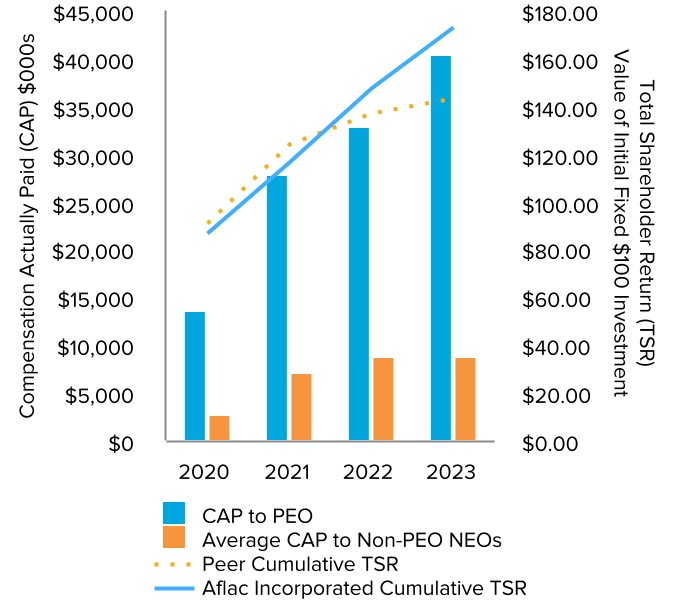
CAP vs. Company Net Income 
CAP vs. Adjusted Return on Equity 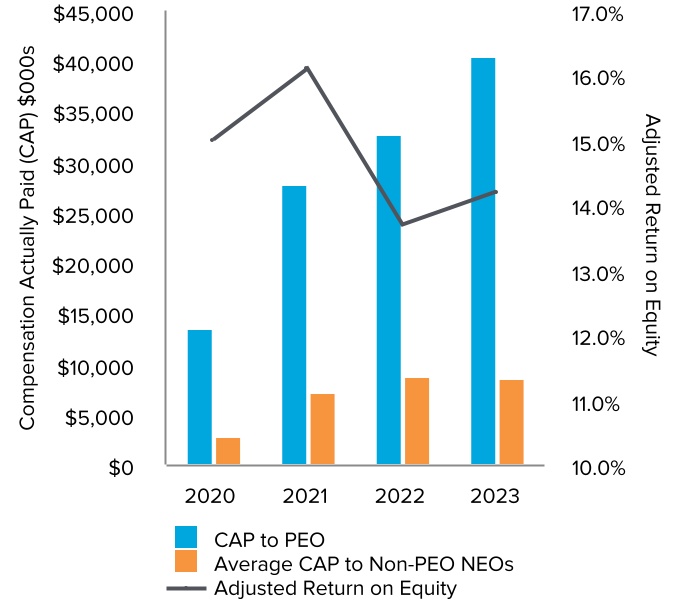
Seven Most Important Company Performance Measures for Determining NEO Compensation: 76 AFLAC INCORPORATED EXECUTIVE COMPENSATION 2020.Plan Category Number of Securities
to be Issued
Upon Exercise
of Outstanding
Options, Warrants
and Rights
(a) Weighted-Average
Exercise Price
of Outstanding
Options, Warrants
and Rights
(b) Number of Securities
Remaining Available for
Future Issuance Under
Equity Compensation
Plans Excluding Securities
Reflected in Column(a)
(c) Equity Compensation Plans Approved by Shareholders 3,045,335 $30.25 37,981,226 * Equity Compensation Plans Not Approved by Shareholders — — — Total 3,045,335 $30.25 37,981,226 *Of the shares listed in column (c), 33,738,935 shares are available for grant other than in the form of options, warrants, or rights (i.e., in the form of restricted stock or restricted stock units).
2023.2021 Proxy Statement61Plan Category Number of Securities
to be Issued
Upon Exercise
of Outstanding
Options, Warrants
and Rights
(a)Weighted-Average
Exercise Price
of Outstanding
Options, Warrants
and Rights
(b)Number of Securities
Remaining Available for
Future Issuance Under
Equity Compensation
Plans Excluding Securities
Reflected in Column(a)
(c)Equity Compensation Plans Approved by Shareholders 1,050,774 $32.90 34,752,112 * Equity Compensation Plans Not Approved by Shareholders — — — Total 1,050,774 $32.90 34,752,112 2024 PROXY STATEMENT 77
AUDIT MATTERS20212024 Annual Meeting of Shareholders. These representatives may make a statement if they desire to do so, and will be available to respond to appropriate questions. 2020
($) 2019
($)Audit fees — Audit of the Company’s consolidated financial statements for the years ended December 31(1) 8,280,126 8,806,395 Audit-related fees(2) 753,200 802,700 Tax fees(3) 43,170 2,106 All Other fees — — Total fees: 9,076,496 9,611,201 (1)Includes $777,078 and $1,043,848, respectively, for the 2020 and 2019 audits of Aflac Japan regulatory financial statements.(2)Includes fees relating to audits of the Company’s benefit plans, service organization control reports, accounting consultations in connection with proposed transactions or emerging accounting standards and other attestation reports.(3)Tax fees include all services performed by professional staff in the independent Accountant’s tax division for tax return and related compliance services, except for those tax services related to the integrated audit.2023
($)2022
($)10,255,467 10,835,331 942,500 889,500 100,000 160,000 — — Total fees: 11,297,967 11,884,831 62Aflac Incorporated78 AFLAC INCORPORATED AUDIT MATTERS Audit Matters2020,2023, the Audit and Risk Committee met twelvenine times. During these meetings committee members reviewed and discussed a variety of topics with management, KPMG (the Company’s independent registered public accounting firm), the internal auditors, the chief risk officer, the general counsel, the global security and chief information security officer, and others, including the Company’s earnings releases and SEC filings related to quarterly and annual financial statements, statutory insurance financial statement filings, and the Company’s system of internal control over financial reporting, including information security policies.2020,2023, as well as reports issued by KPMG related to its audit of the consolidated financial statements and the effectiveness of internal control over financial reporting.considers considers:2020.2023. Although the Audit and Risk Committee has the sole authority to appoint the independent auditors, the Audit and Risk Committee will continue its long-standing practice of recommending that the Board ask the shareholders to ratify this appointment for 20212024 (see Ratification of Appointment of Independent Registered Public Accounting Firm (Proposal 3)).AUDIT MATTERS 2024 PROXY STATEMENT 79 lettercommunications from KPMG required by applicable requirements of the PCAOB regarding the independent auditors’ communications with the Audit and Risk Committee concerning independence, and has discussed with KPMG its independence.20202023 was compatible with its independence.2020,2023, for filing with the SEC.14.
Karole F. Lloyd, Chair
W. Paul Bowers
Georgette D. Kiser
Joseph L. Moskowitz2021 Proxy Statement63Audit Mattersor ratify any such transactions. Pursuant to the policy, the Audit and Risk Committee will review any transaction in which the Company is or will be a participant and the amount involved exceeds $120,000 in any fiscal year, and in which any of the following had, has, or will have a direct or indirect material interest: (i) a Director or Director nominee, (ii) an executive officer, (iii) a holder of more than 5% of the Company’s outstanding shares, (iv) an immediate family member of any of these persons, or (v) any firm, corporation, or other entity in which one of these persons is employed or is a general partner or principal or in a similar position, or in which such person has a 5% or greater beneficial interest. During its review, the Audit and Risk Committee considers a number of factors, including whether the related person transaction is on terms no less favorable to the Company than may reasonably be expected in arm’s-length transactions. The Audit and Risk Committee will only approve or ratify those transactions that it determines in good faith are in, or are not inconsistent with, the best interests of the Company and its shareholders.ratifiedapproved by the Audit and Risk Committee:Chuo Real EstateChuo-Nittochi Co., Ltd. The current lease has a term of 2 years.ends May 31, 2024. Mr. Toshihiko Fukuzawa, who serveswhose service on the Company’s Board concluded on May 1, 2023, has been a Senior Advisor of Chuo-Nittochi Co., Ltd., since June 2022. He was appointedthe Deputy President and Representative Director of Chuo-Nittochi Co., Ltd., from April 2021 to June 2022. Previously, Mr. Fukuzawa served as President and CEO of Chuo Real Estate Co., Ltd., a predecessor in interest to Chuo-Nittochi Co., Ltd., from July 2018.2018 to March 2021. The lease was in place prior to Mr. Fukuzawa’s service with Chuo Real Estate Co., Ltd., and he had no involvement in negotiations of the lease or in Aflac Japan’s decision to lease space in the Marunouchi Center Building. Mr. Fukuzawa receives no compensation from either the Company or Chuo Real Estate Co., Ltd. related to the lease. At the 20202023 weighted average rate of 106.86140.57 yen to the dollar, Aflac Japan paid the yen equivalent of $2,286,691$2,063,120 in rent under the lease during the 20202023 calendar year.80 AFLAC INCORPORATED AUDIT MATTERS and Treasurer of the Company. His spouse, Sabrina Pasini Brodén, has been employed with Aflac since January 2019. Prior to her employment with Aflac,that, she was an independent consultant in the marketing department. She is currently a CustomerSenior Manager, Lead Generation and User Experience Consultant.Experience. In 2020,2023, her total compensation, including salary, bonuses commissions to the employment agency and other benefits, was $128,087.$187,196. The compensation for Sabrina Pasini Brodén is commensurate with that of her peers.iswas the Executive Vice President, Chief Financial Officer of Aflac Japan. His spouse, Amy Jarreau Daniels, has been an employee of Aflac since April 2014. She is currently employed as a Sales Manager I. In 2020,2023, her total compensation, including salary, bonuses and other benefits, was $722,879.$775,767. The variable compensation structure for Amy Jarreau Daniels is commensurate with that of her peers.On and Aflac Japan and Japan Post Holdings Co., Ltd. (“Japan Post Holdings”) entered into a Basic Agreement regarding the “Strategic Alliance Based on Capital Relationship.” Pursuant to the Basic Agreement, Japan Post Holdings committed to acquire approximately 7% of the outstanding shares of the Company’s Common Stock via a trust and to treat the Company as an equity-method affiliate after application of time-phased voting rights (see the “10-for-1 rule” (the rule included in the Company’s Articles“Description of Incorporation, as amended, pursuant to which, and subject to certain limited exceptions, each Common Share is entitled to ten votes after it has been heldVoting Rights” section below for 48 consecutive months by the same beneficial owner)additional information). Further, Japan Post Holdings and Aflac Japan agreed to reconfirm existing initiatives regarding cancer insurance and make reasonable efforts to further develop initiatives related to the continued growth of cancer insurance sales, such as positioning Aflac Japan cancer insurance as a product as important as Japan Post Insurance Co., Ltd (“JPI”) products in the sales strategies of Japan Post Holdings, Japan Post Co., Ltd. (“JPC”) and JPI, and promoting cancer insurance sales and managing promotion based on established sales targets. Under the Basic Agreement, Japan Post Holdings and Aflac Japan also agreed to consider new joint initiatives, including leveraging digital technology in various processes, cooperating in new product development to promote customer-centric business management, cooperating in domestic and/or overseas business expansion and joint investment in third party entities and cooperating with regard to asset management.64Aflac IncorporatedAudit Mattersand certainCorporation, solely in its capacity as trustee (the Trustee) of its affiliates. Pursuant to the Shareholders Agreement, Japan Post Holdings agreed to cause the J&A Alliance Trust, a New York voting trust (the “Trust”); and General Incorporated Association J&A Alliance (“General Incorporated”). Pursuant to the Shareholders Agreement, the Trustee agreed to use commercially reasonable efforts to acquire, through open market or private block purchases in the United States, beneficial ownership of approximately 7% of the Company’s Common Stock in connection with the Basic Agreement. According to a Schedule 13G/A filed by Japan Post Holdings with the SEC on January 6, 2021, as of December 31, 2020 the Trust had beneficially acquired 7.45% of the number of shares of Common SharesStock outstanding on October 19, 2020. Japan Post Holdings is the sole beneficiary of the Trust. in Japan and, among other things, provide supplemental support necessary or beneficial to effectuating the sale and servicing of such policies. Aflac Japan’s cancer insurance policies issued pursuant to these contractual arrangements constituted approximately 4.4%4.9% of Aflac Japan’s earned premium for 2020,2023, representing approximately 3.1%3.0% of Aflac Incorporated’s total consolidated earned premium for 2020.2023. In exchange for facilitating such sales and other services including JPI’s acting as reinsurer for a certain percentage of the underwriting risk for Aflac Japan cancer insurance sold by JPC and JPI, affiliates of Japan Post Holdings collectively received approximately $101$78 million in commission and other payments from Aflac Japan and its affiliates during 2020.
2023.2021 Proxy Statement652024 PROXY STATEMENT 81
STOCK OWNERSHIP23, 2021,27, 2024, no person was the owner of record or, to the knowledge of the Company, beneficial owner of more than 5% of the outstanding shares of Common Stock or of the available votes of the Company other than as shown below.Name and Address of Beneficial Owner Title of Class
Common
Stock Amount of
Beneficial
Ownership
Shares Amount of
Beneficial
Ownership
Votes Percent of
Class Percent of
Available
Votes J&A Alliance Holdings Corporation*
1007 Fukoku Seimei Building
2-2-2 Uchisaiwai-cho, Chiyoda-ku
Tokyo 100-0011, Japan 1 Vote Per
Share 52,300,000 52,300,000 7.6 4.7 BlackRock, Inc.*
55 East 52nd Street
New York, NY 10055 1 Vote Per
Share 45,522,910 45,522,910 6.6 4.1 The Vanguard Group*
100 Vanguard Boulevard
Malvern, PA 19355 1 Vote Per
Share 59,888,649 59,888,649 8.7 5.4 State Street Corporation*
State Street Financial Center
One Lincoln Street
Boston, MA 02111 1 Vote Per
Share 34,135,472 34,135,472 5.0 3.1 *The above information is derived from Schedule 13G filings filed with the Securities and Exchange Commission, dated January 6, 2021, by J&A Alliance Holdings Corporation, dated January 29, 2021, by BlackRock, Inc., dated February 10, 2021, by The Vanguard Group, and dated February 12, 2021, by State Street Corporation. According to the Schedule 13G filings: J&A Alliance Holdings Corporation, has shared voting power with respect to 52,300,000 shares; BlackRock, Inc., has sole voting power with respect to 39,235,646 shares and sole dispositive power with respect to 45,522,910 shares; The Vanguard Group has shared voting power with respect to 1,080,868 shares, sole dispositive power with respect to 56,940,688 shares and shared dispositive power with respect to 2,947,961 shares; and State Street Corporation has shared voting power with respect to 30,600,239 shares and shared dispositive power with respect to 34,107,499 shares.66Aflac IncorporatedName and Address of Beneficial Owner Title of Class
Common StockAmount of
Beneficial
Ownership
SharesAmount of
Beneficial
Ownership
Votes
Class(2)
Available
Votes(3)
100 Vanguard Boulevard
Malvern, PA 193551 Vote Per Share 52,438,841 52,438,841 9.1 3.8
1007 Fukoku Seimei Building
2-2-2 Uchisaiwai-cho, Chiyoda-ku
Tokyo 100-0011, Japan1 Vote Per Share 52,300,000 523,000,000 9.1 20.0
50 Hudson Yards
New York, NY 100011 Vote Per Share 42,164,887 42,164,887 7.3 3.0 TableContentsOwnershipnominee:Name Shares of Common Stock
Beneficially Owned on
February 23, 2021(1) Percent of
Outstanding
Shares Voting Rights on
February 23,
2021 Percent of
Available
Votes Daniel P. Amos 4,642,443 .7 34,708,192 3.1 W. Paul Bowers 38,403 * 206,911 * Toshihiko Fukuzawa 3,012,814 .4 30,012,814 2.6 Thomas J. Kenny 30,107 * 163,905 * Georgette D. Kiser 7,077 * 7,077 * Karole F. Lloyd 33,646 * 145,984 * Nobuchika Mori 3,738 * 3,738 * Joseph L. Moskowitz 58,349 * 233,183 * Barbara K. Rimer, DrPH 125,731 * 730,558 .1 Katherine T. Rohrer 12,990 * 12,990 * Melvin T. Stith 42,251 * 291,506 * *Percentage not listed if less than .1%.(1)Includes 526,588 shares of restricted stock awarded under the Long-Term Incentive Plan for Daniel P. Amos that he has the right to vote. These shares will vest three years from the date of grant if the Company attains certain performance goals. Includes options to purchase shares, which are exercisable within 60 days for: Joseph L Moskowitz, 41,729 and Barbara K. Rimer, DrPH, 97,322. Also includes shares of restricted stock awarded under the Long-Term Incentive Plan for Toshihiko Fukuzawa, Georgette D. Kiser, Karole F. Lloyd, Barbara K. Rimer, DrPH, Katherine T. Rohrer, and Melvin T. Stith 4,430 each, W. Paul Bowers, 6,144, Nobuchika Mori, 3,738, and Joseph L. Moskowitz, 2,215, for which these individuals have the right to vote. These shares will vest one year from the date of grant.Name
Beneficially Owned(1)Percent of
Outstanding SharesPercent of
Available VotesDaniel P. Amos 3,076,179 .5 17,749,509 1.3 W. Paul Bowers 61,817 * 335,616 * Arthur R. Collins 5,592 * 5,592 * Miwako Hosoda 5,014 * 5,014 * Thomas J. Kenny 22,778 * 136,546 * Georgette D. Kiser 15,377 * 15,377 * Karole F. Lloyd 44,896 * 44,896 * Nobuchika Mori 11,106 * 11,106 * Joseph L. Moskowitz 60,164 * 260,891 * Barbara K. Rimer, DrPH 73,965 * 502,194 * Katherine T. Rohrer 19,240 * 19,240 * following shares:•Daniel P. Amos: 5,017 shares owned by his spouse; 936,826 shares owned by a partnership of which he is a partner; 908,632 shares owned by trusts of which he is trustee; 444,708 shares owned by the Daniel P. Amos Family Foundation, Inc.; 1,173,439 owned by the Soma Foundation, Inc.•Toshihiko Fukuzawa: 3,000,000 shares owned by The Mizuho Trust & Banking Co., Ltd. Mr. Fukuzawa represents the power to vote these shares.
Long-Term Incentive Plan in 2023 for Arthur R. Collins, Thomas J. Kenny, Georgette D. Kiser, Karole F. Lloyd, Nobuchika Mori, Joseph L. Moskowitz, Barbara K. Rimer, DrPH, and Katherine T. Rohrer, 2,386 each; W. Paul Bowers, 5,640; and Miwako Hosoda, 5,014, for which these individuals have the right to vote. These shares will vest one year from the date of grant. For Daniel P. Amos, includes 5,051 shares owned by his spouse; 941,326 shares owned by a partnership of which he is a partner; and 908,632 shares owned by trusts of which he is trustee. No Director has any pledged shares.2021 Proxy Statement6782 AFLAC INCORPORATED STOCK OWNERSHIP Stock Ownership23, 2021,27, 2024, the number of shares and percentage of outstanding shares of Common Stock beneficially owned by: (i) our named executive officers, comprising our CEO, CFO, and the three other most highly compensated executive officers as listed in the Executive Compensation section of this Proxy Statement whose information was not provided under the heading “Proposal 1: Election of Directors,” and (ii) all Directors, nominees and executive officers as a group.COMMON STOCK BENEFICIALLY OWNED AND APPROXIMATE PERCENTAGE OF CLASS AS OF FEBRUARY 23, 2021Name Shares(1) Percent of
Shares Votes Percent of
Votes Max K. Brodén 81,108 * 81,108 * Frederick J. Crawford 399,834 .1 1,189,710 .1 Eric M. Kirsch 296,568 * 640,638 .1 Audrey Boone Tillman 353,907 .1 1,147,185 .1 All Directors, nominees, and executive officers as a group (22 individuals) 10,164,500 1.5 73,191,622 6.5 *Percentage not listed if less than .1%.(1)Includes options that are exercisable within 60 days for Max K. Brodén, 4,668; Frederick J. Crawford, 87,764; Eric M. Kirsch, 38,230; Audrey Boone Tillman, 88,138; and for all Directors and executive officers as a group to purchase 594,063 shares. Includes the following shares of restricted stock awarded under the Long-Term Incentive Plan: in 2019, 2020 and 2021 for Max K. Brodén, 59,264; Frederick J. Crawford, 123,572; Eric M. Kirsch, 81,292; and Audrey Boone Tillman, 101,006. These shares will vest 3 years from the date of grant if the Company attains certain performance goals. Also includes shares of restricted stock awarded under the Long-Term Incentive Plan for all Directors and executive officers as a group of 1,292,905. The grantees have the right to vote their restricted stock, but they may not transfer the shares until they have vested. No Director nominee or executive officer has any pledged shares. For information on the Company’s pledging policy, please see “Stock Ownership Guidelines; Hedging and Pledging Restrictions” on page 48.Name
Beneficially Owned(1)Percent of
Outstanding SharesPercent of
Available VotesMax K. Brodén 171,017 * 213,029 * Frederick J. Crawford 189,645 * 189,645 * Bradley E. Dyslin 39,761 * 39,761 * Audrey Boone Tillman 371,752 .1 768,348 .1 4,648,120 .8 21,087,701 1.5 Dr. Barbara K. Rimer, a Director,Frederic Jean Guy Simard, an executive officer, did not timely report the saleon Form 4 a purchase of 1,005122 shares of stockthe Company’s Common Stock executed on December 11, 2020.November 9, 2023 in his 401(k) Plan. A Form 4 forreporting this transaction was filed on December 16, 2020.
8, 2023.68Aflac Incorporated2024 PROXY STATEMENT 83
OF PROXYSolicitation and Revocation of Proxy3, 20216, 2024 for the purposes set forth in the accompanying Notice of Annual Meeting and described in detail herein, and any adjournment of that meeting. The Annual Meeting will be held at 10 a.m. Eastern Time. We continue to monitor developments regarding the coronavirus (COVID-19). In the interest of the health and well-being of our shareholders, the Annual Meeting will be heldTime solely by means of remote communication in a virtual meeting format. Details on how to participate are available at www.virtualshareholdermeeting.com/AFL2021AFL2024 and investors.aflac.com.18, 2021.20202023 (“Annual Report”) instead of paper copies of those documents. The notice contains instructions on how to access our reports online, how to vote at proxyvote.com, and how to request and receive a paper copy of our proxy materials, including this Proxy Statement and our Annual Report. If you select the online access option for the Proxy Statement, Annual Report, and other account mailings, you will receive an electronic notice of availability of your proxy materials. If you do not receive a notice and did not already elect online access, you will receive a paper copy of the proxy materials by mail.2021 Proxy Statement6984 AFLAC INCORPORATED SOLICITATION AND REVOCATION OF PROXY Solicitation and Revocation of Proxyvotes.votes (“long-term shares”). If a share is transferred by gift, devise, or bequest, or otherwise through the laws of inheritance, descent, or distribution from the estate of the transferor, or by distribution to a beneficiary of shares held in trust, the transferee is deemed to be the same beneficial owner as the transferor for purposes of determining the number of votes per share. Shares acquired as a direct result of a stock split, stock dividend, or other distribution with respect to existing shares are deemed to have been acquired and held continuously from the date on which the underlying shares were acquired. Shares of Common Stock acquired pursuant to the exercise of a stock option are deemed to have been acquired on the date the option was granted.have been heldbe short-term shares (held for less than 48 monthsmonths) and are entitled to one vote per share unless this presumption is rebutted by evidence to the contrary. If you wish to demonstrate that you have held your Common Stock in street name for longer than 48 months, please complete and execute the affidavit appearing on the reverse side of your proxy. The Board may require evidence to support the affidavit.23, 2021,27, 2024, will be entitled to vote at the Annual Meeting. At that date, the number of outstanding shares of Common Stock entitled to vote was 687,600,156.575,408,110. According to the Company’s records, this represents the following voting rights:Number of shares Votes per share Yields this many votes 640,276,788 @ 1 = 640,276,788 47,323,368 @ 10 = 473,233,680 687,600,156 Total 1,113,510,468 Number of shares Votes per share Yields this many votes 484,220,652 @ 1 = 484,220,652 91,187,460 @ 10 = 911,874,600 575,408,110 Total 1,396,095,252 6,876,001,560.5,754,081,100. However, for purposes of this Proxy Statement, we assume that the total number of votes that may be cast at the Annual Meeting will be 1,113,510,468.70Aflac IncorporatedSOLICITATION AND REVOCATION OF PROXY 2024 PROXY STATEMENT 85 Solicitation and Revocation of ProxyProposal Vote required to Pass Effect of abstentions and broker non-votes Uncontested election of directors Votes cast for a nominee exceed votes cast against that nominee Abstentions and broker non-votes are not counted as votes cast and have no effect Advisory say-on-pay Majority of the votes cast Abstentions and broker non-votes are not counted as votes cast and have no effect Ratification of the Independent Registered Public Accounting Firm Majority of the votes cast Abstentions are not counted as votes cast and have no effect. Brokers and other nominees may vote without instructions with respect to this proposal, so we do not expect broker non-votes. werewas made, publicly disclose that decision in a Form 8-K filed with the SEC, together with a full explanation of the process by which the decision was made and, if applicable, the reasons for rejecting the tendered resignation. If there were a nominee who was not already serving as a Director, and that individual was not elected at the Annual Meeting, that nominee would not become a Director or a holdover director.2021 Proxy Statement7186 AFLAC INCORPORATED 20212024 Annual Meeting other than those referred to in this Proxy Statement. If any other matter should come before the Annual Meeting, the people named in the accompanying proxy (or their substitutes) intend to vote the proxies in accordance with their best judgment.20222025 Annual Meeting20222025 Proxy Materials20222025 Annual Meeting of Shareholders, the proposal must be received at the address provided below byon or before November 18, 2021.20222025 Proxy Materials Pursuant to our Proxy Access Bylaw20222025 Annual Meeting of Shareholders, notice of a proxy access nomination must be received at the address provided below between October 19, 2021,22, 2024, and November 18, 2021.20222025 Annual Meeting20222025 Annual Meeting of Shareholders, notice of such proposals or nominations must be received at the address provided below between January 3, 2022,6, 2025, and February 2, 2022.5, 2025. In the unlikely event the Company moves the 20222025 Annual Meeting of Shareholders to a date that is more than 25 days before or after the date that is the one-year anniversary of this year’s Annual Meeting date (i.e., May 3, 2021)6, 2024), the Company must receive such notice no later than the close of business on the 10th 10th day following the day on which notice of the meeting date is first mailed to shareholders or the Company makes a public announcement of the meeting date, whichever occurs first.20222025 Annual Meeting of Shareholders (whether or not intended for inclusion in our proxy materials) must be submitted in writing to our Corporate Secretary at Aflac Incorporated, 1932 Wynnton Road, Columbus, Georgia 31999.72Aflac IncorporatedOTHER MATTERS 2024 PROXY STATEMENT 87 TableContentsOther Matters20202023 Annual Report on Form 10-K to each shareholder entitled to vote at the 20212024 Annual Meeting of Shareholders. It is also available via the Internet by going to https://investors.aflac.com and selecting “SEC Filings” under the “Financials” section as well as at the website of the United States Securities and Exchange Commission at www.sec.gov. For a printed copy, contact Shareholder Services by phone at (706) 596-3581, by email at shareholder@aflac.com, or by mail at:20212024 Annual Meeting on May 3, 2021.6, 2024. For more information on voting and attending the virtual Annual Meeting, please see the “Notice of 20212024 Annual Meeting of Shareholders” and the “Attending the Virtual Annual Meeting” sections.

CorporateSecretary
March 18, 2021
21, 20242021 Proxy Statement7388 AFLAC INCORPORATED AppendixAPPENDIX A – Definition of Non-U.S.DEFINITION OF NON-U.S. GAAP Measures and Reconciliations to CorrespondingMEASURES AND RECONCILIATIONS TO CORRESPONDING U.S. GAAP MeasuresThe Proxy StatementMEASURESmeasures; adjusted earnings; adjusted earnings per diluted share, excluding current period foreign currency impact; adjusted revenues, excluding current period foreign currency impact; amortized hedge costs/income; and adjusted return on equity (“AROE”). (References in this Proxy Statement such as “currency-neutral” or “excluding the impact of foreign currency” are synonymous with “excluding foreign currency impact.”) These measures which are not calculated in accordance with “U.S. GAAP,” but this appendix provides reconciliations to each of the most comparable U.S. GAAP measures.TheseUnited States generally accepted accounting principles (U.S. GAAP) (non-U.S. GAAP). The financial measures exclude items that the Company believes may obscure the underlying fundamentals and trends in insurance operations because they tend to be driven by general economic conditions and events or are related to infrequent activities not directly associated with insurance operations. The Company’s management uses adjusted earnings and adjusted earnings per diluted share, excluding foreign currency impact, to evaluate the financial performance of the Company’s insurance operations on a consolidated basis, and believes that a presentation of these measures is vitally important to an understanding of the underlying profitability drivers and trends of the Company’s insurance business.The Company defines adjusted earnings as the profits derived from operations. The most comparable U.S. GAAP measure is net earnings. Adjusted earnings are adjusted revenues less benefits and adjusted expenses. The adjustments to both revenues and expenses account for certain items that cannot be predicted or that are outside management’s control. Adjusted revenues are U.S. GAAP total revenues excluding net investment gains and losses, except for amortized hedge costs/income related to foreign currency exposure management strategies and net interest cash flows from derivatives associated with certain investment strategies. Adjusted expenses are U.S. GAAP total acquisition and operating expenses including the impact of interest cash flows from derivatives associated with notes payable but excluding any nonrecurring or other items not associated with the normal course of the Company’s insurance operations and that do not reflect the Company’s underlying business performance.Amortized hedge costs/income represent costs/income incurred or recognized as a result of using foreign currency derivatives to hedge certain foreign exchange risks in the Company’s Japan segment or in the Corporate and Other segment. These amortized hedge costs/income are estimated at the inception of the derivatives based on the specific terms of each contract and are recognized on a straight line basis over the term of the hedge. There is no comparable U.S. GAAP financial measure for amortized hedge costs/income. The Company believes that amortized hedge costs/income, which are a component of adjusted earnings, measure the periodic currency risk management costs/income related to hedging certain foreign currency exchange risks and are an important component of net investment income.Adjusted return on equity (ROE) excluding foreign currency impact is calculated using adjusted earnings excluding current period foreign currency impact divided by average shareholders’ equity, excluding accumulated other comprehensive income. The most comparable U.S. GAAP financial measure is return on average equity as determined using net earnings and average total shareholders’ equity.Adjusted earnings excluding current period foreign currency impact are computed using the average foreign currency exchange rate for the comparable prior-year period, which eliminates fluctuations driven solely by foreign currency exchange rate changes. The most comparable U.S. GAAP measure is net earnings.Adjusted earnings per diluted share excluding current period foreign currency impact are adjusted earnings excluding current period foreign currency impact divided by the weighted average outstanding diluted shares for the period presented. The most comparable U.S. GAAP measure is net earnings per share.74Aflac IncorporatedAppendix – Definition of Non-U.S. GAAP Measures and Reconciliations to Corresponding U.S. GAAP MeasuresAdjusted revenues, excluding current period foreign currency impact are adjusted revenues calculated using the average foreign currency exchange rate for the comparable prior year period, which eliminates fluctuations driven solely by foreign currency exchange rate changes. The most comparable U.S. GAAP measure is total revenues.whosewhere the functional currency is the Japanese yen, fluctuations in the yen/dollar exchange rate can have a significant effect on the Company’s reported results. In periods when the yen weakens, translating yen into dollars results in fewer dollars being reported. When the yen strengthens, translating yen into dollars results in more dollars being reported. Consequently, yen weakening has the effect of suppressing current period results in relation to the comparable prior period, while yen strengthening has the effect of magnifying current period results in relation to the comparable prior period. A significant portion of the Company’s business is conducted in yen and never converted into dollars but translated into dollars for U.S. GAAP reporting purposes, which results in foreign currency impact to earnings, cash flows and book value on a U.S. GAAP basis. Management evaluates the Company’s financial performance both including and excluding the impact of foreign currency translation to monitor, respectively, cumulative currency impacts on book value and the currency-neutral operating performance over time.APPENDIX A - DEFINITION OF NON-U.S. GAAP MEASURES AND RECONCILIATIONS TO CORRESPONDING U.S. GAAP MEASURES 2024 PROXY STATEMENT 89 90 AFLAC INCORPORATED APPENDIX A - DEFINITION OF NON-U.S. GAAP MEASURES AND RECONCILIATIONS TO CORRESPONDING U.S. GAAP MEASURES current period foreign currency, impact, to the most directly comparable U.S. GAAP measures for the years ended December 31, 20202023 and 2019.RECONCILIATION OF U.S. GAAP NET EARNINGS TO ADJUSTED EARNINGS2022.In Millions Per Diluted Share Twelve Months Ended December 31, 2023 2022 2023 2022 Net earnings $ 4,659 $ 4,418 $ 7.78 $ 6.93 Items impacting net earnings: (914) (447) (1.53) (.70) Other and non-recurring (income) loss (39) (1) (.07) .00 26 (357) .04 (.56) Adjusted earnings 3,733 3,614 6.23 5.67 113 N/A .19 N/A Adjusted earnings excluding current period foreign currency impact $ 3,847 $ 3,614 $ 6.43 $ 5.67 (EXCLUDING FOREIGN CURRENCY) In Millions Per Diluted Share Twelve Months Ended December 31, 2020 2019 2020 2019 Net earnings $ 4,778 $ 3,304 $ 6.67 $ 4.43 Items impacting net earnings: Net investment (gains) losses(2),(3),(4),(5) 229 15 .32 .02 Other and non-recurring (income) loss 28 1 .04 .00 Income tax (benefit) expense on items excluded from adjusted earnings (72 ) (3 ) (.10 ) .00 Tax reform adjustment(6) 0 (4 ) .00 (.01 ) Tax valuation allowance release(7) (1,411 ) 0 (1.97 ) .00 Adjusted earnings 3,552 3,314 4.96 4.44 Current period foreign currency impact(8) (31 ) N/A (.04 ) N/A Adjusted earnings excluding current period foreign currency impact $ 3,521 $ 3,314 $ 4.92 $ 4.44 (1)Amounts may not foot due to rounding.(2)Amortized hedge costs of $206 in 2020 and $257 in 2019, related to certain foreign currency exposure management strategies have been reclassified from net investment gains (losses) and included in adjusted earnings as a decrease to net investment income.(3)Amortized hedge income of $97 in 2020 and $89 in 2019, related to certain foreign currency exposure management strategies have been reclassified from realized investment gains (losses) and included in adjusted earnings as increase to net investment income.(4)Net interest cash flows from derivatives associated with certain investment strategies of $12 in 2020 and $(17) in 2019 have been reclassified from net investment gains (losses) and included in adjusted earnings as a component of net investment income.(5)A gain of $56 in 2020 and $66 in 2019, respectively, related to the interest rate component of the change in fair value of foreign currency swaps on notes payable have been reclassified from net investment gains (losses) and included in adjusted earnings as a component of interest expense.(6)The impact of Tax Reform was adjusted in 2019 as a result of additional guidance released by the IRS.(7)One-time tax benefit recognized in 2020 representing the release of valuation allowances on deferred foreign tax credits due to new tax regulations(8)Prior period foreign currency impact reflected as “N/A” to isolate change for current period only.
See reconciliation of net investment (gains) losses to adjusted net investment (gains) losses below.2021 Proxy Statement75RECONCILIATION OF U.S. GAAP NET INVESTMENT (GAINS) LOSSES TO ADJUSTED NET INVESTMENT (GAINS) LOSSES In Millions Twelve Months Ended December 31, 2023 2022 Net investment (gains) losses $ (590) $ (363) Items impacting net investment (gains) losses: Amortized hedge costs (157) (112) Amortized hedge income 121 68 Net interest cash flows from derivatives associated with certain investment strategies (328) (90) Interest rate component of the change in fair value of foreign currency swaps on notes payable 41 50 Adjusted net investment (gains) losses $ (914) $ (447) RECONCILIATION OF U.S. GAAP NET INVESTMENT INCOME TO ADJUSTED NET INVESTMENT INCOME In Millions Twelve Months Ended December 31, 2023 2022 Net investment income $ 3,811 $ 3,656 Items impacting net investment income: Amortized hedge costs (157) (112) Amortized hedge income 121 68 Net interest cash flows from derivatives associated with certain investment strategies (328) (90) Adjusted net investment income $ 3,447 $ 3,522 APPENDIX A - DEFINITION OF NON-U.S. GAAP MEASURES AND RECONCILIATIONS TO CORRESPONDING U.S. GAAP MEASURES 2024 PROXY STATEMENT 91 Twelve Months Ended December 31, 2023 2022 22.1 % 23.8 % Impact of excluding unrealized foreign currency translation gains (losses) (3.1) % (2.5) % Impact of excluding unrealized gains (losses) on securities and derivatives .2 % 4.1 % Impact of excluding effect of changes in discount rate assumptions (1.9) % (8.2) % Impact of excluding pension liability adjustment — % (.1) % Impact of excluding AOCI (4.9) % (6.8) % U.S. GAAP ROE - less AOCI 17.2 % 17.0 % (3.4) % (3.1) % Adjusted ROE - reported 13.8 % 13.9 % (.4) % N/A Adjusted ROE, excluding impact of foreign currency 14.2 % 13.9 % Appendix – Definition of Non-U.S. GAAP Measures and Reconciliations to Corresponding MeasuresRECONCILIATION OF U.S. GAAP RETURN ON EQUITY (ROE) TO ADJUSTED ROE is calculated by dividing net earnings (annualized) by average shareholders’ equity.In Millions Twelve Months Ended December 31, 2023 2022 Total Revenues - U.S. GAAP $ 18,701 $ 19,140 Add: Total U.S. GAAP Realized Losses (590) (363) Add: Realized capital gain/loss items included in Adjusted Revenue Amortized hedge costs (157) (112) Amortized hedge income 121 68 Interest cash flows on derivatives associated with investment strategies (328) (90) Differences between adjusted revenues and total revenues Adjusted revenues $ 17,747 $ 18,643 (729) N/A Adjusted revenues, excluding foreign currency impact $ 18,476 $ 18,643 (EXCLUDING FOREIGN CURRENCY)Twelve Months Ended December 31, 2020 2019 Net earnings - U.S. GAAP ROE(2) 15.3 % 12.6 % Impact of excluding unrealized foreign currency translation gains (losses) (0.9 ) (1.0 ) Impact of excluding unrealized gains (losses) on securities and derivatives 6.2 3.6 Impact of excluding pension liability adjustment (0.2 ) (0.1 ) Impact of excluding AOCI 5.1 2.5 U.S. GAAP ROE - less AOCI 20.3 15.1 Differences between adjusted earnings and net earnings(3) (5.2 ) — Adjusted ROE - reported 15.1 15.2 Less: Impact of foreign currency(4) 0.1 N/A Adjusted ROE, excluding impact of foreign currency 15.0 15.2 (1)Amounts presented may not foot due to rounding.(2)U.S. GAAP ROE is calculated by dividing net earnings (annualized) by average shareholders’ equity.(3)See separate reconciliation of net earnings to adjusted earnings.(4)Impact of foreign currency is calculated by restating all yen components of the income statement to the weighted average yen rate for the comparable prior year period. The impact is the difference of the restated adjusted earnings compared to reported adjusted earnings. For comparative purposes, only current period income is restated using the weighted average prior period exchange rate, which eliminates the foreign currency impact for the current period. This allows for equal comparison of this financial measure.RECONCILIATION OF U.S. GAAP TOTAL REVENUES TO ADJUSTED REVENUES(1)(EXCLUDING CURRENT PERIOD FOREIGN CURRENCY IMPACT)Twelve Months Ended December 31, 2020 2019 Total Revenue - U.S. GAAP $ 22,147 $ 22,307 Add: Total U.S. GAAP Net Investment Losses 270 135 Add: Net investment gain/loss items included in Adjusted Revenue Amortized hedge (costs)/income (109 ) (168 ) Interest cash flows on derivatives associated with investment strategies 12 (17 ) Differences between adjusted revenues and total revenues Adjusted revenues $ 22,320 $ 22,256 Less: Impact of foreign currency(2) 295 N/A Adjusted revenues, excluding foreign currency impact $ 22,025 $ 22,256 (1)Amounts presented may not foot due to rounding.(2)Impact of foreign currency is calculated by restating all yen components of the income statement to the weighted average yen rate for the comparable prior year period. The impact is the difference of the restated adjusted revenues compared to reported adjusted revenues. For comparative purposes, only current period income is restated using the weighted average prior period exchange rate, which eliminates the foreign currency impact for the current period. This allows for equal comparison of this financial measure.
Impact of foreign currency is calculated by restating all yen components of the income statement to the weighted average yen rate for the comparable prior year period. The impact is the difference of the restated adjusted revenues compared to reported adjusted revenues. For comparative purposes, only current period income is restated using the weighted average prior period exchange rate, which eliminates the foreign currency impact for the current period. This allows for equal comparison of this financial measure.76Aflac IncorporatedRECONCILIATION OF U.S. GAAP BOOK VALUE TO ADJUSTED BOOK VALUE In Millions December 31, 2023 2022 U.S. GAAP book value $ 21,985 $ 20,140 Less: Unrealized foreign currency translation gains (losses) (4,069) (3,564) Unrealized gains (losses) on securities and derivatives 1,117 (729) Effect of changes in discount rate assumptions (2,560) (2,100) Pension liability adjustment (8) (36) Total AOCI (5,520) (6,429) Adjusted book value $ 27,505 $ 26,569 92 AFLAC INCORPORATED